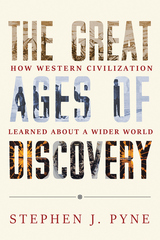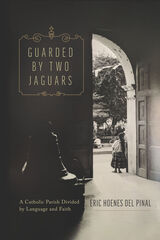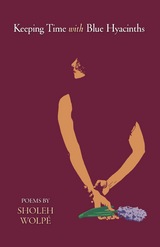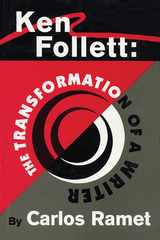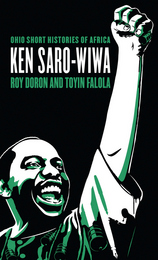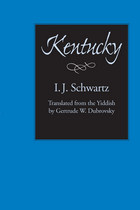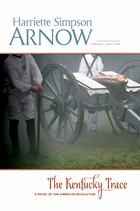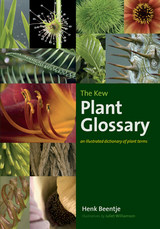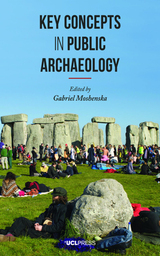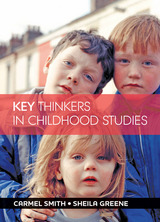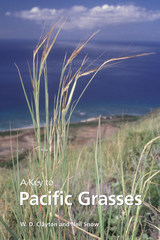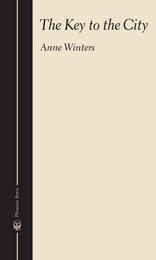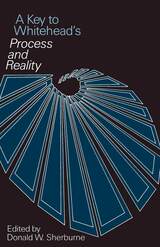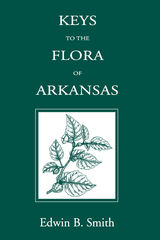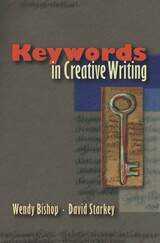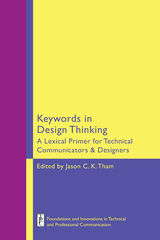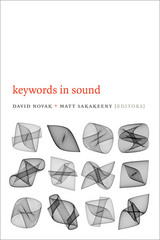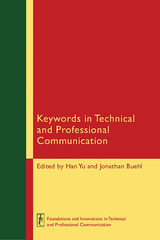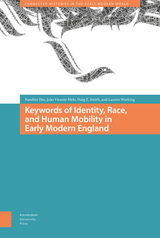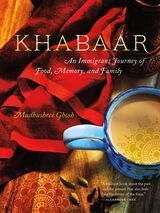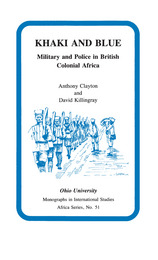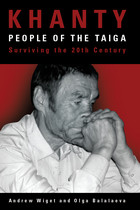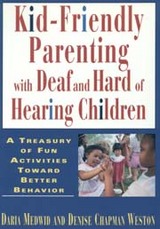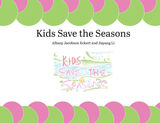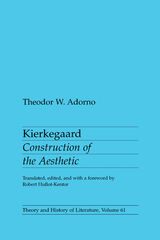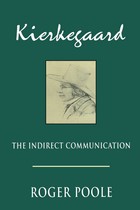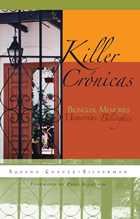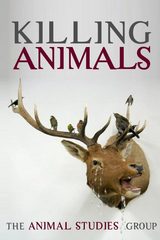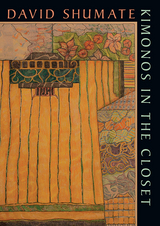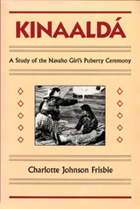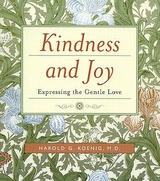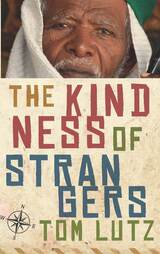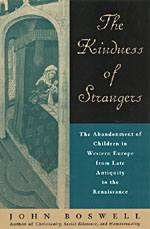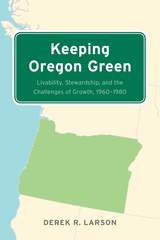 Keeping Oregon Green: Livability, Stewardship, and the Challenges of Growth, 1960–1980
Derek R. Larson
Oregon State University Press, 2016 Keeping Oregon Green is a new history of the signature accomplishments of Oregon’s environmental era: the revitalization of the polluted Willamette River, the Beach Bill that preserved public access to the entire coastline, the Bottle Bill that set the national standard for reducing roadside litter, and the nation’s first comprehensive land use zoning law, colloquially known as LDCD. To these case studies is added the largely forgotten tale of what would have been Oregon’s second National Park, intended to preserve the Oregon Dunes as one of the country’s first National Seashores. Through the detailed study of the historical, political, and cultural contexts of these environmental conflicts the author uncovers new dimensions in familiar stories linked to the concepts of “livability” and environmental stewardship. Linking events in Oregon to the national environmental awakening of the 1960s-1970s, the innovative environmental policies that carried Oregon to a position of national leadership are shown to be products of place and culture as much as politics. While political leaders played critical roles in framing new laws, the advocacy of ordinary citizens-- farmers, students, business leaders, and factory workers --drove a movement that crossed partisan, geographic, and class lines to make Oregon the nation’s environmental showplace of the 1970s. Drawing on extensive archival research, source materials ranging from poetry to congressional hearings, and firmly rooted in the cultural, economic, and political history of the Pacific Northwest, Keeping Oregon Green argues that the state’s environmental legacy is not just the product of visionary leadership, but rather a complex confluence of events, trends, and personalities that could only have happened when and where it did. The linked concepts of livability and stewardship behind Oregon’s success were not transferrable to other places or times, dooming efforts to repeat the state’s signature achievements elsewhere to failure.
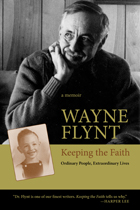 Keeping the Faith: Ordinary People, Extraordinary Lives
Wayne Flynt
University of Alabama Press, 2011 Normal0falsefalsefalseEN-USX-NONEX-NONEMicrosoftInternetExplorer4 This historical memoir by the widely recognized scholar, Wayne Flynt, chronicles the inner workings of his academic career at Samford and Auburn Universities, as well as his many contributions to the general history of Alabama. Flynt has traveled the state and the South lecturing and teaching both lay and academic groups, calling on his detailed knowledge of both the history and power structures in Alabama to reveal uncomfortable truths wherever he finds them, whether in academic institutions that fall short of their stated missions, in government and industry leaders who seek and hold power by playing to the fears and prejudices of the public, or in religious groups who abandon their original missions and instead seek financial and emotional comfort in lip service only. In doing so he has not only energized those who think the State of Alabama can and must do better, but also has earned the enmity of those who prosper, profit, and prevaricate for their own selfish ends. Nevertheless, Flynt utilizes a lifetime of learning and reflection to voice the conscience of his community. Keeping the Faith: Ordinary People, Extraordinary Lives tells the story of his life and his courageous battles against an indifferent or hostile hierarchy with modesty and honesty. In doing so he tells us how Alabama institutions really are manipulated and, more importantly, why we should care.
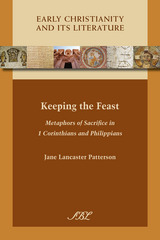 Keeping the Feast: Metaphors of Sacrifice in 1 Corinthians and Philippians
Jane Lancaster Patterson
SBL Press, 2015 Develop a keener ear for Paul’s rhetorical strategy
Patterson uses cognitive metaphor theory to trace the apostle Paul’s use of metaphors from the Jewish sacrificial system in his moral counsels to the Philippians and the Corinthians. In these letters, Paul moves from the known (the practice of sacrifice) to the unknown (how to live in accord with the life, death, and resurrection of Jesus Christ). Patterson illustrates that the significant sacrificial metaphors in 1 Corinthians and Philippians are not derived from Jewish sacrifices of atonement, but rather from the Passover and sacrifices of thanksgiving. Attention to these metaphors demonstrates that imagery drawn from these sacrifices shapes the overall moral counsel of the letters, reveals more varied and nuanced interpretations of sacrificial references in Paul’s letters, and sheds light on Paul’s continuity with Jewish cultic practice.
Features
- Clarification of the strategic function of metaphors as a means of establishing an imaginative framework for ethical deliberation
- Evidence of Paul’s active processes of theological reflection
- Exploration of the intertwining of Jewish cultic practice with the rhetoric of moral commitment within early Christian churches
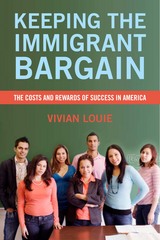 Keeping the Immigrant Bargain: The Costs and Rewards of Success in America
Vivian Louie
Russell Sage Foundation, 2012 Most nineteenth and early-twentieth-century European immigrants arrived in the United States with barely more than the clothes on their backs. They performed menial jobs, spoke little English, and often faced a hostile reception. But two or more generations later, the overwhelming majority of their descendants had successfully integrated into American society. Today's immigrants face many of the same challenges, but some experts worry that their integration, especially among Latinos, will not be as successful as their European counterparts. Keeping the Immigrant Bargain examines the journey of Dominican and Colombian newcomers whose children have achieved academic success one generation after the arrival of their parents. Sociologist Vivian Louie provides a much-needed comparison of how both parents and children understand the immigrant journey toward education, mobility, and assimilation. Based on Louie's own survey and interview study, Keeping the Immigrant Bargain examines the lives of thirty-seven foreign-born Dominican and Colombian parents and their seventy-six young adult offspring—the majority of whom were enrolled in or had graduated from college. The book shows how they are adapting to American schools, jobs, neighborhoods, and culture. Louie discovers that before coming to the United States, some of these parents had already achieved higher levels of education than the average foreign-born Dominican or Colombian, and after arrival many owned their own homes. Significantly, most parents in each group expressed optimism about their potential to succeed in the United States, while also expressing pessimism about whether they would ever be accepted as Americans. In contrast to the social exclusion experienced by their parents, most of the young adults had assimilated linguistically and believed themselves to be full participants in American society. Keeping the Immigrant Bargain shows that the offspring of these largely working-class immigrants had several factors in common that aided their mobility. Their parents were highly engaged in their lives and educational progress, although not always in ways expected by schools or their children, and the children possessed a strong degree of self-motivation. Equally important was the availability of key institutional networks of support, including teachers, peers, afterschool and other enrichment programs, and informal mentors outside of the classroom. These institutional networks gave the children the guidance they needed to succeed in school, offering information the parents often did not know themselves. While not all immigrants achieve such rapid success, this engrossing study shows how powerful the combination of self-motivation, engaged families, and strong institutional support can be. Keeping the Immigrant Bargain makes the case that institutional relationships—such as teachers and principals who are trained to accommodate cultural difference and community organizations that help parents and children learn how to navigate the system—can bear significantly on immigrant educational success.
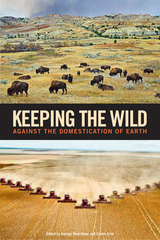 Keeping the Wild: Against the Domestication of Earth
George Wuerthner, Eileen Crist, and Tom Butler
Island Press, 2014 Is it time to embrace the so-called “Anthropocene”—the age of human dominion—and to abandon tried-and-true conservation tools such as parks and wilderness areas? Is the future of Earth to be fully domesticated, an engineered global garden managed by technocrats to serve humanity? The schism between advocates of rewilding and those who accept and even celebrate a “post-wild” world is arguably the hottest intellectual battle in contemporary conservation. In Keeping the Wild, a group of prominent scientists, writers, and conservation activists responds to the Anthropocene-boosters who claim that wild nature is no more (or in any case not much worth caring about), that human-caused extinction is acceptable, and that “novel ecosystems” are an adequate replacement for natural landscapes. With rhetorical fists swinging, the book’s contributors argue that these “new environmentalists” embody the hubris of the managerial mindset and offer a conservation strategy that will fail to protect life in all its buzzing, blossoming diversity. With essays from Eileen Crist, David Ehrenfeld, Dave Foreman, Lisi Krall, Harvey Locke, Curt Meine, Kathleen Dean Moore, Michael Soulé, Terry Tempest Williams and other leading thinkers, Keeping the Wild provides an introduction to this important debate, a critique of the Anthropocene boosters’ attack on traditional conservation, and unapologetic advocacy for wild nature.
 Keeping the World’s Environment under Review: An Intellectual History of the Global Environment Outlook
Jan Bakkes
Central European University Press, 2022 How do we take stock of the state and direction of the world’s environment, and what can we learn from the experience? Among the myriad detailed narratives about the condition of the planet, the Global Environment Outlook (GEO) reports—issued by the United Nations Environment Programme—stand out as the most ambitious. For nearly three decades the GEO project has not only delivered iconic global assessment reports, but through its multitude of contributors has inspired hundreds of similar processes worldwide from the regional to the local level. This book provides an inside account of the evolution of the GEO project from its earliest days. Building on meticulous research, including interviews with former heads of the United Nations Environment Programme, diplomats, leading contributing scientists, and senior leaders of collaborating organizations, the story is told from the perspective of five GEO veterans who all played a pivotal role in shaping the periodic assessments. The GEO’s history provides striking insights and will save valuable time to those who commission, design and conduct, as well as critique and improve, assessments of environmental development in the next decade.
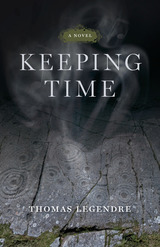 Keeping Time: A Novel
Thomas Legendre
Acre Books, 2020 A crumbling marriage. An ancient mystery. And a way to change the past . . .
When archaeologist Aaron Keeler finds himself transported eighteen years backward in time, he becomes swept up in a strangely illicit liaison with his younger wife. A brilliant musician, Violet is captivated by the attentive, “weathered” version of her husband. The Aaron she recently married—an American expat—has become distant, absorbed by his excavation of a prehistoric site at Kilmartin Glen on Scotland’s west coast, where he will soon make the discovery that launches his career. As Aaron travels back and forth across the span of nearly two decades, with time passing in both worlds, he faces a threat to his revelatory dig, a crisis with the older Violet—mother of his two young children—and a sudden deterioration of his health. Meanwhile, Violet’s musical performances take on a resonance related to the secrets the two are uncovering in both time frames. With their children and Aaron’s lives at risk, he and Violet try to repair the damage before it’s too late.
Keeping Time with Blue Hyacinths: Poems
Sholeh Wolpé
University of Arkansas Press, 2013 Keeping Time with Blue Hyacinths, Sholeh Wolpé's third collection of poems, is a surreal journey of sorrows and sins, of love, ghosts, and Saudi princes, of banishment inside one's own skin. Wild in its leaps and images, these poems explore personal and psychological exile from a marriage, lovers, expectations, and finally, country.
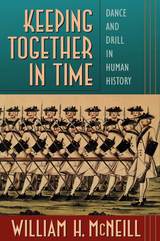 Keeping Together in Time: Dance and Drill in Human History
William H. McNeill
Harvard University Press, 1997 Could something as simple and seemingly natural as falling into step have marked us for evolutionary success? In Keeping Together in Time one of the most widely read and respected historians in America pursues the possibility that coordinated rhythmic movement--and the shared feelings it evokes--has been a powerful force in holding human groups together.As he has done for historical phenomena as diverse as warfare, plague, and the pursuit of power, William H. McNeill brings a dazzling breadth and depth of knowledge to his study of dance and drill in human history. From the records of distant and ancient peoples to the latest findings of the life sciences, he discovers evidence that rhythmic movement has played a profound role in creating and sustaining human communities. The behavior of chimpanzees, festival village dances, the close-order drill of early modern Europe, the ecstatic dance-trances of shamans and dervishes, the goose-stepping Nazi formations, the morning exercises of factory workers in Japan--all these and many more figure in the bold picture McNeill draws. A sense of community is the key, and shared movement, whether dance or military drill, is its mainspring. McNeill focuses on the visceral and emotional sensations such movement arouses, particularly the euphoric fellow-feeling he calls "muscular bonding." These sensations, he suggests, endow groups with a capacity for cooperation, which in turn improves their chance of survival.
A tour de force of imagination and scholarship, Keeping Together in Time reveals the muscular, rhythmic dimension of human solidarity. Its lessons will serve us well as we contemplate the future of the human community and of our various local communities.
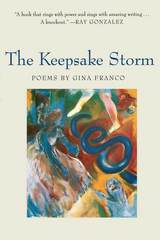 The Keepsake Storm
Gina Franco
University of Arizona Press, 2004 Here is Kathryn, "nearly 88, infinity next to infinity, / but infinity curled on itself, a whirlwind / that whipped about the house and was gone, / rain in its wake, a smell of dirt."
Kathryn is near the end of her life and is losing her memories: travels, husbands, a storm of keepsakes. As Gina Franco unleashes that storm and as Kathryn's flood of memories washes over us, we know at once that we are in the hands of a truly gifted poet. "The Keepsake Storm" is the culmination of a verse cycle that probes the depths of the heart—a meditation on the meaning of life in a difficult world. Drawing on a rich tradition of storytelling in Latino literature, Franco explores the transformative power of compassion as she addresses themes of cultural alienation, lost family roots, and the uncertain resiliency of the self. In writing that blends rapture, vision, and mystery, Franco calls on a multiplicity of voices and a prodigious command of forms to explore the underlying rhythms of life, finding poetry even in the imperfect transmissions of e-mail:
"I was happy to get your letter. I had a rough day.
My step-mom had a breakdown and is in a hospitol.
I don't understand all the why's of it. She has paranoia
scetsafrinia. (and I know that is spelled totally
wrong). I don't blame myself I just didn't see it coming."
By reaffirming the power of self-awareness, history, and place, Franco reaches out to all who struggle to find meaning in times of trouble or self-doubt. The Keepsake Storm is a personal journey through many lives that is nothing less than a celebration—and a reassessment—of American consciousness.
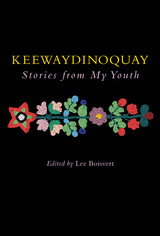 Keewaydinoquay, Stories from My Youth
Keewaydinoquay Peschel
University of Michigan Press, 2006
Michael Blake's Dances with Wolves transformed denigrating Indian sterotypes and created widespread interest in Native American culture. The subsequent popularity of books on this topic underscores the power of a tale well told. While Blake's story relates the early chapters of Native Americans' survival struggles, later accounts of this struggle remain untold.
The Indians of Hungry Hollow authentically presents these later chapters. The days of Hungry Hollow have long passed, but the opportunity to capture its lessons of community, strong values, and an urge to thrive in matters of the heart and soul are still very much with us.
These are stories of survival, community, sharing, and caring. The situations are often dire: winter in the middle of the Depression; an Indian settlement illegally taken from its inhabitants and set on fire; boaters stranded by bad weather and threatened with death. But if the situations are extreme, the telling of the stories is consistently optimistic yet completely without self-pity or sentimentality, and the characters always find a way through the darkness.
Dunlop's unique style of storytelling is compelling and informative, and these historically significant stories help to elucidate the transition of the American Indian culture from post-tribal days to the present.
Bill Dunlop is a respected Ottawa elder and storyteller. Marcia Fountain-Blacklidge is a professional writer, counselor, and consultant.
 A Keg of Their Best: Brewing in the Beer State Capital—From the Beer Baron Era to Modern Microbrews
Robin Shepard
Wisconsin Historical Society Press, 2026 A rich, lively history of brewing in Wisconsin’s capital city and the creative people who brought it to life.
Wisconsin has long been known as “The Beer State,” and the history of its capital city brims with stories of brewing innovation—from the city’s earliest beer-makers and long-forgotten farmstead breweries to today’s experimental microbrewers and enterprising taprooms. In A Keg of Their Best: Brewing in the Beer State Capital—From the Beer Baron Era to Modern Microbrews, journalist and beer expert Robin Shepard offers an authoritative history of Madison’s brewing legacy and its key figures from the 1830s to the present.
A Keg of Their Best documents how the beer industry emerged before Madison became a city, starting with the arrival of its first white residents, Roseline and Eben Peck, who opened a tavern in the back room of their cabin in 1837. Subsequent waves of German and English immigrants brought their lager and ale recipes and brewing traditions—some of which live on today. The book also explores how the region’s environment—its rich soil and abundant water sources—made it ideal for beer-making. And it reveals how beer barons created and funded much of the early infrastructure that established Madison as the territorial capital.
Readers will discover how brewmasters, bootleggers, and homebrewers survived during Prohibition and the ways the post-Prohibition beer-making renaissance gave rise to the modern craft beer movement. Shepard brings Wisconsin’s brewing history up through today by highlighting the craft brewers, microbrewers, and regional breweries that are producing inspiring pilsners, IPAs, stouts, sours, and other tasty brews in Madison and Dane County’s thriving beer scene.
Drawing from newspaper accounts, ancestry and property records, and hundreds of personal interviews, Shepard has compiled a thorough and engrossing tribute to Madison’s beer-making heritage—including every known brewery in Dane County since the 1840s. Richly illustrated with historical and modern photos, maps, and breweriana, A Keg of Their Best is a must-have for beer enthusiasts, history lovers, and anyone who has raised a pint in the Beer State Capital.
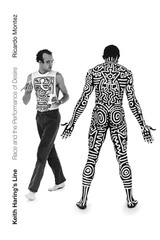 Keith Haring's Line: Race and the Performance of Desire
Ricardo Montez
Duke University Press, 2020 In the thirty years since his death, Keith Haring—a central presence on the New York downtown scene of the 1980s—has remained one of the most popular figures in contemporary American art. In one of the first book-length treatments of Haring’s artistry, Ricardo Montez traces the drawn and painted line that was at the center of Haring’s artistic practice and with which the artist marked canvases, subway walls, and even human flesh. Keith Haring’s Line unites performance studies, critical race studies, and queer theory in an exploration of cross-racial desire in Haring’s life and art. Examining Haring’s engagements with artists such as dancer and choreographer Bill T. Jones, graffiti artist LA II, and iconic superstar Grace Jones, Montez confronts Haring’s messy relationships to race-making and racial imaginaries, highlighting scenes of complicity in order to trouble both the positive connotations of inter-racial artistic collaboration and the limited framework of appropriation.
The Kelley Statistical Tables, Rev. ed
Truman Lee Kelley
Harvard University Press This volume constitutes a radical revision and extension of the author’s 1938 Tables. Herein is an extensive table of normal probability functions. 3-point interpolation coefficients are given with 4 figure arguments. These coefficients are compensatorily rounded off to five figures. A similar rounding off to seven figures of 4-point coefficients has been made. Truman Kelley’s method for normalizing variance ratios, which he presents together with tables facilitating the process, is of particular importance for experimental scientists.
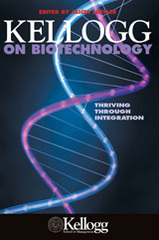 Kellogg on Biotechnology: Thriving through Integration
Alicia Loffler
Northwestern University Press, 2005 Biotechnology is the new capital. The stakeholders in this revolution are many: the scientists who generate the knowledge in fields where the pace is maddeningly fast; the technologists who make ideas a reality; the managers who struggle to deal with an industry where the old rules of thinking do not always apply; the venture capitalists who provide funds based on market moods rather than science; the health care, agricultural, chemical, and pharmaceutical industries whose once cozy enclaves have been revolutionized and are now barely recognizable; the law professionals and ethicists who have to grapple with issues unimaginable just a few years ago; the public policy makers who struggle with the complex issues and have to make decisions quickly, or risk being left behind; and, finally, the society and individuals who are in the midst of all that is taking place. This book addresses this diverse constituency and offers an integrated view of exciting new biotechnologies, both from a science and business perspective.
The book walks the reader through the "what"--what are some of the newest biotechnologies that will revolutionize the way we think about health?; the "how"--how to transform those technologies into profitable products and companies; and the "who"--who will benefit from these technologies?
Kellogg on Biotech is the outgrowth of a collaborative student-faculty effort called TechVentures at the Kellogg School of Management. Their research forms the raw material for Kellogg on Biotech.
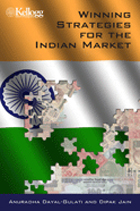 Kellogg on China: Strategies for Success
Anuradha Dayal-Gulati and Angela Y. Lee
Northwestern University Press, 2004 An in-depth look at how to do business in China as it becomes a global economic power
Since 1979, when China emerged from its long isolation and launched the first of its economic reforms, the country has gone from producing low-quality exports to making sophisticated high-technology goods and is now a major player in the world economy. China has become the new engine of global growth.
As China continues to implement its commitments agreed upon with membership into the World Trade Organization (WTO), the environment for multinational corporations is changing rapidly. This book examines some of the changes WTO accession is bringing to the market environment and different sectors of the economy, and the resulting challenges and opportunities for companies doing business in China.
The book draws on extensive field research with Chinese corporate executives, government officials, and representatives of nongovernmental organizations. Based on the findings from these interviews, the authors provide insights and strategies for companies seeking to establish a sustainable competitive advantage in the country's evolving marketplace. Kellogg on China is the outgrowth of a collaborative student-faculty effort through the Global Initiatives in Management program at the Kellogg School of Management.
Kelly Clark
Kelly Clark
University of Manitoba Press, 1986
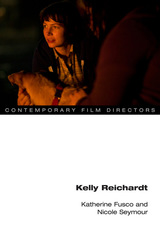 Kelly Reichardt
Katherine Fusco, Nicole Seymour
University of Illinois Press, 2017 Kelly Reichardt's 1994 debut River of Grass established her gift for a slow-paced realism that emphasizes the ongoing, everyday nature of emergency. Her work since then has communed with--yet remained apart from--postwar European realisms, the American avant-garde, independent film, and the emerging slow cinema movement. Katherine Fusco and Nicole Seymour read such Reichardt films as Wendy and Lucy and Night Moves to consider the root that emergency shares with emergence --the slowly unfolding or the barely perceptible. They see Reichardt as a filmmaker preoccupied with how environmental and economic crises affect those living on society's fringes. Her spare plots and slow editing reveal an artist who recognizes that disasters are gradual, with effects experienced through duration rather than sudden shock. Insightful and boldly argued, Kelly Reichardt is a long overdue portrait of a filmmaker who sees emergency not as a break from the everyday, but as a version of it.
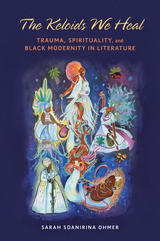 The Keloids We Heal: Trauma, Spirituality, and Black Modernity in Literature
Sarah Soanirina Ohmer
University of Illinois Press, 2025 Women of colors and a literature written in corporeal and spiritual scars
The corporeal and spiritual healing in literature by women of colors can be seen to redefine modern thought and printed text. Sarah Soanirina Ohmer traces the impact of colonization and enslavement on Black women and Black women’s contributions to colonial, nineteenth, and twentieth century literature in the US, Brazil, and the Caribbean. Drawing on intersectional analysis, Ohmer focuses on portrayals of trauma and spirituality in works by Toni Morrison, Conceição Evaristo, Maryse Condé, Gloria Anzaldúa, the Quilombhoje poets, and María de los Reyes Castillo. Ohmer compares literature from different countries along four thematic pathways: ghosts, mirrors, naming, and motherhood. Her analysis unlocks the literature’s power to heal through gut-wrenching descriptions of wounds and thrilling passages of hope and liberation. Throughout, Ohmer weaves in her life story as a Black woman as she reflects on how colonialism, racism, sexism, and capitalism have impacted her work, traumas, and faith journey.
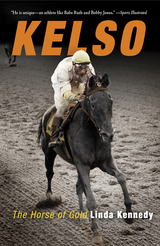 Kelso: The Horse of Gold
Linda Kennedy
Westholme Publishing, 2007 The Inspiring True Story of One of the Most Successful and Beloved Thoroughbreds in Racing History
Praise for Kelso: The Horse of Gold:
“Ms. Kennedy has captured the grandeur of the horse in a simple, straightforward way that will charm and excite those who saw Kelso run and remember his stirring deeds. . . . Kelso's racing record through eight seasons is simply breathtaking.”—Wall Street Journal
“In this concise, entertaining account, Kennedy tells the story of Kelso, a scrawny ungainly gelding who just happened to be one of the greatest Thoroughbreds that ever lived.”—Publishers Weekly
“An excellent portrayal... so intense that one has the sensation of being right there with the crowd and cheering Kelso on.”—Tom Trotter, Former New York Racing Secretary
“He was the greatest horse I ever rode.”—Eddie Arcaro, rider of Triple Crown champions Whirlaway, Assault, and Citation
At his three-year debut in June 1960, no one could know that Mrs. Allaire DuPont’s small, deerlike gelding named Kelso would come to dominate American racing like no other horse before or since. For five unprecedented years, he would reign as Horse of the Year, setting records and endearing himself to millions of fans. Always considered among the top four horses of all time—with Man O' War, Secretariat, and Citation—for many, Kelso is the greatest racehorse, since he won at sprints and endurance races, won on turf and dirt, carried unprecedented handicap weights, and raced both foreign and national thoroughbreds. Kelso was crowned champion of the Jockey Gold Cup, one of the most prestigious racing events, an astounding five straight times. Like Seabiscuit, Kelso was not earmarked as a contender and missed the Triple Crown races. But Kelso's greatness was decisive: he regularly defeated Triple Crown race winners. In Kelso: The Horse of Gold, Linda Kennedy tells the remarkable story of one of the greatest athletes of the ages, recreating the excitement of "Kelly's" unique and brilliant career while placing his unparalleled achievements in the context of racing history.
Ken Follett: The Transformation of a Writer
Carlos Ramet
University of Wisconsin Press, 1999 Carlos Ramet focuses on the artistic development and cultural implications of the best-selling author of works such as Eye of the Needle (1978), The Pillars of the Earth (1989), and The Hammer of Eden (1998). Beginning with his earliest published novel, The Big Needle (1974), Ramet explores the tension between the popular and the serious that has underlain much of Follett’s work. Ramet examines this writer’s blending of genres, film adaptations of his novels, and his keen ability to extend his readership through a “hybridization” process. Ramet linguistically analyzes Follett’s flexibility with literary forms; explores archetypal patterns; and demonstrates that Follett’s involvement in British politics is reflected not only in his latest works but has been implied by his novels from the start.
Ken Saro-Wiwa
Roy Doron
Ohio University Press, 2016 Hanged by the Nigerian government on November 10, 1995, Ken Saro-Wiwa became a martyr for the Ogoni people and human rights activists, and a symbol of modern Africans’ struggle against military dictatorship, corporate power, and environmental exploitation. Though he is rightly known for his human rights and environmental activism, he wore many hats: writer, television producer, businessman, and civil servant, among others. While the book sheds light on his many legacies, it is above all about Saro-Wiwa the man, not just Saro-Wiwa the symbol. Roy Doron and Toyin Falola portray a man who not only was formed by the complex forces of ethnicity, race, class, and politics in Nigeria, but who drove change in those same processes. Like others in the Ohio Short Histories of Africa series, Ken Saro-Wiwa is written to be accessible to the casual reader and student, yet indispensable to scholars.
 Kenmu: Go–Daigo's Revolution
Andrew Edmund Goble
Harvard University Press, 1996 The short-lived Kenmu regime (1333–1336) of Japanese Emperor Go-Daigo is often seen as an inevitably doomed, revanchist attempt to shore up the old aristocratic order. But far from resisting change, Andrew Edmund Goble here forcefully argues, the flamboyant Go-Daigo and his iconoclastic associates were among the competitors seeking to overcome the old order and renegotiate its structure and ethos. Their ultimate defeat did not automatically spell failure; rather, the revolutionary nature of their enterprise decisively moved Japan into its medieval age.By birth, education, and circumstances, Go-Daigo should have been a weak, fatalistic bit player. Instead this student of Chinese political theory was a bold actor with an unprecedented knowledge of the various regions of Japan, who forced situations to his own benefit and led a rebellion that overthrew the Kamakura bakufu. Kenmu: Go-Daigo’s Revolution tells his extraordinary personal story vividly, reexamines original sources to discover the real nature of the Kenmu polity, and sets both within the broader backdrop of social, economic, and intellectual change at a dynamic moment in Japanese history.
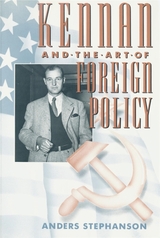 Kennan and the Art of Foreign Policy
Anders Stephanson
Harvard University Press, 1989 “In the annals of American diplomacy, the presence of George F. Kennan stands tall and daunting, a figure of articulate intelligence who thought about the action but also beyond it. He was not always a great diplomat, for his imagination was lively, and he lacked the self-effacing patience which is so essential to the profession at its most mundane; but he was a great analyst and policymaker, one of the very few this country has produced in foreign affairs, perhaps finest since John Quincy Adams.”
Thus begins Anders Stephanson's penetrating study of this complicated, often controversial, yet highly respected public man. From an array of intellectual reference points, Stephanson has written what is not only the most serious assessment of Kennan to appear but is also a work of general significance for a wide range of contemporary issues in foreign and domestic politics and culture. Appropriately, the book's emphasis is on Kennan's lifelong attempt to grasp Soviet foreign policy and devise an effective American response, particularly during the decisive period around the Second World War when the contours of our present world order gradually emerged: the period of wartime alliance with the Soviet Union, the ensuing “containment” policies and division of Europe and much of the world into hostile blocs. Stephanson also examines Kennan's strategic vision, his “realistic” approach to foreign policy, and his disdain for the Third World.
An extended final section, “Class and Country,” then situates Kennan as an essentially European kind of “organicist” conservative with no obvious political home in American society, a society manifestly unorganic in all its mobility and mass culture. An outsider without class attachment, he could never reconcile his dislike of American politics and culture with his attachment to values of order and hierarchy. These warring sensibilities produced, for example, vehement denunciations of McCarthyism as well as of the student revolts of the following decade. Yet it was Kennan's marginality, his functional detachment from domestic politics, that made possible his often clairvoyant analyses of foreign affairs.
Stephanson's work is an unusually broad and deep characterization of a reflective, sometimes enigmatic but always outstanding American policymaker and man of letters.
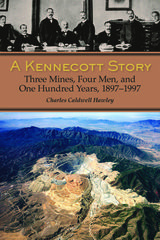 A Kennecott Story: Three Mines, Four Men, and One Hundred Years, 1887-1997
Charles Caldwell Hawley
University of Utah Press, 2014 While copper seems less glamorous than gold, it may be far more important. Copper proved vital to the industrial revolution and indispensable for electrification of America. Kennecott Copper Corporation, at one time the largest producer of copper in the world, thus played a key role in economic and industrial development. This book recounts how Kennecott was formed from the merger of three mining operations (one in Alaska, one in Utah, and one in Chile), how it led the way in mining technologies, and how it was in turn affected by the economy and politics of the day.
As it traces the story of the three mines, the narrative follows four mining engineers—Stephen Birch, Daniel Cowan Jackling, William Burford Braden, and E. Toppan Stannard—self-made men whose technological ingenuity was responsible for much of Kennecott’s success. While Jackling developed economies of scale for massive open-pit mining in Utah, Braden went underground in Chile for a caving operation of unprecedented scale for copper. Meanwhile, Birch and Stannard overcame the extreme challenges of mining rich ore in the difficult climate of Alaska and transporting it to market. The Guggenheims, who brought these three operations together provided the funding without which the infrastructure necessary for the mining operations might not have been built. The railroad required for the Alaska mine alone cost more than three times what the United States had paid to buy all of Alaska only forty-five years earlier.
As a geologist with first-hand knowledge of mining, author Charles Hawley aptly describes the technology behind the Kennecott story in a way that both specialists and the general reader will appreciate. Through engaging stories and pertinent details, he places Kennecott and the copper industry within their historical context and also allows the reader to consider the controversial aspects of mineral discovery and sustainability in a crowded world where resources are limited.
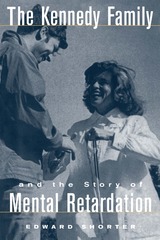 The Kennedy Family
Edward Shorter
Temple University Press, 2000 According to Edward Shorter, just forty years ago the institutions housing people with mental retardation (MR) had become a national scandal. The mentally retarded who lived at home were largely isolated and a source of family shame. Although some social stigma still attaches to the people with developmental disabilities (a range of conditions including what until recently was called mental retardation), they now actively participate in our society and are entitled by law to educational, social, and medical services. The immense improvement in their daily lives and life chances came about in no small part because affected families mobilized for change but also because the Kennedy family made mental retardation its single great cause.
Long a generous benefactor of MR-related organizations, Joseph P. Kennedy made MR the special charitable interest of the family foundation he set up in the 1950s. Although he gave all of his children official roles, he involved his daughter Eunice in performing its actual work -- identifying appropriate recipients of awards and organizing the foundation's activities. With unique access to family and foundation papers, Shorter brings to light the Kennedy family's strong commitment to public service, showing that Rose and Joe taught their children by precept and example that their wealth and status obligated them to perform good works. Their parents expected each of them to apply their considerable energies to making a difference.
Eunice Kennedy Shriver took up that charge and focused her organizational and rhetorical talent on putting MR on the federal policy agenda. As a sister of the President of the United States, she had access to the most powerful people in the country and drew their attention to the desperate situation of families affected by mental retardation. Her efforts made an enormous difference, resulting in unprecedented public attention to MR and new approaches to coordinating medical and social services. Along with her husband, R. Sargent Shriver, she made the Special Olympics an international, annual event in order to encourage people with mental retardation to develop their skills and discover the joy of achievement. She emerges from these pages as a remarkable and dedicated advocate for people with developmental disabilities.
Shorter's account of mental retardation presents an unfamiliar view of the Kennedy family and adds a significant chapter to the history of disability in this country.
 The Kennedy Tapes: Inside the White House during the Cuban Missile Crisis
Ernest R. May
Harvard University Press, 1997 October 1962: the United States and the Soviet Union stood eyeball to eyeball, each brandishing enough nuclear weapons to obliterate civilization in the Northern Hemisphere. It was one of the most dangerous moments in world history. Day by day, for two weeks, the inner circle of President Kennedy's National Security Council debated what to do, twice coming to the brink of attacking Soviet military units in Cuba--units equipped for nuclear retaliation. And through it all, unbeknownst to any of the participants except the President himself, tape was rolling, capturing for posterity the deliberations that might have ended the world as we know it.
These are the full and authenticated transcripts of those audio recordings. Arguably the most important document in the history of the Cuban missile crisis, these transcripts are also a unique window on a drama rarely if ever witnessed by those outside the halls of power: the moment-by-moment decisionmaking of those with the fate of the West in their hands in a constantly changing, world-threatening situation. At the center of it all is President Kennedy, wary of experts after the debacle of the Bay of Pigs, puzzled and distrustful after confrontations with Khrushchev in Vienna and Berlin, and ever mindful of the responsibility symbolized by the satchel his military aides hold nearby, containing the codes to unleash nuclear warfare.
In one brief segment, midway through the crisis, the President, alone, speaks his thoughts into the machine. In others, he copes with hawks from Capitol Hill and the Pentagon. And in the last meeting, we hear him explaining and defending the formula that finally defused the crisis. With him throughout are his team from the State Department, including Secretary Dean Rusk, Under Secretary George Ball, and Llewellyn Thompson; his Defense team, especially Robert McNamara; his key assistants, Theodore Sorenson and McGeorge Bundy; Secretary of the Treasury Douglas Dillon; Vice President Lyndon Johnson; and, of course, his brother Robert, the Attorney General. All are identified and put into their proper context by the editors, whose introduction makes sense of this singular drama within the history of the Cold War and the Kennedy administration and whose conclusions will shape our understanding of the Cold War.
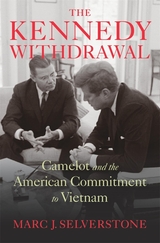 The Kennedy Withdrawal: Camelot and the American Commitment to Vietnam
Marc J. Selverstone
Harvard University Press, 2022 A major revision of our understanding of JFK’s commitment to Vietnam, revealing that his administration’s plan to withdraw was a political device, the effect of which was to manage public opinion while preserving US military assistance.
In October 1963, the White House publicly proposed the removal of US troops from Vietnam, earning President Kennedy an enduring reputation as a skeptic on the war. In fact, Kennedy was ambivalent about withdrawal and was largely detached from its planning. Drawing on secret presidential tapes, Marc J. Selverstone reveals that the withdrawal statement gave Kennedy political cover, allowing him to sustain support for US military assistance. Its details were the handiwork of Defense Secretary Robert McNamara, whose ownership of the plan distanced it from the president.
Selverstone’s use of the presidential tapes, alongside declassified documents, memoirs, and oral histories, lifts the veil on this legend of Camelot. Withdrawal planning was never just about Vietnam as it evolved over the course of fifteen months. For McNamara, it injected greater discipline into the US assistance program. For others, it was a form of leverage over South Vietnam. For the military, it was largely an unwelcome exercise. And for JFK, it allowed him to preserve the US commitment while ostensibly limiting it.
The Kennedy Withdrawal offers an inside look at presidential decisionmaking in this liminal period of the Vietnam War and makes clear that portrayals of Kennedy as a dove are overdrawn. His proposed withdrawal was in fact a cagey strategy for keeping the United States involved in the fight—a strategy the country adopted decades later in Afghanistan.
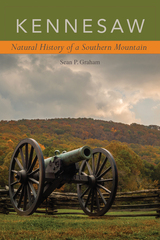 Kennesaw: Natural History of a Southern Mountain
Sean P. Graham
University of Alabama Press, 2021 The first in-depth ecological treatment of one of the most frequently visited National Battlefield parks in the country
Designated as a battlefield in 1917 and as a park in 1935, the 2,965-acre Kennesaw Mountain National Battlefield Park now preserves far more than the military history and fallen soldiers it was originally founded to commemorate. Featuring eighteen miles of interpretive trails looping around and over the mountain, the park is a popular destination for history buffs, outdoor recreationists, and nature enthusiasts alike. Located approximately twenty miles northwest of downtown Atlanta, Kennesaw Mountain rises 608 feet above the rolling hills and hardwood forests of the Georgia Piedmont. Kennesaw Mountain’s geology and topography create enough of a distinctive ecosystem to make it a haven for flora and fauna alike. As the tallest mountain in the metropolitan Atlanta area, it is also a magnet for human visitors.
Written for a diverse range of readers and park visitors, Kennesaw: Natural History of a Southern Mountain provides a comprehensive exploration of the entire park punctuated with humor, colorful anecdotes, and striking photographs of the landscape. Sean P. Graham begins with a brief summary of the park’s human history before transitioning to a discussion of the mountain’s nature, including its unique geology, vegetation, animals, and plant-animal interactions. Graham also focuses on Kennesaw Mountain’s most important ecological and conservation attribute—its status as a globally important bird refuge. An insightful chapter on bird watching and the region’s migrating bird populations includes details on migratory patterns, birding hot spots, and the mountain’s avian significance. An epilogue revisits the park’s Civil War history, describing how Union veterans pushed for establishment of the park as a memorial, inadvertently creating a priceless biological preserve in the process.
 Kenneth Arrow and the Changing Economics of Health Care, Volume 26
Mark A. Peterson, ed.
Duke University Press This special issue of the Journal of Health Politics, Policy and Law centers on Nobel laureate Kenneth J. Arrow’s seminal article "Uncertainty and the Welfare Economics of Medical Care." When the essay first appeared in 1963, health economics did not exist as an established field, and there was a professional and social bias against thinking about health care in economic terms. Arrow’s trailblazing article laid the foundation for modern health economics and has guided its direction for four decades. Now the Journal of Health Politics, Policy and Law examines this legacy, opening with a foreword by Mark V. Pauly, one of the first to publish a response to Arrow’s original article and a major voice in health economics today. A reprint of the article itself serves as a springboard from which contributors assess the accuracy of Arrow’s portrayal of the United States health care system in the early sixties and evaluate how the system has progressed since that time. The contributors to this remarkable collection include some of the most distinguished scholars in the health policy field. Designed to be an effective reference tool, this issue sets Arrow’s original article apart from the rest by printing it on tinted paper. The contributors’ responses to Arrow are divided into four parts—Part 1: Supply, Demand, and Health Care Competition; Part 2: Risk, Insurance, and Redistribution; Part 3: Information, Knowledge, and Medical Markets; Part 4: Social Norms and Professionalism.
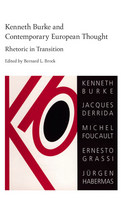 Kenneth Burke and Contemporary European Thought: Rhetoric in Transition
Bernard L. Brock
University of Alabama Press, 1995 Insights into the problem of our relation to language
Kenneth Burke and Contemporary European Thought: A Rhetoric in Transition reflects the present transitional nature of rhetoric and society. Its purpose is to relate the rhetorical theory of Burke to the theories of four major European philosophers—Jürgen Habermas, Ernesto Grassi, Foucault, and Jacques Derrida—as they discuss the nature of language and its central role in society.
This book describes a rhetorical world in transition but not a world in chaos. It points to the centrality of symbolism in theories of language and rhetoric and illustrates Burke’s influence as a pivotal things and theorist in the communication arts and sciences, suggesting that the observations regarding shifting paradigms and perspectives made by other scholars are indeed emergent in the realm of rhetoric. It also regards the powerful impact of language and symbolic action in both the critique and construction of human knowledge and augurs a central role for rhetoric in the intellectual and social transformations of this and the next century.
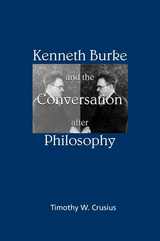 Kenneth Burke and the Conversation after Philosophy
Timothy W. Crusius
Southern Illinois University Press, 1999 Throughout much of his long life (1897–1993), Kenneth Burke was recognized as a leading American intellectual, perhaps the most significant critic writing in English since Coleridge. From about 1950 on, rhetoricians in both English and speech began to see him as a major contributor to the New Rhetoric. But despite Burke's own claims to be writing philosophy and some notice from reviewers and critics that his work was philosophically significant, Timothy W. Crusius is the first to access his work as philosophy. Crusius traces Burke's commitment and contributions to philosophy prior to 1945, from Counter-Statement (1931) through The Philosophy of Literary Form (1941). While Burke might have been a late modernist thinker, Crusius shows that Burke actually starts from a position closely akin to such postmodern figures as Michel Foucault and Richard Rorty. Crusius then examines Burke's work from A Grammar of Motives (1945) up to his last published essays, drawing most heavily on A Rhetoric of Motives, The Rhetoric of Religion, and uncollected essays from the 1970s. This part concerns Burke's contributions to human activities always closely associated with rhetoric-hermeneutics, dialectic, and praxis. Burke's highly developed notion of our species as the "symbol-using animal," argues Crusius, draws together the various strands of his later philosophy—his concern with interpretation, with dialectic and dialogue, with a praxis devoted to awareness and control of the self-deceiving and potentially self-destructive motives inherent in language itself.
Kenneth Burke's Dramatism and Popular Arts
C. Ronald Kimberling
University of Wisconsin Press, 1982 Dramatism provides us with a seemingly endless array of stages from which to perform our analysis of human action. By enlarging or reducing the scope of our endeavors, as has been done throughout the present work, we can use the Dramatism method to reveal almost any sort of relationship.
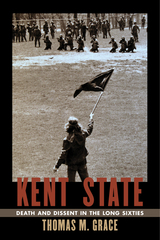 Kent State: Death and Dissent in the Long Sixties
Thomas M. Grace
University of Massachusetts Press, 2016 On May 4, 1970, National Guard troops opened fire on unarmed antiwar protesters at Kent State University in Ohio, killing four students and wounding nine others, including the author of this book. The shootings shocked the American public and triggered a nationwide wave of campus strikes and protests. To many at the time, Kent State seemed an unlikely site for the bloodiest confrontation in a decade of campus unrest—a sprawling public university in the American heartland, far from the coastal epicenters of political and social change.
Yet, as Thomas M. Grace shows, the events of May 4 were not some tragic anomaly but were grounded in a tradition of student political activism that extended back to Ohio's labor battles of the 1950s. The vast expansion of the university after World War II brought in growing numbers of working-class enrollees from the industrial centers of northeast Ohio, members of the same demographic cohort that eventually made up the core of American combat forces in Vietnam. As the war's rising costs came to be felt acutely in the home communities of Kent's students, tensions mounted between the growing antiwar movement on campus, the university administration, and the political conservatives who dominated the surrounding county as well as the state government.
The deadly shootings at Kent State were thus the culmination of a dialectic of radicalization and repression that had been building throughout the decade. In the years that followed, the antiwar movement continued to strengthen on campus, bolstered by an influx of returning Vietnam veterans. After the war ended, a battle over the memory and meaning of May 4 ensued. It continues to the present day.
Kentucky
I. J. Schwartz
University of Alabama Press, 1990 An epic poem about life in America in the early 20th century, as perceived by a Jewish immigrant. Kentucky is the first major work in Yiddish literature to present America as its primary theme. The long epic poem paints a rich picture of life in Kentucky just after the Civil War. Written between 1918 and 1922 by Lithuanian-born writer, I. J. Schwartz, it first appeared in the Yiddish journal Zukunft and later, in 1925, was published as a book. Although unknown to English readers until this translation, the book was a primary text for immigrants and potential immigrants in places as remote as Poland and Argentina who received their first impressions of America from its pages. Parts of it were even set to music and sung in choruses around the world.
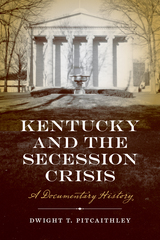 Kentucky and the Secession Crisis: A Documentary History
Dwight Pitcaithley
University of Tennessee Press, 2022 As the election of 1860 loomed, the United States suffered tumultuous division over the political fate of slavery in the western territories. While Northern states favored territorial sovereignty, the Deep South advocated for federal protection of slavery during the territorial period. Disagreement festered and gave way to civil war—but for some states literally caught in the middle, choosing a side was not so easy.
A slave state itself but bordering three non-slave-state neighbors across the Ohio River, Kentucky was in a difficult position as division swept the country. Aware that secession would nullify the Fugitive Slave Act and believing that slavery as a statewide institution would be better protected if Kentucky remained in the Union, the Bluegrass State ultimately stepped away from its Deep South sister states and chose not to secede. Kentucky and the Secession Crisis: A Documentary History showcases the discourse that followed the 1860 election and sheds light on Kentucky’s political thought processes as the state struggled toward a decision.
This important collection includes addresses by Governor Beriah Magoffin; Senator John J. Crittenden’s December 1860 address proposing a Constitutional solution to secession; speeches by various proponents and opponents of the Crittenden amendment; various Constitutional amendments proposed by Kentuckians; and documents related to the second session of the Thirty-Sixth Congress, the Washington Peace Conference of 1861, and the Border Slave State Conference. With a lengthy introduction and questions for discussion, Kentucky and the Secession Crisis is an insightful and valuable resource for historians as well as for the classroom.
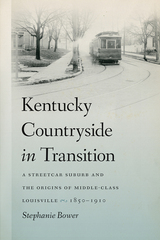 Kentucky Countryside in Transition: A Streetcar Suburb and the Origins of Middle-Class Louisville, 1850–1910
Stephanie Bower
University of Tennessee Press, 2014 Kentucky Countryside in Transition charts the rise of the American middle class at the turn of the twentieth century by examining the migration from the Kentucky countryside to the city and subsequently the suburbs of Louisville. The formation of the middle class in Louisville was fostered by two factors: a boom in white collar employment and the electric streetcar, an innovation that fundamentally changed the urban landscape. Ultimately a narrative of industrialization and modernity, this study focuses on a group of forty-two families who lived at the end of the Broadway Trolley line in an area that came to be known as the Cherokee Triangle. This suburban neighborhood was dominated by white collar commuters who were driven to Louisville by a desire to get ahead but continued to embrace a nostalgia for country life. In this meticulous three generation study, Stephanie Bower follows this group of families as they make the transition from rural farmers and cultivators to city laborers and white collar workers. By mining census records, city directories, and county records, Bower carefully reconstructs the biographical details of residents in an effort to paint a picture of life in this streetcar suburb during this important period of transformation. Regional studies of the middle class during this pivotal era are often overlooked in contemporary scholarship. Consequently, this analysis will be of interest to those researching Louisville, middle class formation, and suburbanization, as well as to local genealogists tracing their family histories.
Stephanie Bower is professor emeritus of history at the University of Indiana, Southeast. She is the author of Famism: The Impact of Demographic Factors on Family Structure, and her articles have appeared in Hispanic American History Review, The Americas, LOCUS, and Historical Methods.
The Kentucky Trace: A Novel of the American Revolution
Harriette Simpson Arnow
Michigan State University Press, 2012 A gripping portrait of life in the hard-bitten wilderness of Revolutionary Kentucky, Harriette Simpson Arnow’s The Kentucky Trace follows surveyor William David Leslie Collins as he struggles to survive. Collins finds his fellow settlers to be almost as inscrutable as the weather—at times, they are allies, and at others, they are adversaries. Collins battles nature, bad luck, and the quickly shifting political tides to make his way in a changing world. Showcasing Arnow’s ear for dialogue and offering a wealth of historical detail, The Kentucky Trace is a masterful work of fiction by a preeminent Appalachian writer.
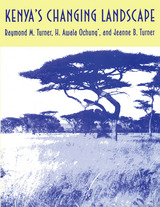 Kenya's Changing Landscape
Raymond M. Turner
University of Arizona Press, 1998 Botanist Homer L. Shantz took photographs of the Kenyan landscape in the early 1920s as part of his effort to document the natural plant cover of Africa. He returned there with B. L. Turner in the late 1950s to repeat the photographs. In 1990, Raymond Turner traveled to Kenya under the auspices of the National Geographic Society in order to match the photographs made by Shantz and B.L. Turner and to show the changes that have occurred over the decades since Shantz's initial journey. Turner's comparative photos and research into the botanical record dramatically reflect the encroachment of woody plants in arid areas and the increasing human impact in more humid locales.
Turner's discussions of the photographs and the conclusions he draws provide an important reference for ecologists, geographers, botanists, and other researchers attempting similar studies. By documenting vegetation change in a region broadly similar climatically to North America's subtropical deserts and grasslands but different in its wildlife and its human culture, the book shows that the endpoints of landscape status are similar despite the vastly different histories of these two regions of the world.
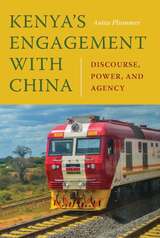 Kenya's Engagement with China: Discourse, Power, and Agency
Anita Plummer
Michigan State University Press, 2022 In recent decades, Kenya has witnessed profound changes in its economic, cultural, and environmental landscapes resulting from its interactions with China. University students are competing for scholarships to study in China, coastal artisanal fishers are increasingly worried about Chinese-owned trawlers depleting fish stocks, fishers on Lake Victoria are grappling with the impact of frozen tilapia from China, and unemployed youth are seeking a fair shot at working on one of Kenya’s multimillion-dollar Chinese-funded infrastructure projects. Anita Plummer’s Kenya’s Engagement with China investigates the tension between official Kenyan and Chinese state narratives and individual Kenyans’ reactions to China’s presence to provide insight into how everyday Kenyans exercise their political agency. The competing discourses Plummer uncovers in person, in the news, and online reveal how Kenyans use China to question local power structures, demand policy change, and articulate different visions for their country’s future. This critical text represents the next step in research on Sino-African relations.
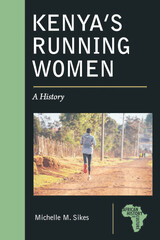 Kenya's Running Women: A History
Michelle M Sikes
Michigan State University Press, 2023 Since Pauline Konga’s breakthrough performance at the 1996 summer Olympics in Atlanta, the world has become accustomed to seeing Kenyan women medal at major championships, sweep marathons, and set world records. Yet little is known about the pioneer generation of women who paved the way for Kenya’s reputation as an international powerhouse in women’s track and field. In Kenya’s Running Women: A History, historian and former professional runner Michelle M. Sikes details the triumphs and many challenges these women faced, from the advent of Kenya’s athletics program in the colonial era through the professionalization of running in the 1980s and 1990s. Sikes reveals how over time running became a vehicle for Kenyan women to expand the boundaries of acceptable female behavior. Kenya’s Running Women demonstrates the necessity of including women in histories of African sport, and of incorporating sport into studies of African gender and nation-building.
 Kepler's Geometrical Cosmology
J. V. Field
University of Chicago Press, 1987 The work of Johannes Kepler (1571-1630), regarded by many as the founder of modern astronomy, is also historically important to the philosophy and methodology of science as a whole. While most studies of Kepler have concentrated on his astronomical work, particularly his laws describing the revolutions of the planets, the. V. Field focuses on one of Kepler's major preoccupations, his search for the geometrical plan according to which God created teh universe. She demonstrates how Kepler's cosmological theories, which embrace music and astrology as well as astronomy, relate to his other work. Drawing on the whole body of Kepler's writings, Field traces the impact of Plato, Euclid, and Proclus on his thinking, as well as the influence of his contemporaries Galileo and Robert Fludd.
Kepler has suffered from a dual image as both hero of science and eccentric mystagogue. Field's sound scholarship provides a more complete picture of the man and his work that will be of value to historians of science, mathematics, philosophy, and the late Renaissance.
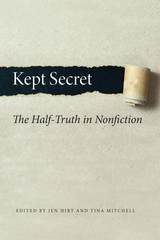 Kept Secret: The Half-Truth in Nonfiction
Jen Hirt
Michigan State University Press, 2017 Creative nonfiction writers wrestle constantly with the boundaries of creative license—what to reveal, when to reveal it, and how best to do it. While the truth may inspire us to make confident assertions, secrets, lies, and half-truths inspire us to delve further into our own writing to discover the heart of the story. The pieces in this collection feature essayists who do this type of detective work. Each essay contains a secret, lie, or half-truth—some of these are revealed by the author, but others remain buried. Ranging from the deep family secret to the little white lie, from the shocking to the humorous, and from the straightforward revelation to the slanted half-truth, these essays ask us to appreciate the magnitude of keeping a secret. They also ask us to consider the obstacles writers must overcome if they want to write about secrets in their own lives and the lives of others. In short interviews following each essay the contributors discuss craft, ethics, creativity, and how they eventually decided to reveal—or not reveal—a secret.
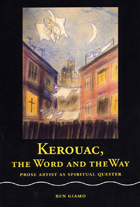 Kerouac, the Word and the Way: Prose Artist as Spiritual Quester
Ben Giamo
Southern Illinois University Press, 2000 Jack Kerouac, a "ragged priest of the word" according to Ben Giamo, embarked on a spiritual quest "for the ultimate meaning of existence and suffering, and the celebration of joy in the meantime." For Kerouac, the quest was a sustained and creative experiment in literary form. Intuitive and innovative, Kerouac created prose styles that reflected his search for personal meaning and spiritual intensity. These styles varied from an exuberant brand of conventional narrative (On the Road, The Dharma Bums, and Desolation Angels) to spontaneous bop prosody (Visions of Cody.Doctor Sax, and The Subterraneans). Giamo’s primary purpose is to chronicle and clarify Kerouac’s various spiritual quests through close examinations of the novels. Kerouac began his quest with On the Road, which also is Giamo’s real starting point. To establish early themes, spiritual struggles, and stylistic shifts, however, Giamo begins with the first novel, Town and Country, and ends with Big Sur, the final turning point in Kerouac’s quest. Kerouac was primarily a religious writer bent on testing and celebrating the profane depths and transcendent heights of experience and reporting both truly. Baptized and buried a Catholic, he was also heavily influenced by Buddhism, especially from 1954 until 1957 when he integrated traditional Eastern belief into several novels. Catholicism remained an essential force in his writing, but his study of Buddhism was serious and not solely in the service of his literary art. As he wrote to Malcolm Cowley in 1954, "Since I saw you I took up the study of Buddhism and for me it’s the word and the way I was looking for." Giamo also seeks IT—"a vital force in the experience of living that takes one by surprise, suspending for the moment belief in the ‘real’ concrete grey everyday of facts of self and selfhood . . . its various meanings, paths, and oscillations: from romantic lyricism to ‘the ragged and ecstatic joy of pure being and from the void-pit of the Great World Snake to the joyous pain of amorous love, and, finally, from Catholic/Buddhist serenity to the onset of penitential martyrhood."
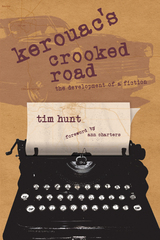 Kerouac's Crooked Road: The Development of a Fiction
Tim Hunt
Southern Illinois University Press, 1996 Now a classic, Kerouac’s Crooked Road was one of the first critical works on the legendary Beat writer to analyze his work as serious literary art, placing it in the broader American literary tradition with canonical writers like Herman Melville and Mark Twain. Author Tim Hunt explores Kerouac’s creative process and puts his work in conversation with classic American literature and with critical theory. This edition includes a new preface by the author, which takes a discerning look at the implications of the 2007 publication of the original typewriter scroll version of On the Road for the understanding of Kerouac and his novel. Although some critics see the scroll version of the novel as embodying Kerouac’s true artistic vision and the 1957 Viking edition as a commercialized compromise of that vision, Hunt argues that the two versions should not be viewed as antithetical but rather as discrete perspectives of a writer deeply immersed in writing as both performance and evolving process. Hunt moves beyond the mythos surrounding the “spontaneous creation” of On the Road, which upholds Kerouac’s reputation as a cultural icon, to look more closely at an innovative writer who wanted to bridge the gap between the luscious, talk-filled world of real life and the sterilized version of that world circumscribed by overly intellectualized, literary texts, through the use of written language driven by effusive passion rather than sober reflection. With close, erudite readings of Kerouac’s major and minor works, from On the Road to Visions of Cody,Hunt draws on Kerouac’s letters, novels, poetry, and experimental drafts to position Kerouac in both historical and literary contexts, emphasizing the influence of writers such as Emerson, Melville, Wolfe, and Hemingway on his provocative work.
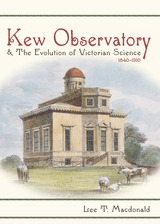 Kew Observatory and the Evolution of Victorian Science, 1840–1910
Lee T. Macdonald
University of Pittsburgh Press, 2018 Kew Observatory was originally built in 1769 for King George III, a keen amateur astronomer, so that he could observe the transit of Venus. By the mid-nineteenth century, it was a world-leading center for four major sciences: geomagnetism, meteorology, solar physics, and standardization. Long before government cutbacks forced its closure in 1980, the observatory was run by both major bodies responsible for the management of science in Britain: first the British Association for the Advancement of Science, and then, from 1871, the Royal Society. Kew Observatory influenced and was influenced by many of the larger developments in the physical sciences during the second half of the nineteenth century, while many of the major figures involved were in some way affiliated with Kew.
Lee T. Macdonald explores the extraordinary story of this important scientific institution as it rose to prominence during the Victorian era. His book offers fresh new insights into key historical issues in nineteenth-century science: the patronage of science; relations between science and government; the evolution of the observatory sciences; and the origins and early years of the National Physical Laboratory, once an extension of Kew and now the largest applied physics organization in the United Kingdom.
The Kew Plant Glossary: An Illustrated Dictionary of Plant Terms
Henk Beentje
Royal Botanic Gardens, Kew, 2010
This accessible, comprehensive glossary covers all the descriptive terms for plants that one is likely to encounter in botanical writing, including everything from magazine articles to plant field guides, scientific papers, and monographs. An essential companion, it presents 3,600 botanical terms, accompanied by full definitions and detailed illustrations to aid in identification, all laid out in a clear, easy-to-use fashion. It will be indispensable for plant scientists, conservationists, horticulturists, gardeners, writers, and anyone working with plant descriptions, plant identification keys, floras, or field guides.
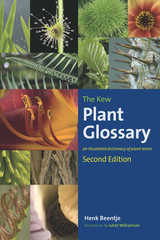 The Kew Plant Glossary: An Illustrated Dictionary of Plant Terms - Second Edition
Henk Beentje
Royal Botanic Gardens, Kew, 2015 If asked to describe a plant, many of us would have to resort to basic descriptors such as vague shapes or simple colors. But for those who work and write in the plant world, there are thousands of terms available for crafting the perfect characterization. A pear’s shape can be called pyriform, while lemon’s form is prolate. A petal might range from caesious (pale blue-grey or -green) to ceraceous (pale cream) to cinerous (ash grey). And the autumnal spread of fallen leaves is called, elegantly, leaf litter.
The Kew Plant Glossary is a comprehensive guide to the myriad of terms used in the identification and conservation of plants. This new edition adds more than four hundred new entries, including a vegetation-type section, bringing the total to 4,905 botanical terms and seven hundred illustrations. The terms are clearly explained, many with basic line drawings to further clarify a description. Henk Beentje consulted a host of botanical works as well as colleagues working in the field to create a glossary that is clear, easy to use, and free of confusion. He notes terms that are easily mixed up with others and points out phrases that are considered outside common usage.
This is an essential companion for anyone who finds themselves searching for the right word when writing about plants, who needs to clearly identify the pieces of their work, or who just wants to talk more authoritatively about the plants they love.
 The Kew Temperate Plant Families Identification Handbook
Edited by Gemma Bramley, Anna Trias Blasi, and Richard Wilford
Royal Botanic Gardens, Kew, 2023 A richly illustrated guide to the identification of temperate plants.
The Royal Botanic Gardens, Kew is a center of expertise for cultivating a range of plants from around the world. The Kew Temperate Plant Families Identification Handbook draws on the combined knowledge of those experts to create a guide to the commonly found plants of temperate regions—areas between the subtropics and the polar circles. In this book, Kew’s experts present unrivaled scientific and horticultural knowledge of the plants they encounter. The book describes one hundred plant families in detail, illustrating them with photographs showing the important identification characteristics, along with distribution maps, line drawings, and herbarium sheets. This book will be the primary resource for plant identification for those working in temperate regions around the world.
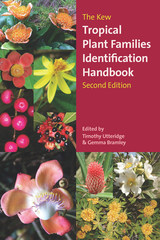 The Kew Tropical Plant Families Identification Handbook: Second Edition
Edited by Timothy Utteridge and Gemma Bramley
Royal Botanic Gardens, Kew, 2015 The Kew Tropical Plant Families Identification Handbook is an authoritative guide to the commonly encountered and ecologically important plants of the tropics. Written by experts at the Royal Botanic Gardens, Kew, this handbook is based on Kew’s popular Tropical Plant Identification course, which uses classical morphology, as well as more simple “spot” characteristics, to teach plant identification.
This fully updated second edition adds seventeen new family and subfamily descriptions and includes updated research throughout. Each of the one hundred families is described in detail and richly illustrated with photographs that show important identification characteristics. The book’s emphasis on images and the foundations of identification means that both specialists and nonspecialists alike will be able to use this guide.
The Kew Tropical Plant Families Identification Handbook is a portable, easy-to-use resource, perfect for tropical botanists as well as students and conservation professionals.
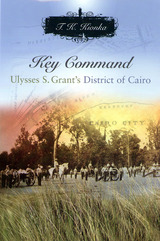 Key Command: Ulysses S. Grant's District of Cairo
T. K. Kionka
University of Missouri Press, 2006 During the Civil War, Cairo, Illinois, held a uniquely strategic position: it was not only the southernmost northern city, but it was also located at the confluence of the Mississippi and Ohio rivers. Union strategists believed that the importance of securing it could not be overestimated, and Cairo was occupied by the first volunteer regiments organized in the western theater of the war. Arriving six months later, an underappreciated general named Ulysses S. Grant decided that the Union could do more with Cairo than simply guard it, and using the town as his headquarters, he set about reclaiming the Mississippi valley from Rebel forces. This book reveals the story of how Grant honed his strategic skills in those campaigns while also telling of the changes that came to Cairo. Key Command examines Grant’s tenure at his first district command from both military and administrative perspectives. T. K. Kionka has written the first book-length study of the district, exploring the town’s Civil War legacy while shedding new light on Grant, the war in the West, and other important Union generals such as Logan and McClernand. From this command post, Grant led troops to the first great Union victories at Belmont, Fort Henry, and Fort Donelson, and Kionka explores their role in Grant’s military evolution while highlighting the contributions of civilian volunteers through first-person accounts. Nineteenth-century Cairo was home to an unruly, ethnically diverse population, and Kionka interweaves the story of Grant’s military campaign with a social history of the town, describing the men and women associated with the Cairo camps who played significant roles in Grant’s command. Grant’s victories not only sealed his own reputation, but they also brought unprecedented wealth to a town that before the war had failed to develop under two different land companies. Kionka’s work tells how local entrepreneurs made money supplying Grant’s troops and how unscrupulous speculators poured into Cairo as Grant coped with dissension, supply shortages, and refugees. It also examines the prewar movement to create a new state out of southern Illinois and its implications both for Cairo and for Union strategy. More than a military history, Key Command gives readers a glimpse of the social and cultural atmosphere of an important military base that proved to be the decisive training ground for the most successful general in the war. With its insight into a polarized society and wartime corruption, Kionka’s readable account sheds new light on our own times as it tells the story of a town struggling to survive and a man fighting to succeed.
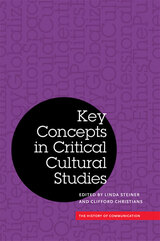 Key Concepts in Critical Cultural Studies
Edited by Linda Steiner and Clifford Christians
University of Illinois Press, 2010 This volume brings together sixteen essays on key and intersecting topics in critical cultural studies from major scholars in the field. Taking into account the vicissitudes of political, social, and cultural issues, the contributors engage deeply with the evolving understanding of critical concepts such as history, community, culture, identity, politics, ethics, globalization, and technology. The essays address the extent to which these concepts have been useful to scholars, policy makers, and citizens, as well as the ways they must be rethought and reconsidered if they are to continue to be viable. Each essay considers what is known and understood about these concepts. The essays give particular attention to how relevant ideas, themes, and terms were developed, elaborated, and deployed in the work of James W. Carey, the "founding father" of cultural studies in the United States. The contributors map how these important concepts, including Carey's own work with them, have evolved over time and how these concepts intersect. The result is a coherent volume that redefines the still-emerging field of critical cultural studies. Contributors are Stuart Allan, Jack Zeljko Bratich, Clifford Christians, Norman Denzin, Mark Fackler, Robert Fortner, Lawrence Grossberg, Joli Jensen, Steve Jones, John Nerone, Lana Rakow, Quentin J. Schultze, Linda Steiner, Angharad N. Valdivia, Catherine Warren, Frederick Wasser, and Barbie Zelizer.
Key Concepts in Public Archaeology
Edited by Gabriel Moshenska
University College London, 2017 This book presents an overview of the key concepts in public archaeology—a field that examines the relationship between archaeology and the public—and seeks to clarify the discipline by adopting a socially and politically engaged vision. The individual chapters introduce the themes, theories, and controversies that connect archaeology to society by providing case studies that survey the trade in illicit antiquities and how digital media are used to promote public engagement with the field. Written for both students and practitioners alike, the book also will be an essential resource for pointing readers to further scholarship.
 Key Concepts of Romanian History: Alternative Approaches to Socio-Political Languages
Victor Neumann
Central European University Press, 2013 The theoretical analyses and interpretations contained in the studies of this volume focus on key-concepts such as: politics, politician, democracy, Europe, liberalism, constitution, property, progress, kinship, nation, national character and specificity, homeland, patriotism, education, totalitarianism, democracy, democratic, democratization, transition. The essays unveil specific aspects belonging to Romania's past and present. They also offer alternative perspectives on the Romanian culture through the relationship between the elite and society, and novel reflections on the delayed and unfinished modernization processes within the society and the state. The editors articulate the results coming from various sciences, such as history, linguistics, sociology, political sciences, and philosophy with the aim that the past and present profiles of Romania are better understood.
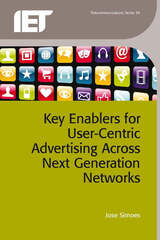 Key Enablers for User-Centric Advertising Across Next Generation Networks
Jose Simoes
The Institution of Engineering and Technology, 2012 Telecommunication and internet services are constantly subject to change, seeking the customer's full satisfaction. Enriching these services with innovative approaches such as contextaware, social, mobile, adaptable and interactive mechanisms, enables users to experience a variety of personalized services seamlessly across different platforms and technologies. In this sense, advertising is no exception, especially if we consider that it will become the business enabler for next generation services. Nevertheless, currently there is no cross-domain solution capable of delivering real-time advertising across heterogeneous environments or domains, and at the same time, address user needs, desires and intentions. This is because most of the products available today are only used within isolated environments / silos. Therefore, managing advertising campaigns across different verticals is still very complex. However, leveraging on the advances provided by Next Generation Networks, together with the design principles inherent to Service Oriented Architectures and capabilities offered by Service Delivery Platforms, this scenario is about to change. Based on key conceptual entities called enablers, this work aims to change the current scenario. More concretely, this book introduces three distinct but complementary enablers. The Human Enabler provides a real-time context brokerage system capable of securely managing different types of user-related data in a standardized way. The Reasoning Enabler is the result of a welldefined methodology that enables new knowledge to be reasoned, based on previously stored data, by aggregating, correlating and inferring new information about people and their contexts. Lastly, the Session Management Enabler is responsible for abstracting the communication layers. It provides a context-aware multimedia delivery system capable of personalizing and adapting multimedia content according to a set of user and system pre-defined context data or rules, respectively. Altogether, they form the Converged User-Centric Advertising System and introduce new features that address the needs of both users and advertisers.
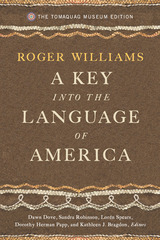 A Key into the Language of America: The Tomaquag Museum Edition
Roger Williams
Westholme Publishing, 2019 A New Edition of One of the Most Important Cultural Artifacts of European and Indigenous American Contact
Roger Williams’s Key into the Language of America, first published in 1643, is one of the most important artifacts of early Indigenous American culture. In it, Williams recorded the day-to-day experience of the Narragansett people of Rhode Island in their own words, the first documentation of an American Indian language in English. Williams’s Key can be read at many levels because of its historical, literary, political, and religious significance. Its greatest value, though, is its intimate portrait of the Narragansett and their linguistic neighbors in the early years of European colonial settlement, before disease, dislocation, warfare—in particular, King Philip’s War—and colonial interference had diminished their population and power in the region. An extraordinary achievement, Williams’s Key gives us a contemporary account of Narragansett family life, of their sociability and skill in business, their dress, foodways, and the farming, fishing, and hunting that formed the basis of their sustenance practices.
This new Tomaquag Museum edition includes for the first time cultural commentary provided by the Narragansett Tribe as well as modern linguistic information provided by a leading authority in the study of American Indian languages.
The Tomaquag Museum, located in Exeter, Rhode Island, is an Indigenous nonprofit organization dedicated to sharing the culture, arts, and history of the Narragansett and other tribal communities of southern New England.
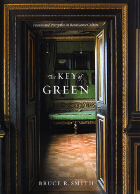 The Key of Green: Passion and Perception in Renaissance Culture
Bruce R. Smith
University of Chicago Press, 2008 From Shakespeare’s “green-eyed monster” to the “green thought in a green shade” in Andrew Marvell’s “The Garden,” the color green was curiously prominent and resonant in English culture of the sixteenth and seventeenth centuries. Among other things, green was the most common color of household goods, the recommended wall color against which to view paintings, the hue that was supposed to appear in alchemical processes at the moment base metal turned to gold, and the color most frequently associated with human passions of all sorts. A unique cultural history, The Key of Green considers the significance of the color in the literature, visual arts, and popular culture of early modern England.
Contending that color is a matter of both sensation and emotion, Bruce R. Smith examines Renaissance material culture—including tapestries, clothing, and stonework, among others—as well as music, theater, philosophy, and nature through the lens of sense perception and aesthetic pleasure. At the same time, Smith offers a highly sophisticated meditation on the nature of consciousness, perception, and emotion that will resonate with students and scholars of the early modern period and beyond. Like the key to a map, The Key of Green provides a guide for looking, listening, reading, and thinking that restores the aesthetic considerations to criticism that have been missing for too long.
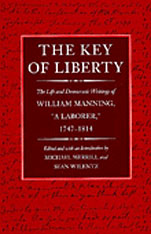 The Key of Liberty: The Life and Democratic Writings of William Manning, “a Laborer,” 1747–1814
Michael Merrill
Harvard University Press, 1993 The recovery of the ideas and experiences of William Manning is a major event in the history of the American Revolutionary era. A farmer, foot soldier, and political philosopher, Manning was a powerful democratic voice of the common American in a turbulent age. The public crises of the infant republic—beginning with the Battle of Concord—shaped his thinking, and his writings reveal a sinewy mind grappling with some of the weightiest issues of the nation’s founding. His most notable contribution was the first known plan for a national political association of laboring men. That plan, and Manning’s broader conclusions, open up a new vista on the popular origins of American democracy and the invention of American politics.
Until now, only a few specialists have referred to any of Manning’s writings—though always with some wonderment at his sophistication—and his place as a pioneering and exemplary American democrat has been largely unacknowledged. In this new and complete presentation of his works, the often arid debates over “republicanism” and “liberalism” in early America come to life in vivid human detail. The early growth of democratic impulses among quite ordinary people—impulses that defy orthodox categories, yet come closer to describing the ferment that led to the repeated political conflicts of the late eighteenth century—is here visible and felt. The Key of Liberty allows us a fuller understanding of the popular responses to the major political battles of the early republic, from Shays’ Rebellion through the election of Thomas Jefferson. It offers, better than any book yet published, a grassroots view of the rise of democratic opposition in the new nation. It sheds considerable light on the popular culture—literary, religious, and profane—of the epoch, with more exactness than previous histories, presenting a new interpretation of early American democracy that is bound to be controversial and much discussed.
The editors have written a lengthy and detailed introduction placing Manning and his writings in broad context. They have also modernized the text for easy use and have included full annotation, making this volume an authoritative contribution to the American Revolution and its aftermath.
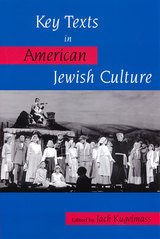 Key Texts in American Jewish Culture
Kugelmass, Jack
Rutgers University Press, 2003 Key Texts in American Jewish Culture expands the frame of reference used by students of culture and history both by widening the "canon" of Jewish texts and by providing a way to extrapolate new meanings from well-known sources.
Contributors come from a variety of disciplines, including American studies, anthropology, comparative literature, history, music, religious studies, and women's studies. Each provides an analysis of a specific text in art, music, television, literature, homily, liturgy, or history. Some of the works discussed, such as Philip Roth's novel Counterlife, the musical Fiddler on the Roof, and Irving Howe's World of Our Fathers, are already widely acknowledged components of the American Jewish studies canon. Others-such as Bridget Loves Bernie, infamous for the hostile reception it received among American Jews+ may be considered "key texts" because of the controversy they provoked. Still others, such as Joshua Liebman's Piece of Mind and the radio and TV sitcom The Goldbergs, demonstrate the extent to which American Jewish culture and mainstream American culture intermingle with and borrow from each other.
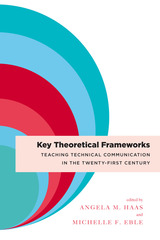 Key Theoretical Frameworks: Teaching Technical Communication in the Twenty-First Century
Angela M. Haas
Utah State University Press, 2018 Drawing on social justice methodologies and cultural studies scholarship, Key Theoretical Frameworks for Teaching Technical Communication in the Twenty-First Century offers new curricular and pedagogical approaches to teaching technical communication. Including original essays by emerging and established scholars, the volume educates students, teachers, and practitioners on identifying and assessing issues of social justice and globalization.
The collection provides a valuable resource for teachers new to translating social justice theories to the classroom by presenting concrete examples related to technical communication. Each contribution adopts a particular theoretical approach, explains the theory, situates it within disciplinary scholarship, contextualizes the approach from the author’s experience, and offers additional teaching applications.
The first volume of its kind, Key Theoretical Frameworks for Teaching Technical Communication in the Twenty-First Century links the theoretical with the pedagogical in order to articulate, use, and assess social justice frameworks for designing and teaching courses in technical communication.
Contributors: Godwin Y. Agboka, Matthew Cox, Marcos Del Hierro, Jessica Edwards, Erin A. Frost, Elise Verzosa Hurley, Natasha N. Jones, Cruz Medina, Marie E. Moeller, Kristen R. Moore, Donnie Johnson Sackey, Gerald Savage, J. Blake Scott, Barbi Smyser-Fauble, Kenneth Walker, Rebecca Walton
Key Thinkers in Childhood Studies
Carmel Smith and Sheila Greene
Bristol University Press, 2015 Key Thinkers in Childhood Studies presents the contrasting perspectives of some of the leading figures involved in shaping the field of childhood studies over the last thirty years. Drawing on in-depth interviews with twenty-two high profile pioneers in the subject—who together represent a range of disciplines and regions—Carmel Smith and Sheila Greene share a wealth of experiences in this innovative field. The authors and interviewees reflect upon the significant changes that have taken place in the study of children and childhood, discuss the evolution of ideas underpinning the field, examine current tensions and dilemmas, and explore challenges for the future. The result is an innovative look at the ways we think about and care for our children.
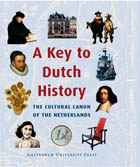 A Key to Dutch History: The Cultural Canon of the Netherlands
Edited by Frits van Oostrom and Hubert Slings
Amsterdam University Press, 2007 Many people know the stories behind the tulip mania in the 17th century and the legacy of the Dutch East India Company, but what basic knowledge of Dutch history and culture should be passed on to future generations? A Key to Dutch History and its resulting overview of historical highlights, assembled by a number of specialists in consultation with the Dutch general public, provides a thought-provoking and timely answer. The democratic process behind the volume is reminiscent of the way in which the Netherlands has succeeded for centuries at collective craftsmanship, and says as much about the Netherlands as does the outcome of the opinions voiced.
The Cultural Canon of the Netherlands consists of a list of fifty topics from Dutch culture and history, varying from the megalithic tombs in the province of Drenthe and Willem of Orange to the Dutch constitution and the vast natural gas field in the province of Groningen. These fifty topics act as a framework for understanding and even studying Dutch culture and history. The canon should lead to further understanding and deepening of our knowledge of our past and act as an inspirational source for pupils, students and the public at large.
 The Key to Natural Philosophy
Honorius Augustodunensis
Catholic University of America Press, 2026 Honorius Augustodunensis (“of Regensburg”), born perhaps in the 1070s, was a native son of southern Germany or Austria who pursued his studies in England with St. Anselm of Canterbury. Under Anselm’s influence he became a Benedictine monk before returning to Germany in the opening years of the twelfth century. During his life-long monastic career he blossomed as a prolific writer. He died around 1140. The epithet “of Autun,” as a translation of “Augustodunensis,” was applied to him by scholars a century ago and earlier, but it has long been discredited, and the meaning of “Augustodunensis” remains a mystery. Although Honorius has been appropriately described as an enigmatic figure, his strong influence on Western theologians is widely recognized.
Despite his large corpus, now known to consist of approximately thirty texts (but almost certainly more) Honorius Augustodunensis is the most unjustly neglected writer of the twelfth- century renaissance. Although he is best known as a popularizer, he also composed a major philosophical text, The Key to Natural Philosophy (Clavis physicae), ca. 1125-30. Taking the form of a dialogue between master and disciple, the Clavis is an abridged paraphrase of Eriugena’s Periphyseon, the most radical work of Neoplatonic thought in the time frame between pseudo-Dionysius and Meister Eckhart. Honorius treats such topics as the unknowability of God, apophatic and cataphatic theology, the primordial causes, the cosmological process of creation and return, human and angelic nature, the Fall, the four elements, and the findings of ancient astronomers. Although Eriugena was condemned for heresy in the thirteenth century, Honorius managed to escape that censure. The Key to Natural Philosophy thus became the chief conduit of the Carolingian philosopher’s thought in the later Middle Ages, influencing readers from Eckhart through Nicholas of Cusa.
A Key to Pacific Grasses
W. D. Clayton and Neil Snow
Royal Botanic Gardens, Kew, 2010 The Pacific Ocean is the most expansive geographical feature on Earth. Included in its domain are thousands of atolls, smaller islands and, depending on how its boundaries are defined, several larger islands and island groups. Members of the grass family, Poaceae, are almost ubiquitous and are widespread across the Pacific. This detailed key enumerates 420 species of non-bambusoid grasses in 120 genera and provides a taxonomic reference for grasses growing throughout this region.
The Key to the City
Anne Winters
University of Chicago Press, 1985 The Key to the City brings together work that has long been admired by readers of literary magazines and quarterlies. The collection opens with "The Ruins," a group of poems set in poor neighborhoods in New York City—some so cut off from midtown that they seem part of another continent or another age. The people in these poems are schoolgirls, a cleaning lady in the laundromat, derelicts, a prostitute stabbed in the street. Their interwoven voices contribute to a complex, grave vision of remote causes and immediate suffering in the city. The poems of the second section explore a broad range of experience: pregnancy and nursing, inward solitude, the textures of Renaissance painting and American landscapes.
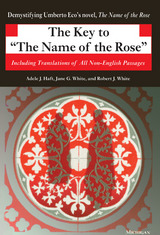 The Key to The Name of the Rose: Including Translations of All Non-English Passages
Adele J. Haft, Jane G. White, and Robert J. White
University of Michigan Press, 1999 Umberto Eco's The Name of the Rose is a brilliant mystery set in a fictitious medieval monastery. The text is rich with literary, historical, and theoretical references that make it eminently re-readable. The Key makes each reading fuller and more meaningful by helping the interested reader not merely to read but also to understand Eco's masterful work. Inspired by pleas from friends and strangers, the authors, each trained in Classics, undertook to translate and explain the Latin phrases that pepper the story. They have produced an approachable, informative guide to the book and its setting--the middle ages. The Key includes an introduction to the book, the middle ages, Umberto Eco, and philosophical and literary theories; a useful chronology; and reference notes to historical people and events. The clear explanations of the historical setting and players will be useful to anyone interested in a general introduction to medieval history.
Adele J. Haft is Associate Professor of Classics, Hunter College, City University of New York. Jane G. White is chair of the Department of Languages, Dwight Englewood School. Robert J. White is Professor of Classics and Oriental Studies, Hunter College, City University of New York.
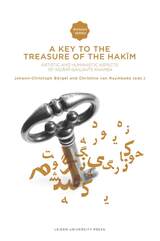 A Key to the Treasure of the Hakim: Artistic and Humanistic Aspects of Nizami Ganjavi’s Khamsa
Johann Christoph Bürgel
Amsterdam University Press, 2011 This “Key” to the Khamsa consists of thirteen essays by eminent scholars in the field of Persian Studies, each focusing on different aspects of the Khamsa, which is a collection of five long poems written by the Persian poet Nizami of Ganja.
Nizami (1141-1209) lived and worked in Ganja in present-day Azerbaijan. He is widely recognized as one of the main poets of Medieval Persia, a towering figure who produced outstanding poetry, straddling mysticism, romances and epics. He has left his mark on the whole Persian-speaking world and countless younger poets in the area stretching from the Ottoman to the Mughal worlds (present-day Turkey, Azerbaijan, Armenia, Georgia, Iran, Afghanistan, Uzbekistan, Tajikistan, Pakistan, India) have found him an inspiration and have tried to emulate him. His work has influenced such other immense poets as Hafez, Rumi, and Saadi.
His five masnavis (long poems) address a variety of topics and disciplines and have all enjoyed enormous fame, as the countless surviving manuscripts of his work indicate. His heroes, Khosrow and Shirin, Leili and Majnun, Iskandar count amongst the stars of the Persian literary firmament and have become household names all over the Islamic world.
The essays in the present volume constitute a significant development in the field of Nizami-studies, and on a more general level, of classical Persian literature. They focus on topics such as mysticism, art history, comparative literature, science, and philosophy. they show how classical Greek knowledge mingles in a unique manner with the Persian past and the Islamic culture in Nizami’s world. They reflect a high degree of engagement with the existing scholarship in the field, they revive and challenge traditional views on the poet and his work and are indispensable both for specialists in the field and for anyone interested in the movement of ideas in the Medieval world.
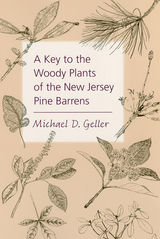 A Key to the Woody Plants of the New Jersey Pine Barrens
Geller, Michael D
Rutgers University Press, 2002 Within southern New Jersey lies the largest expanse of undeveloped land in the megalopolis between Boston and Washington, D.C. This is the Pine Barrens, our nation’s first National Reserve, where visitors are struck by how much the vegetation varies from surrounding areas. Because the sandy soil is only marginally suitable for most agriculture and because the location amounts to a peninsula, settlement has been limited and the current ecology is relatively untouched. However, as New Jersey’s population increases, people are looking to the Pine Barrens with a new interest.
A Key to the Woody Plants of the New Jersey Pine Barrens is a hand-illustrated, user-friendly guide for both the interested student and weekend naturalist. The key lists all of the woody plants of the Pine Barrens except for a few rare, non-native species. In several keys and more than fifty highly detailed drawings, Michael D. Geller describes the basic features of woody plants and explains how to identify plants both in summer and winter. Along with his set of workable identification keys, the author provides an enjoyable introduction to the geology, ecology, and history of the region, and relates each to the unique flora of the Pine Barrens. The book provides readers with an effective means of identifying the plants that are hallmarks of one of the state’s last wild areas.
A Key to the World
Victor Abbou
Gallaudet University Press, 2021 Victor Abbou is an invaluable witness to the period in France which is called the Deaf Awakening. His story is a treasure trove of archival material of that period, as he was one of the trailblazers in so many fields: actor, activist, trainer and teacher of future interpreters studying at the university. In doing all of this, he created bridges between two worlds, the world of the deaf and the world of the hearing, which were in close proximity but which were separated by a great chasm. Victor's story also shines a light on the key role played by several Americans who contributed significant sparks which ignited the French Deaf Awakening. This Franco-American connection in contemporary Deaf history is yet another bridge which Victor Abbou's story documents in great detail.
Published by Eyes Editions.
Includes links to two hours of video in International Sign.
A Key to the World
Victor Abbou
Gallaudet University Press, 2021 Victor Abbou is an invaluable witness to the period in France which is called the Deaf Awakening. His story is a treasure trove of archival material of that period, as he was one of the trailblazers in so many fields: actor, activist, trainer and teacher of future interpreters studying at the university. In doing all of this, he created bridges between two worlds, the world of the deaf and the world of the hearing, which were in close proximity but which were separated by a great chasm. Victor's story also shines a light on the key role played by several Americans who contributed significant sparks which ignited the French Deaf Awakening. This Franco-American connection in contemporary Deaf history is yet another bridge which Victor Abbou's story documents in great detail.
Published by Eyes Editions.
Includes links to two hours of video in International Sign.
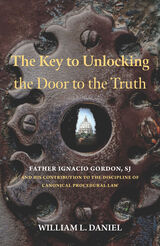 The Key to Unlocking the Door to the Truth: Father Ignacio Gordon, SJ, and His Contribution to the Discipline of Canonical Procedural Law
William L. Daniel
Catholic University of America Press, 2022 Father Ignacio Gordon, SJ, taught canon law (the Catholic Church’s law) from 1960 until 1985 at the Pontifical Gregorian University in Rome, with a concentration on procedural law, or the laws on trials. By all testimonies, he was outstanding for the clarity of his teaching, his humble affection for his students, his indefatigable and hidden service to the Apostolic See, and his priestly zeal. Notable among his endeavors was an educational initiative for the ongoing formation of judges and other ministers of justice in ecclesiastical tribunals. In his teaching, he stressed the ecclesial importance and supernatural implications of procedural law in general, and the indispensability of the judicial protection of marriage in particular. Special efforts were made to make procedural law understandable to his students and to canonists in general, at a time when the Church was celebrating and implementing the teachings of the Second Vatican Ecumenical Council, as a result of which her law was undergoing a major revision. Father Gordon taught from the consistent canonical tradition, while also laying bare the latest developments in law and jurisprudence. He taught the entirety of the law on trials, producing numerous scholarly works on questions both timeless and new, giving marked emphasis to the problem of the excessive length of trials and the causes of delayed justice. An area of his particular attention and dedication was the Supreme Tribunal of the Apostolic Signatura—of which he was a consultor (referendary and later votans)—including both its proper law and its history. This history displayed, in part, why that Tribunal was the natural one to function as the supreme administrative tribunal of the Church. Father Gordon’s contribution to the question of ecclesiastical administrative justice was among those leading the novel and dynamic discussion about it in the 1960s and 1970s.
A Key to Whitehead's Process and Reality
Donald W. Sherburne
University of Chicago Press, 1981 Whitehead's magnum opus is as important as it is difficult. It is the only work in which his metaphysical ideas are stated systematically and completely, and his metaphysics are the heart of his philosophical system as a whole. Sherburne has rearranged the text in a way designed to lead the student logically and coherently through the intricacies of the system without losing the vigor of Whitehead's often brilliant prose.
"The Key renders Process and Reality pedagogically accessible for the first time."—Journal of Religion
 Key Words in Buddhism
Ron Geaves
Georgetown University Press, 2006 Daily political events and the steady inevitability of globalism require that informed students and citizens learn something about religious traditions foreign to their own. Designed for both classroom and general use, these handy Key Words guidebooks are essential resources for those who want clear and concise explanations of common terms and unfamiliar concepts of major world religions. Each pocket-sized volume contains definitions for over 400 terms from religious principles and significant periods to noteworthy figures. A quick sampling of terms from this volume: Bodhisattva
Bhavana
Jaramarana
Kalachakra
Mala
Mantra
Nirvana
Samadhi
Zen Sample Definitions: Brahma Viharas: The four sublime states of loving kindness, compassion, sympathetic joy, and evenness of mind achieved by the practice of bhavana (see bhavana, metta, karuna, mudita, upekkha). Jaramarana: Old age and death. The final link in the causal chain of existence which arises from jati or birth. The Buddha left his palace to search for enlightenment after experiencing the shock of seeing old age, sickness and death (see jati, Siddharta Gotma,. nidanas, samsara).
 Key Words in Christianity
Ron Geaves
Georgetown University Press, 2006 Daily political events and the steady inevitability of globalism require that informed students and citizens learn something about religious traditions foreign to their own. Designed for both classroom and general use, these handy Key Words guidebooks are essential resources for those who want clear and concise explanations of common terms and unfamiliar concepts of major world religions. Each pocket-sized volume contains definitions for over 400 terms from religious principles and significant periods to noteworthy figures. A quick sampling of terms from this volume: Ascension
Beatification
Catechism
Evangelical
Humanae vitae
Last Supper
Martyr
Repentance
Sermon on the Mount Sample Definitions: Catechism The manual of Christian doctrine in a questions and answer format generally associated with teaching those preparing for Confirmation (see Confirmation). Sermon on the Mount The famous discourse of Jesus described in Chapter 5 of Matthew's gospel which provides the basis of Christian ethics (see Beatitudes, Lord's Prayer).
 Key Words in Hinduism
Ron Geaves
Georgetown University Press, 2006 Daily political events and the steady inevitability of globalism require that informed students and citizens learn something about religious traditions foreign to their own. Designed for both classroom and general use, these handy Key Words guidebooks are essential resources for those who want clear and concise explanations of common terms and unfamiliar concepts of major world religions. Each pocket-sized volume contains definitions for over 400 terms from religious principles and significant periods to noteworthy figures. A quick sampling of terms from this volume: Ashram
Brahman
Dharma
Gyana
Janmashtami
Kalpa
Mantra
Ramayana
Upanishads Sample Definitions: Ashram Lit. shelter. A retreat place or hermitage used for spiritual development and often the centre of teaching for a particular guru or sect. Gyana Spiritual knowledge. Sometimes it is understood that such knowledge can be learned by the study of scriptures but it is also used to describe knowledge that arises from direct experience of God (Brahman) or realization of the Self (atman). The relationship between these two informs different theories concerning spiritual knowledge (see Vedanta, atman, Brahman, jnana).
 Key Words in Islam
Ron Geaves
Georgetown University Press, 2006 Daily political events and the steady inevitability of globalism require that informed students and citizens learn something about religious traditions foreign to their own. Designed for both classroom and general use, these handy Key Words guidebooks are essential resources for those who want clear and concise explanations of common terms and unfamiliar concepts of major world religions. Each pocket-sized volume contains definitions for over 400 terms from religious principles and significant periods to noteworthy figures. A quick sampling of terms from this volume: Ahwal
Da'wa
Hajj
Izzat
Madrasa
Ramadan
Shari'a
Watan
Zakat Sample Definitions: Izzat (Urdu) The concept of honour or family pride. Izzat functions as an eclectic mixture of Islamic codes and local customs which the family members are expected to observe. Non-observance leads to disgrace for the individual and the family. Ramadan/Ramazan (U) The ninth month of the Muslim year which is observed as a fast lasting from sunrise to sunset. The fast is one of the five pillars of Islam and during this period Muslims should abstain from food, water and sexual activity. The fast is commanded by Allah in the Qur'an and is therefore obligatory for all adult Muslims except in special circumstances such as illness or menstruation. In such circumstances it is permissible to make up the period of the fast at a later date. The period of Ramadan includes some of the holiest occasions of the Muslim year such as the Night of Power that marks the first revelation of the Qur'an to Muhammad. The fast ends with the festival of Eid al-Fitr. The month of Ramadan is a period of extra religious sensitivity and many Muslims who are not usually observant will attend the mosque and perform their prayers five times a day. The fast provides an opportunity to reflect on religious matters and pass a month in prayer but is also considered to be a means of creating empathy for the poor and needy in the community (see itikaf, Eid al-Fitr, Laylat ul-Qadr).
 Key Words in Judaism
Ron Geaves
Georgetown University Press, 2006 Daily political events and the steady inevitability of globalism require that informed students and citizens learn something about religious traditions foreign to their own. Designed for both classroom and general use, these handy Key Words guidebooks are essential resources for those who want clear and concise explanations of common terms and unfamiliar concepts of major world religions. Each pocket-sized volume contains definitions for over 400 terms from religious principles and significant periods to noteworthy figures. A quick sampling of terms from this volume: Berit
Emunah
Haroset
Kaddish
Mezzuzah
Rosh Hashanah
Shabat
Yeshiva
Zionism Sample Definitions: Emunah Lit. Faith. The foundation of the Jewish tradition, it essentially refers to trust in God and reliance on Him to guide the people perfectly. If a person trusts completely in God, everything else will fall into place. Yeshiva/Yeshivah A college for the study of Torah and Talmud. Although Jewish males had always engaged in study of the Torah under the guidance of their Rabbis, in the nineteenth century, organized colleges appeared in eastern Europe which allowed progression through the various stages of study. Secular study was not permitted and some students spent a lifetime in study of Torah, Talmud and Halakhah (see Torah, Talmud, Halakhah).
 Key Words in Religious Studies
Ron Geaves
Georgetown University Press, 2006 Daily political events and the steady inevitability of globalism require that informed students and citizens learn something about religious traditions foreign to their own. Designed for both classroom and general use, these handy Key Words guidebooks are essential resources for those who want clear and concise explanations of common terms and unfamiliar concepts of major world religions. Each pocket-sized volume contains definitions for over 400 terms from religious principles and significant periods to noteworthy figures. A quick sampling of terms from this volume: Agnosticism
Canon
Exegesis
Grace
Liberation Theology
Monotheism
Parable
Ritual
Theocracy Sample Definitions: Exegesis The process of explaining a sacred text in order to penetrate further into the author's meaning or to apply new interpretations based upon contemporary situations or enhanced knowledge (see hermeneutics, sacred texts). Monotheism The worship of one God regarded as the sole and universal creator of the universe, typically expressed in the religions of Judaism, Islam and Christianity. However varieties of monotheism can also be found in Indian traditions. Monotheistic beliefs classically assert that such a deity is personal, caring for and involving itself in the affairs of human beings through revelation (see deism, monism, henotheism, polytheism, revelation).
 Keyboard Music from the Andreas Bach Book and the Möller Manuscript
Robert Hill
Harvard University Press, 1991 This anthology of 55 keyboard works provides an instructive picture of the music of the young J. S. Bach within the context of a spectrum of works by his elder contemporaries.
The Andreas Bach Book and the so-called Möller Manuscript, the most important sources for the young Bach’s keyboard music, were compiled in the early eighteenth century by Bach’s eldest brother and only keyboard teacher, Johann Christoph Bach of Ohrdruf, himself a pupil of Johann Pachelbel. The significance of the two manuscripts lies not only in their close connection to J. S. Bach (as evidenced by Bach autographs in both books), but equally in the fact that they contain some of the most outstanding keyboard music by Bach’s North German colleagues: Georg Böhm, Dietrich Buxtehude, and Johann Adam Reincken. While some of these compositions have been published in modern editions, others have been entirely overlooked.
This anthology presents keyboard works by the young J. S. Bach which are either little known or are earlier versions of better known works (for example, the Passacaglia in C Minor, BWV 582). Also included are all the unpublished keyboard works in the two manuscripts, as well as works by lesser known composers for which modern editions are not easily accessible. Rounding out the picture are works by well-known contemporaries for which the transmission in the young Bach’s circle proves particularly significant.
Intended for both player and scholar, this edition offers the texts of the two manuscripts in an easy to read layout that emphasizes the clarity of the counterpoint. Of particular interest to organists is the presentation of the organ works in the appropriate notion of the time, on two staves with the pedal voice integrated in the bass staff.
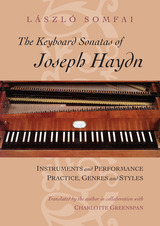 The Keyboard Sonatas of Joseph Haydn: Instruments and Performance Practice, Genres and Styles
László Somfai
University of Chicago Press, 1995 Interest in the authentic performance of early music has grown dramatically in recent years, and scholarly investigation has particularly benefited the study of keyboard music of the classical period. In this landmark publication, the most comprehensive study written on Haydn's keyboard sonatas, a leading Haydn scholar presents novel ideas, corrects misconceptions, and offers new hypotheses on long-debated issues of early music research.
Laszlo Somfai begins with a thorough study of Haydn's keyboard instruments and their development. After recommending instruments appropriate for modern use, he discusses performance practice and style, explains the peculiarities of Haydn's manuscripts in the context of eighteenth-century notation, and provides specific suggestions for playing ornaments, improvising, slurring, and dynamics. He also investigates Haydn's sonata genres within their historical context and discusses the problems of establishing a chronology of their composition. Finally, Somfai analyzes the organization and style of each musical form. The book includes an index listing the sonatas by date of first publication, and an extensive bibliography.
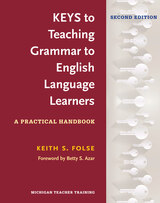 Keys to Teaching Grammar to English Language Learners, Second Ed.: A Practical Handbook
Keith S. Folse
University of Michigan Press, 2016 A MICHIGAN TEACHER TRAINING title
Keys to Teaching Grammar to English Language Learners: A Practical Handbook is not intended to be an exhaustive reference book about ESL grammar. Written for classroom teachers (K-12, ESL, EFL), this book teaches the most common ESL grammar points in an accessible way through real ESL errors together with suggested teaching techniques. Relevant grammar terminology is explained.
The four objectives of this book are to help teachers: (1) identify common ESL grammar points and understand the details associated with each one; (2) improve their ability to answer any grammar question on the spot (when on the “hot seat”); (3) anticipate common ESL errors by grammar point, by first language, and/or by proficiency level; and (4) develop more effective grammar/language learning lessons. These objectives are for all teachers, whether they are teaching grammar directly or indirectly in a variety of classes – including a grammar class, a writing class, a speaking class, an ESP class, or a K-12 class.
In the Second Edition, all chapters have been updated and substantively revised. The number of marginal (gray) boxes with tips and extra information has doubled. A 16th Key, on Negating, and three new appendixes have been added. One of the new appendixes provides a sample exercise from an actual ESL textbook plus relevant notes about the designing of grammar activities and suggestions for teaching each grammar point.
Also added to each Key is a section on the vocabulary items (e.g., collocations) that are related to the teaching of that particular grammar point. This information is unique to this edition and cannot be found elsewhere on the market.
The Workbook for the Second Edition (978-0-472-03679-0), available in 2017, includes numerous activities that practice the essentials of grammar and issues relevant to ESL teachers.
Keys to the Flora of Arkansas
Edwin Smith
University of Arkansas Press, 1994 This comprehensive guide includes taxonomic keys to the families, genera, species, and infraspecific taxa of all the known vascular plants of Arkansas.
 Keywords and Concepts in Evolutionary Developmental Biology
Brian K. Hall
Harvard University Press, 2006 The new field of evolutionary developmental biology is one of the most exciting areas of contemporary biology. The fundamental principle of evolutionary developmental biology ("evo-devo") is that evolution acts through inherited changes in the development of the organism. "Evo-devo" is not merely a fusion of the fields of developmental and evolutionary biology, the grafting of a developmental perspective onto evolutionary biology, or the incorporation of an evolutionary perspective into developmental biology. Evo-devo strives for a unification of genomic, developmental, organismal, population, and natural selection approaches to evolutionary change. It draws from development, evolution, paleontology, ecology, and molecular and systematic biology, but has its own set of questions, approaches, and methods.
Keywords and Concepts in Evolutionary Developmental Biology is the first comprehensive reference work for this expanding field. Covering more than fifty central terms and concepts in entries written by leading experts, Keywords offers an overview of all that is embraced by this new subdiscipline of biology, providing the core insights and ideas that show how embryonic development relates to life-history evolution, adaptation, and responses to and integration with environmental factors.
Keywords in Creative Writing
Wendy Bishop and David Starkey
Utah State University Press, 2006 Keywords in Creative Writing provides a brief but comprehensive introduction to the field of creative writing through its landmark terms, exploring concerns as abstract as postmodernism and identity politics alongside very practical interests of beginning writers, like contests, agents, and royalties. This approach makes the book ideal for the college classroom, and unique in the field, combining the pragmatic accessibility of popular writer's handbooks, with a wider, more scholarly vision of theory and research.
Keywords in Design Thinking: A Lexical Primer for Technical Communicators and Designers
Jason C. K. Tham
University Press of Colorado, 2023 At a time when design thinking is viewed by many as itself a contested term, Keywords in Design Thinking explores keywords and associated practices related to the use of this critical concept in technical and professional communication. The chapters in this edited collection offer definitions stable enough to allow readers to determine the value of design thinking and to apply and examine its usefulness in the design of technical and professional discourse. The contributors to this collection include faculty at research-intensive and comprehensive colleges, graduate students, and industry practitioners. This configuration of contributors is intended to increase the diversity of perspectives and offer a variety of routes to understanding design thinking.
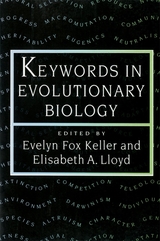 Keywords in Evolutionary Biology
Evelyn Fox Keller
Harvard University Press In science, more than elsewhere, a word is expected to mean what it says, nothing more, nothing less. But scientific discourse is neither different nor separable from ordinary language—meanings are multiple, ambiguities ubiquitous. Keywords in Evolutionary Biology grapples with this problem in a field especially prone to the confusion engendered by semantic imprecision.
Written by historians, philosophers, and biologists—including, among others, Stephen Jay Gould, Diane Paul, John Beatty, Robert Richards, Richard Lewontin, David Sloan Wilson, Peter Bowler, and Richard Dawkins—these essays identify and explicate those terms in evolutionary biology which, though commonly used, are plagues by multiple concurrent and historically varying meanings. By clarifying these terms in their many guises, the editors Evelyn Fox Keller and Elisabeth Lloyd hope to focus attention on major scholarly problems in the field—problems sometimes obscured, sometimes reveals, and sometimes even created by the use of such equivocal words. “Competition,” “adaptation,” and “fitness,” for instance, are among the terms whose multiple meaning have led to more than merely semantic debates in evolutionary biology.
Exploring the complexity of keywords and clarifying their role in prominent issues in the field, this book will prove invaluable to scientists and philosophers trying to come to terms with evolutionary theory; it will also serve as a useful guide to future research into the way in which scientific language works.
Keywords in Sound
David Novak and Matt Sakakeeny, eds.
Duke University Press, 2015 In twenty essays on subjects such as noise, acoustics, music, and silence, Keywords in Sound presents a definitive resource for sound studies, and a compelling argument for why studying sound matters. Each contributor details their keyword's intellectual history, outlines its role in cultural, social and political discourses, and suggests possibilities for further research. Keywords in Sound charts the philosophical debates and core problems in defining, classifying and conceptualizing sound, and sets new challenges for the development of sound studies.
Contributors. Andrew Eisenberg, Veit Erlmann, Patrick Feaster, Steven Feld, Daniel Fisher, Stefan Helmreich, Charles Hirschkind, Deborah Kapchan, Mara Mills, John Mowitt, David Novak, Ana Maria Ochoa Gautier, Thomas Porcello, Tom Rice, Tara Rodgers, Matt Sakakeeny, David Samuels, Mark M. Smith, Benjamin Steege, Jonathan Sterne, Amanda Weidman
Keywords in Technical and Professional Communication
Han Yu
University Press of Colorado, 2024 Keywords in Technical and Professional Communication explores the multiple and sometimes conflicting uses of terms central to the discipline of technical and professional communication (TPC). Each keyword was selected through a multi-stage process that involved corpus analysis of journal publications and surveys of technical communication scholars, educators, and practitioners. Written by experts who have published extensively on the concepts underlying each keyword, each essay provides a history and/or a summary of the changing contemporary and disciplinary contexts in which the keyword has been used, discusses the debates surrounding the term, considers the critical lenses shaping our understanding of it, and discusses how the term could be used in the future and/or whether it needs to be rethought in our current environment.
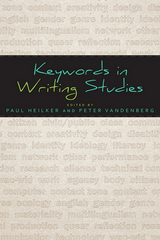 Keywords in Writing Studies
Paul Heilker
Utah State University Press, 2015 Keywords in Writing Studies is an exploration of the principal ideas and ideals of an emerging academic field as they are constituted by its specialized vocabulary. A sequel to the 1996 work Keywords in Composition Studies, this new volume traces the evolution of the field’s lexicon, taking into account the wide variety of theoretical, educational, professional, and institutional developments that have redefined it over the past two decades.
Contributors address the development, transformation, and interconnections among thirty-six of the most critical terms that make up writing studies. Looking beyond basic definitions or explanations, they explore the multiple layers of meaning within the terms that writing scholars currently use, exchange, and question. Each term featured is a part of the general disciplinary parlance, and each is a highly contested focal point of significant debates about matters of power, identity, and values. Each essay begins with the assumption that its central term is important precisely because its meaning is open and multiplex.
Keywords in Writing Studies reveals how the key concepts in the field are used and even challenged, rather than advocating particular usages and the particular vision of the field that they imply. The volume will be of great interest to both graduate students and established scholars.
Keywords of Identity, Race, and Human Mobility in Early Modern England
Nandini Das
Amsterdam University Press, 2021 What did it mean to be a stranger in sixteenth- and seventeenth-century England? How were other nations, cultures, and religions perceived? What happened when individuals moved between languages, countries, religions, and spaces? Keywords of Identity, Race, and Human Mobility analyses a selection of terms that were central to the conceptualisation of identity, race, migration, and transculturality in the early modern period. In many cases, the concepts and debates that they embody – or sometimes subsume – came to play crucial roles in the articulation of identity, rights, and power in subsequent periods. Together, the essays in this volume provide an invaluable resource for anyone interested in the development of these formative issues.
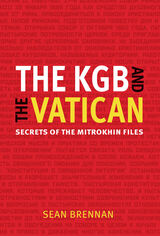 The KGB and the Vatican: Secrets of the Mitrokhin Files
Sean Brennan
Catholic University of America Press, 2022 One of the greatest ironies of the history of Soviet rule is that, for an officially atheistic state, those in the political police and in the Politburo devoted an enormous amount of time and attention to the question of religion. The Soviet government’s policies toward religious institutions in the USSR, and toward religious institutions in the non-Communist world, reflected this, especially when it came to the Vatican and Catholic Churches, both the Latin and Byzantine Rite, in Soviet territory. The KGB and the Vatican consists of the transcripts of KGB records concerning the policies of the Soviet secret police towards the Vatican and the Catholic Church in the Communist world, transcripts provided by KGB archivist and defector Vasili Mitrokhin, from the Second Vatican Council to the election of John Paul II. Among the topics covered include how the Soviet regime viewed the efforts of John XXIII and Paul VI of reaching out to eastern side of the Iron Curtain, the experience of the Roman Catholic Church in Lithuanian Soviet Socialist Republic and the underground Greek Catholic Church in the Ukrainian Soviet Socialist Republic, the religious underground in the key cities of Leningrad and Moscow, and finally the election of John Paul II and its effect on the tumultuous events in Poland in the late 1970s and early 1980s.
This valuable primary source collection also contains a historical introduction written by the translator, Sean Brennan, a professor of History at the University of Scranton.
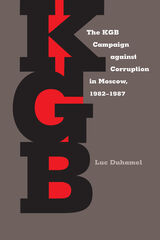 The KGB Campaign against Corruption in Moscow, 1982–1987
Luc Duhamel
University of Pittsburgh Press, 2010 The 1980s brought a whirlwind of change to Communist Party politics and the Soviet Republic. By mid-decade, Gorbachev’s policies of perestroika and glasnost had opened the door to democratic reform. Later, mounting public unrest over the failed economy and calls for independence among many republics ended with the dissolution of the Soviet Union in 1991. Often overlooked in these events, yet monumental to breaking the Communist Party’s institutional stranglehold, were the KGB anti-corruption campaigns of 1982–1987.
Inthis original study,Luc Duhamel examines the KGB at its pinnacle of power. The appointment of former KGB director Yuri Andropov as general secretary of the Communist Party in 1982 marked the height of KGB influence. For the first time since Stalin, Beria, and the NKVD, there was now an unquestioned authority to pursue violators of Soviet law, including members of the Communist Party. Duhamel focuses on the KGB’s investigation into Moscow’s two largest trade organizations: the Chief Administration of Trade and the Administration of the Moscow Fruit and Vegetable Office. Like many of their Soviet counterparts, these state-controlled institutions were built on a foundation of bribery and favoritism among Communist Party members, workers, and their bosses. This book analyzes the multifarious networks of influence peddling, appointments, and clientelism that pervaded these trade organizations and maintained their ties to party officials.
Through firsthand research into the archives of the Andropov-era KGB and the prosecutor general’s office, Duhamel uncovers the indictment of thousands of trade organization employees, the reprimand of Communist Party members, and the radical change in political ideology manifested by these proceedings. He further reveals that despite aggressive prosecutions, the KGB’s power would soon wither, as the agency came under intense scrutiny because of its violent methods and the ghosts of the NKVD. The reinstatement of Moscow city government control over the trade organizations, the death of Andropov, and the rising tide of democratic reform would effectively end the reign of the KGB and its anticorruption campaigns.
Khabaar: An Immigrant Journey of Food, Memory, and Family
Madhushree Ghosh
University of Iowa Press, 2022 Independent Publishers Book Awards (IPPY Awards) gold medalist
Khabaar is a food memoir and personal narrative that braids the global journeys of South Asian food through immigration, migration, and indenture. Focusing on chefs, home cooks, and food stall owners, the book questions what it means to belong and what does belonging in a new place look like in the foods carried over from the old country? These questions are integral to the author’s own immigrant journey to America as a daughter of Indian refugees (from what’s now Bangladesh to India during the 1947 Partition of India); as a woman of color in science; as a woman who left an abusive marriage; and as a woman who keeps her parents’ memory alive through her Bengali food.
Khaki and Blue: Military and Police in British Colonial Africa
Anthony Clayton
Ohio University Press, 1989 Drawing upon a survey of former police officers in the six British colonies of Ghana, Nigeria, Kenya, Uganda, Zambia, and Malawi, Clayton and Killingray examine the work of colonial law enforcement during the last years of British supremacy. In addition to such basic institutional information as the development of police forces from local militia, the training of African recruits, and the africanization of the police forces, the authors examine the typical activities of the colonial police. From investigations of stabbings and theft, to deportation of prostitutes and concern with smuggling, to enforcement of unpopular policies, the authors offer a profile not only of the institution of colonial law enforcement but also of the daily life of the village and the business activities which brought people into contact with the police.
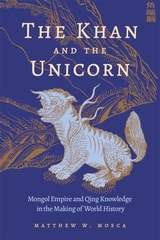 The Khan and the Unicorn: Mongol Empire and Qing Knowledge in the Making of World History
Matthew W. Mosca
Harvard University Press The Mongol Empire changed the world, but early chronicles of its conquests, written from regional perspectives and widely dispersed, could not convey its far-reaching significance. The Khan and the Unicorn details how historians from different cultures collectively rediscovered their common past and transformed the scattered records of Chinggis Khan’s conquests into world history. Between the seventeenth and nineteenth centuries, as new empires competed for control of Eurasian lands once ruled by the Mongols, historians encountered a wealth of unfamiliar materials previously unknown to them. Aided by methodological innovations, they created more coherent and multifaceted accounts of Mongol power. Drawing on sources in Chinese, Manchu, Mongolian, and European languages, Matthew Mosca tracks this process of rediscovery from the vantage of Beijing. The Qing court led the transformation by assigning multilingual staff to integrate historical information into pioneering studies. Mosca reconstructs the emergence of a knowledge circuit linking Beijing to other scholarly centers, notably Paris, St. Petersburg, and Tokyo. As conflicting appraisals of the Mongol Empire came into contact, debates flared over how to interpret the collision of nomadic and sedentary societies, often cast as a clash between civilization and barbarism. Whether valorized or villainized, Mongol imperial power came to be recognized as a driving force in world history.
Khanty, People of the Taiga: Surviving the 20th Century
Andrew Wiget and Olga Balalaeva
University of Alaska Press, 2011 Drawing on nearly twenty years of fieldwork, as well as ethnohistory, politics, and economics, this volume takes a close look at changes in the lives of the indigenous Siberian Khanty people and draws crucial connections between those changes and the social, cultural, and political transformation that swept Russia during the transition to democracy. Delving deeply into the history of the Khanty—who were almost completely isolated prior to the Russian revolution—the authors show how the customs, traditions, and knowledge of indigenous people interact with and are threatened by events in the larger world.
 The Khmer Lands of Vietnam: Environment, Cosmology, and Sovereignty
Philip Taylor
University of Hawaii Press, 2014 The indigenous people of Southern Vietnam, known as the Khmer Krom, occupy territory over which Vietnam and Cambodia have competing claims. Regarded with ambivalence and suspicion by nationalists in both countries, these in-between people have their own claims on the place where they live and a unique perspective on history and sovereignty in their heavily contested homelands. To cope with wars, environmental re-engineering and nation-building, the Khmer Krom have selectively engaged with the outside world in addition to drawing upon local resources and self-help networks.
This groundbreaking book reveals the sophisticated ecological repertoire deployed by the Khmer Krom to deal with a complex river delta, and charts their diverse adaptations to a changing environment. In addition, it provides an ethnographically grounded exposition of Khmer mythic thought that shows how the Khmer Krom position themselves within a landscape imbued with life-sustaining potential, magical sovereign power and cosmological significance. Offering a new environmental history of the Mekong River delta, this book is the first to explore Southern Vietnam through the eyes of its indigenous Khmer residents.
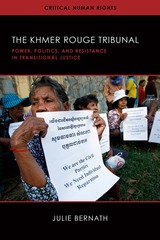 The Khmer Rouge Tribunal: Power, Politics, and Resistance in Transitional Justice
Julie Bernath
University of Wisconsin Press, 2023 From 1975 to 1979, while Cambodia was ruled by the brutal Communist Party of Kampuchea (Khmer Rouge) regime, torture, starvation, rape, and forced labor contributed to the death of at least a fifth of the country’s population. Despite the severity of these abuses, civil war and international interference prevented investigation until 2004, when protracted negotiations between the Cambodian government and the United Nations resulted in the establishment of the Extraordinary Chambers in the Courts of Cambodia (ECCC), or Khmer Rouge tribunal. The resulting trials have been well scrutinized, with many scholars seeking to weigh the results of the tribunal against the extent of the offenses.
Here, Julie Bernath takes a different tack, deliberately decentering the trials in an effort to understand the ECCC in its particular context—and, by extension, the degree to which notions of transitional justice generally must be understood in particular social, cultural, and political contexts. She focuses on “sites of resistance” to the ECCC, including not only members of the elite political class but also citizens who do not, for a variety of tangled reasons, participate in the tribunal—and even resistance from victims of the regime and participants in the trials. Bernath demonstrates that the ECCC both shapes and is shaped by long-term contestation over Cambodia’s social, economic, and political transformations, and thereby argues that transitional justice must be understood locally rather than as a homogenous good that can be implanted by international actors.
 The Khwan Niamut: Or, Nawab'S Domestic Cookery
David E. Schoonover
University of Iowa Press, 1992
This appealing little cookbook, published in Calcutta in 1839 with the weighty subtitle “Being a Selection of the Best Approved Recipes, of the Most Flavoured and Savoury Dishes, from the Kitchen of Nawab Qasim Uli Khan, Buhadur Qâum Jung, from the original Persian,” gave colonial Europeans a way to enjoy royal feasts in their own homes.The Khwan Niamut is an entertaining way for today's adventurous cooks to explore Asian dishes in their own homes.
Translated as “Table of Riches,” The Khwan Niamut offers a collection of tempting recipes from the lavish household of Qasim Uli Khan which did indeed allow transplanted colonials to dine like shahs. All the refinements of Persian cookery—from hearty pilaus and curries and kababs to delicate almond comfits and such mandatory accessories as mango and lemon pickles—are served up in the pages of this facsimile edition.
The Khwan Niamut also includes many traditional ways of preserving meats, eggs, fruits, juices, and dairy products, growing mushrooms—“If the water wherein mushrooms have been steeped or washed be poured upon an old bed…there will speedily arise great numbers”—perfuming linen with rose leaves, cloves and mace, and preparing “a fine strong tincture of coffee.” A lengthy appendix caters to British taste buds, allowing homesick colonials to prepare less exotic but more familiar dishes such as mutton hash, veal broth, eel pie, lemon custard, and ginger beer.
To satisfy today's tastes and methods, David Schoonover has updated many festive Persian dishes as a major part of this introduction, which places this cookbook in the context of culinary history. More experienced cooks will enjoy the full range of recipes inThe Khwan Niamutusing the tables that translate such measures as chuttacks, mashas, and seers into modern equivalents. Everyone seeking to broaden their culinary repertoire will delight in the recipes and history of The Khwan Niamut.
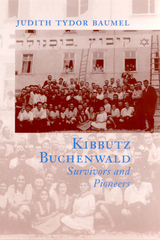 Kibbutz Buchenwald: Survivors and Pioneers
Judith Tydor Baumel
Rutgers University Press, 1997 Kibbutz Buchenwald is the story of a nightmare that became a dream and a dream that became a reality. Emerging from the depths of the liberated concentration camp Buchenwald in the spring of 1945, a group of sixteen gaunt and battered young men organized and formed Kibbutz Buchenwald, the first agricultural collective in postwar Germany designed to prepare Jews for emigation to Palestine. What caused a handful of survivors to take their fate into their own hands within days of their liberation, at a time when most survivors were passively awaiting orders from the occupying forces? From what wellsprings did they draw the physical and emotional strength to begin life anew as Zionist pioneers in a world which had turned upside down? Judith Baumel's moving account of this courageous group is divided into two parts. Part One, entitled "The Dream," examines the kibbutz from its creation in Germany until the departure of the founding group for Palestine in the summer of 1945. Part Two, "The Reality," follows the members of Kibbutz Buchenwald into Palestine, where they eventually established their own independent settlement in 1948. This settlement exists as Kibbutz Netzer Sereni today. Drawing from the diaries of the kibbutz's founding members, Baumel provides a detailed account of an incredible story and places the central narrative in the larger contexts of communal living, European politics after the war, and the link between European Jewry and Israeli postwar nationhood. An afterword, "Where Are They Now," briefly describes the later life of each of the original kibbutz members.
 Kibler's Medical Terms for Interpreters: English to Japanese
Jeanette Kibler and Karl T. Rew
Michigan Publishing, 2018 Interpreters know that having the right word at the right time is essential. For health care interpreters, quickly finding specialty-specific words can be challenging. Kibler’s Medical Terms for Interpreters is a practical resource that will save you time.
通訳者は状況に合わせて的確な言葉を発することが非常に重要であることを承知しています。 医療通訳者にとって専門分野に特有の言葉を素早く探すことが困難な場合もあるでしょう。 「キブラーの通訳者向け医学用語集」は目的の擁護へ素早くたどりつくための実際に役立つ資料です。
• Speeds up your word-finding. Unlike a typical dictionary, Kibler’s Medical Terms for Interpreters is organized in sections by medical specialty, so you can quickly locate the specific words that will be useful for a patient encounter.
• Makes medical words easily accessible, from common terms to highly technical jargon.
• Reduces the need to search a dictionary for individual words while interpreting.
• Has proved to be a valuable resource for both beginning and veteran interpreters.
• Is easily used while interpreting or when preparing prior to an appointment.
• 用語の検索が速くなります。典型的な辞書とは異なり「キブラーの通訳者向け医学用語集」は専門分野ごとに分類されており、患者さんの診察時に特定の単語を素早く見つけることができます。
• 一般的な言葉から高度な専門用語まで様々な医療用語を簡単に利用することができます。
• 通訳中に特定の言葉を辞書で調べる手間が省けます。
• 初級の通訳者にも、ベテランの通訳者にも価値のある参考資料であることが実証されています。
• 通訳の途中でも事前の予習時でも簡単に使うことができます。
 Kibler's Medical Terms for Interpreters: Japanese to English
Jeanette Kibler and Karl T. Rew
Michigan Publishing, 2018 Interpreters know that having the right word at the right time is essential. For health care interpreters, quickly finding specialty-specific words can be challenging. Kibler’s Medical Terms for Interpreters is a practical resource that will save you time.
通訳者は状況に合わせて的確な言葉を発することが非常に重要であることを承知しています。 医療通訳者にとって専門分野に特有の言葉を素早く探すことが困難な場合もあるでしょう。 「キブラーの通訳者向け医学用語集」は目的の擁護へ素早くたどりつくための実際に役立つ資料です。
• Speeds up your word-finding. Unlike a typical dictionary, Kibler’s Medical Terms for Interpreters is organized in sections by medical specialty, so you can quickly locate the specific words that will be useful for a patient encounter.
• Makes medical words easily accessible, from common terms to highly technical jargon.
• Reduces the need to search a dictionary for individual words while interpreting.
• Has proved to be a valuable resource for both beginning and veteran interpreters.
• Is easily used while interpreting or when preparing prior to an appointment.
• 用語の検索が速くなります。典型的な辞書とは異なり「キブラーの通訳者向け医学用語集」は専門分野ごとに分類されており、患者さんの診察時に特定の単語を素早く見つけることができます。
• 一般的な言葉から高度な専門用語まで様々な医療用語を簡単に利用することができます。
• 通訳中に特定の言葉を辞書で調べる手間が省けます。
• 初級の通訳者にも、ベテランの通訳者にも価値のある参考資料であることが実証されています。
• 通訳の途中でも事前の予習時でも簡単に使うことができます。
Kicking
Jules Boykoff
Duke University Press, 2026 As a poet, public-facing scholar of sports politics, and former professional soccer player, having represented the United States on the men’s U23 national soccer team, Jules Boykoff draws on his lifetime of athletic experience to reflect on the practice of kicking. With short vignettes blending the personal, the reflective, the historical, and the analytical, Kicking is uniquely positioned to reflect on the most popular sport in the world. From the act of kicking a soccer ball, Boykoff looks outward to his own family history, including his mother’s struggle with polio, which fed her insistence on his athleticism; to broader trends like greenwashing and sportwashing; and to reflections on sport’s toxic masculinity, the poetics of on-field revenge, and the power-politics of both the men’s and women’s World Cups. Kicking is a must-read for all those who love the beautiful game.
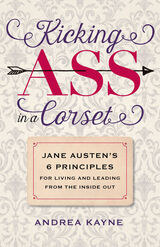 Kicking Ass in a Corset: Jane Austen’s 6 Principles for Living and Leading from the Inside Out
Andrea Kayne
University of Iowa Press, 2021 What can organizational leaders in business, education, government, and most any enterprise learn from an unemployed, unmarried woman who lived in patriarchal, misogynistic rural England more than 200 years ago? As it turns out, a great deal. In identifying the core virtues of Austen’s heroines—confidence, pragmatism, diligence, integrity, playfulness, and humility—Andrea Kayne uncovers the six principles of internally referenced leadership that, taken together, instruct women how to tap into a deep well-spring of personal agency and an internal locus of control no matter what is going on around them. Utilizing practical exercises, real-life case studies, and literary and leadership scholarship, Kicking Ass in a Corset maps out effective leadership that teaches readers how to tune out the external noise and listen to themselves so that they can truly live and lead from the inside out.
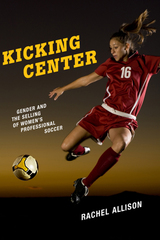 Kicking Center: Gender and the Selling of Women's Professional Soccer
Allison, Rachel
Rutgers University Press, 2018 Winner of the 2018 Early Career Gender Scholar Award from the Sociologists for Women in Society-South
Girls and young women participate in soccer at record levels and the Women’s National Team regularly draws media, corporate, and popular attention. Yet despite increased representation and visibility, gender disparities in opportunity, compensation, training resources, and media airtime persist in soccer, and two professional leagues for women have failed since 2000.
In Kicking Center, Rachel Allison investigates a women’s soccer league seeking to break into the male-dominated center of U.S. professional sport. Through an examination of the challenges and opportunities identified by those working for and with this league, she demonstrates how gender inequality is both constructed and contested in professional sport. Allison details the complex constructions of race, class, gender, and sexuality in the selling and marketing of women’s soccer in a half-changed sports landscape characterized by both progress and backlash, and where professional sports are still understood to be men’s territory.
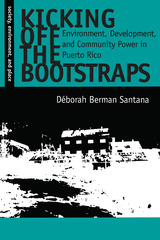 Kicking Off the Bootstraps: Environment, Development, and Community Power in Puerto Rico
Déborah Berman Santana
University of Arizona Press, 1996 While small communities in Third World countries usually seem at the mercy of central governments and foreign capitalists, local activists can help exploited peoples correct environmental abuses and social injustices and seize control of their own destinies.
Kicking Off the Bootstraps is a powerful case history of such an effort. It describes a grassroots activist movement that emerged in the Puerto Rican community of Salinas to counter the poverty and economic dependence experienced by its citizens in the wake of "Operation Bootstrap," a post-World War II industrial development program. Déborah Berman Santana examines the efforts of the community to develop its own economic strategy based primarily on environmentally and socially responsible uses of local natural and human resources.
Berman Santana shows how local activists are seeking to empower the Salinas community to make decisions concerning economic development. She evaluates present-day efforts to develop positive alternatives, examining the motivations of the activists, the nature of their projects, their efforts to mobilize the community, their dealings with government and other organizations, and the obstacles they face. In a closing chapter, she addresses the potential roles of community leaders, outside activists, local businesses, and government in actualizing these alternatives.
A testimony to one community's efforts to determine its own future, Kicking Off the Bootstraps deals with real issues such as control over productive resources, quality of life, and environmental health. It also extends an examination of community-directed activism to an exploration of policy implications for sustainable development. While this concept is often too vague to be applied to real strategies, the Salinas experience provides a clear idea of what sustainable development can—and should—mean in actual practice.
 Kid Cops: What Communities Gain and Lose from Junior Police in Schools
Mai Thai
University of Chicago Press, 2026 An on-the-ground study of junior police academies—contentious school-police partnerships that provide educational resources, career opportunities, and hope for social mobility.
Some might see police officers as benevolent sources of protection, but in many communities, they are often perceived as a threat due to a legacy of violent interactions and arrests for arbitrary offenses. How, then, do police sustain their presence in places where people might distrust them? In Kid Cops, sociologist Mai Thai offers one answer: junior police academies, high school programs in which police officers provide courses, mentorship, and job training to students in communities with high rates of juvenile delinquency and poverty. These school-police partnerships have expanded rapidly in the United States over the last few decades, largely in response to political unrest and police violence in the 1990s. Programs vary in their offerings, but they generally aim to ease tensions between communities and law enforcement, while also providing needed resources in neighborhoods where education and job opportunities are scarce.
Kid Cops draws on years of observations and interviews with educators, police officers, and, of course, kids. The junior police programs at each high school may have different emphases, but their common goal is for students to graduate from high school and enter college or the workforce. A second goal of the program is to cultivate a positive image of the police. Ultimately, however, Thai finds that these programs tighten the relationship between marginalized youth, schools, and the criminal justice system and strain the students’ relationships with their peers, families, and each other. These programs also distract residents from systemic issues of policing and suppress opportunities for meaningful change.
Written in an accessible tone that balances the seriousness of inequality with the playfulness of the study’s youth, Kid Cops moves beyond the narrative of detentions, suspensions, and arrests to tell a less conventional story about police in schools. It asks, does good, friendly policing exist—especially if it continues to tether low-income communities of color to the criminal justice system?
Kid on the Sandlot: Congress and Professional Sports, 1910–1992
Stephen R. Lowe
University of Wisconsin Press, 1995 As the role and influence of professional sports has increased in American life, so has the relationship between the U.S. Congress and the professional sports world. Since WW II, Congress has held dozens of investigations and debated hundreds of bills on subjects such as organized baseball’s antitrust exemption, the NFL’s television blackout policy, the role of organized crime in professional boxing, the league mergers in professional football and basketball, and franchise relocations.
Lowe provides concise, interpretive narrative of Congress’s involvement in professional sports. Testimony is included from such colorful figures as Jackie Robinson, Casey Stengel, Pete Rozelle, Muhammad Ali, Sonny Liston, and Don King. Leading congressmen and senators are also included.
Kid-Friendly Parenting with Deaf and Hard of Hearing Children
Daria Medwid
Gallaudet University Press, 1995 For the parents of thousands of deaf and hard of hearing children, this step-by-step guide offers hundreds of ideas and methods that work with children ages 3 to 12. It provides scores of play activities to help parents enhance communication, solve problems, and strengthen relationships in skillful, fun ways. Also, parenting techniques are concisely presented to help parents set limits while avoiding power struggles and help foster positive behavior changes. In addition, this manual provides information about special resources and support services.
At each chapter’s beginning, experts (some deaf, some hearing), including I. King Jordan, Jack Gannon, Merv Garretson, and others, offer their insights on the subject discussed. Designed for parents with various styles, Kid-Friendly Parenting is a complete, step-by-step guide and reference to raising a deaf or hard of hearing child.
Kidnapped: Child Abduction in America
Paula S. Fass
Harvard University Press Few crimes capture our imagination as completely as child kidnapping. Paula S. Fass explores how our awareness of violence toward the young has evolved from a time when Americans were shocked to discover that their children could be held for ransom, until today, when sexual predators seem to threaten our children at every turn. In a series of riveting narratives, Kidnapped shows how child abduction reflects cultural issues--parenting and the American family, the media and our fascination with celebrity, gender and sexuality, mental health, and much more. By tracing the most infamous kidnapping cases of the past 125 years, Fass peers into the American mind, providing new insights into a society that both values and exploits its youngest members.
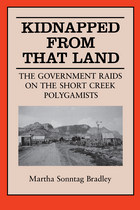 Kidnapped From That Land: The Government Raids on the Short Creek Polygamist
Martha S Bradley
University of Utah Press, 1993 In the early morning hours of July 26, 1953, several hundred Arizona state officials and police officers moved into the polygamist community of Short Creek, Arizona, to serve warrants on thirty-six men and eighty-six women. Officials staging the raid believed they were rescuing the community’s 263 children from a life of bondage and immorality. Kidnapped from that Land is the first book to bring together the story of the 1953 raid and two previous raids in 1935 and 1944. Martha Bradley tells the story with insight and compassion for the families that were fragmented by the arrests. She also deals with the complex legal issues that persist in both Arizona and Utah, where the practice of polygamy is a felony that is no longer prosecuted. Kidnapped from that Land will appeal to those interested in the study of Mormon history, of polygamy, and of western regional and American social history.
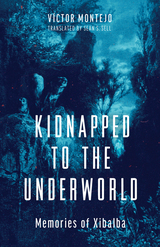 Kidnapped to the Underworld: Memories of Xibalba
Víctor Montejo; Translated by Sean S. Sell
University of Arizona Press, 2024 Víctor Montejo’s story recounts the near-death experience of his grandfather, Antonyo Mekel Lawuxh (Antonio Esteban), who fell gravely ill in Guatemala in the late 1920s but survived to tell his family and community what he had witnessed of the afterlife.
Narrated from Antonio’s perspective, the reader follows along on a journey to the Maya underworld of Xibalba, accompanied by two spirit guides. Antonio traverses Xibalba’s levels of heaven and hell, encountering instructive scenes of punishment and reward: in one chapter, conquistadors are perpetually submerged in a pool of their victims’ blood; in another, the souls of animal abusers are forever unable to cross a crocodile-infested river. Infused with memory, the author illustrates Guatemala’s unique religious syncretism, exploring conceptions of heaven and hell shared between Catholicism and Indigenous Maya spirituality. In the tradition of both the Popol Vuh and the Divine Comedy, Montejo’s narrative challenges easy categorization—this is a work of family history, religious testimony, political allegory, and sacred literature.
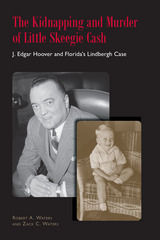 The Kidnapping and Murder of Little Skeegie Cash: J. Edgar Hoover and Florida's Lindbergh Case
Robert Alvin Waters
University of Alabama Press, 2014 Informed by thousands of pages of newly released FBI files, The Kidnapping and Murder of Little Skeegie Cash tells the gripping story of the only crime investigated by J. Edgar Hoover himself, the sensational 1938 murder of a five-year-old boy from the Florida Everglades.
In his long and storied career, J. Edgar Hoover investigated only one case personally, the 1938 kidnapping and murder of five-year-old Floridian James “Skeegie” Cash. What prompted the director himself to fly from Washington, DC, to a rain-drenched hamlet on the edge of the Everglades? Congress had slashed FBI funding, forcing Hoover to lay off half his agents. The combative Hoover believed if he could bring Skeegie’s killer to justice, the halo of positive publicity would revive the fortunes of the embattled FBI.
In The Kidnapping and Murder of Little Skeegie Cash, Robert A. Waters and Zack C. Waters bring to life the drama of the abduction, the payment of a $10,000 ransom, the heartbreaking manhunt for Skeegie and his kidnapper, the arrest and confession of Franklin Pierce McCall, and the killer’s trial and execution. Hordes of reporters swarmed into the little village south of Miami, and for thirteen days until McCall confessed, the case dominated national headlines. The authors capture the drama and the detail as well as the desperate and sometimes extralegal lengths to which Hoover went to crack the case.
Using the Freedom of Information Act, the authors obtained more than four thousand pages of FBI files and court documents to reconstruct this important but forgotten case. The tragedy that played out in the swamps of Dade County constituted the backdrop for a political struggle that would involve J. Edgar Hoover, the United States Congress, and even president Franklin Delano Roosevelt. Hoover and the president prevailed, and within two years the FBI grew from 680 employees to more than 14,000. No books and few articles have been published about this historic case.
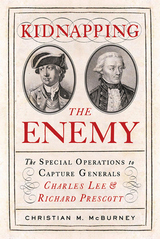 Kidnapping the Enemy: The Special Operations to Capture Generals Charles Lee and Richard Prescott
Christian M. McBurney
Westholme Publishing, 2024 The Daring Raid to Kidnap a British General in Order to Gain Freedom for the Highest Ranking Continental Officer Captured During the American Revolution On the night of December 12, 1776, while on a reconnaissance mission in New Jersey, Lieutenant Colonel William Harcourt and Cornet Banastre Tarleton of the British dragoons learned from Loyalist informers that Major General Charles Lee, the second-in-command in the Continental army behind only George Washington, was staying at a tavern at nearby Basking Ridge. Gaining valuable information as they rode, by threatening captured American soldiers with death if Lee’s whereabouts was not revealed, Harcourt and Tarleton, surrounded the tavern, and after a short but violent struggle, captured him. The dragoons returned through a hostile country by a different route, arriving safely at their British post at New Brunswick with their quarry in hand. With Lee’s capture, the British were confident the rebellion would soon be over. Stung by Lee’s kidnapping, the Americans decided to respond with their own special operation, perhaps the most outstanding one of the war. On the dark night of July 10, 1777, Lieutenant Colonel William Barton led a handpicked party in whaleboats across Narragansett Bay—carefully avoiding British navy ships—to Newport, Rhode Island. Although the town was occupied by more than 3,000 enemy soldiers, after landing Barton led his men up a hidden path and stealthily hurried to a farmhouse where General Richard Prescott had taken to spending nights. Surrounding the house, they forced open the doors and seized the sleeping Prescott, as well as his aidede- camp and a sentry, and then quickly returned to their waiting boats. Despite British artillerymen firing rockets and cannon to alert the British vessels in the bay, the bold band of Americans reached the mainland safely. Not only had Barton kidnapped a British major general who could be exchanged for Lee, he had removed from action a man who had gained a reputation for his harsh treatment of American Patriots. In Kidnapping the Enemy: The Special Operations to Capture Generals Charles Lee and Richard Prescott, Christian M. McBurney relates the full story of each of these remarkable raids, the subsequent exchange of the two generals, and the impact of these kidnappings on the Revolutionary War. He then follows the subsequent careers of the major players, including Lee, Barton, Prescott, and Tarleton. The author completes his narrative with descriptions of other attempts to kidnap high-ranking military officers and government officials during the war, including ones organized by and against George Washington. The low success rate of these operations makes the raids that captured Lee and Prescott even more impressive.
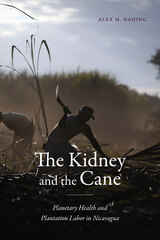 The Kidney and the Cane: Planetary Health and Plantation Labor in Nicaragua
Alex M. Nading
Duke University Press, 2025 The recent unprecedented growth of Nicaragua’s sugarcane industry has brought promises of more jobs, better health care, and cleaner energy. But these promises have been overshadowed by an epidemic of chronic kidney disease of nontraditional causes (CKDnt). Unknown before the late 1990s, this disease has sickened and killed thousands of sugarcane plantation workers. Scientific studies link the disease to rises in mean average annual temperatures, chronic water scarcity, and the overuse of toxic agrochemicals. CKDnt is now understood as a consequence of global climate change. In The Kidney and the Cane, Alex M. Nading situates this epidemic within a deeper history of sugarcane plantation violence, arguing that CKDnt is not a result of climate change: it is climate change. Outlining a place-based approach to planetary health, Nading follows activists, scientists, and residents in the sugarcane zone wrestling with the consequences of plantation life. Along the way, he raises critical questions about the capacity of corporations and states to care for people and ecosystems; the ability of citizens and experts to regulate toxic substances; and the future of work on a warming planet.
Kidney for Sale by Owner: Human Organs, Transplantation, and the Market
Mark J. Cherry
Georgetown University Press, 2005 If most Americans accept the notion that the market is the most efficient means to distribute resources, why should body parts be excluded? Each year thousands of people die waiting for organ transplants. Many of these deaths could have been prevented were it not for the almost universal moral hand-wringing over the concept of selling human organs. Kidney for Sale by Owner, now with a new preface, boldly deconstructs the roadblocks that are standing in the way of restoring health to thousands of people. Author and bioethicist Mark Cherry reasserts the case that health care could be improved and lives saved by introducing a regulated transplant organs market rather than by well-meant, but misguided, prohibitions.
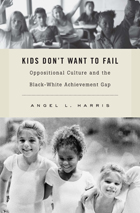 Kids Don't Want to Fail: Oppositional Culture and the Black-White Achievement Gap
Angel L. Harris
Harvard University Press, 2011 Understanding the causes of the racial achievement gap in American education—and then addressing it with effective programs—is one of the most urgent problems communities and educators face.
For many years, the most popular explanation for the achievement gap has been the “oppositional culture theory”: the idea that black students underperform in secondary schools because of a group culture that devalues learning and sees academic effort as “acting white.” Despite lack of evidence for this belief, classroom teachers accept it, with predictable self-fulfilling results. In a careful quantitative assessment of the oppositional culture hypothesis, Angel L. Harris tested its empirical implications systematically and broadened his analysis to include data from British schools. From every conceivable angle of examination, the oppositional culture theory fell flat.
Despite achieving less in school, black students value schooling more than their white counterparts do. Black kids perform badly in high school not because they don’t want to succeed but because they enter without the necessary skills. Harris finds that the achievement gap starts to open up in preadolescence—when cumulating socioeconomic and health disadvantages inhibit skills development and when students start to feel the impact of lowered teacher expectations.
Kids Don’t Want to Fail is must reading for teachers, academics, policy makers, and anyone interested in understanding the intersection of race and education.
 Kids Have All the Write Stuff: Revised and Updated for a Digital Age
Robert W. Maloy
University of Massachusetts Press, 2019 You can open up a world of imagination and learning for children when you encourage the expression of ideas through writing. Kids Have All the Write Stuff: Revised and Updated for a Digital Age shows you how to support children's development as confident writers and communicators, offering hundreds of creative ways to integrate writing into the lives of toddlers, preschoolers, and elementary school students—whether at home or at school.
You'll discover:
· how to implement writing as a part of daily life with family and friends;
· processes and invitations fit for young writers;
· strategies for connecting writing to math and coding;
· writing materials and technologies; and
· creative and practical writing ideas, from fiction, nonfiction, and videos to blogs and emails.
In order to connect writing to today's digital revolution, veteran educators Sharon A. Edwards, Robert W. Maloy, and Torrey Trust reveal how digital tools can inspire children to write, and a helpful companion website brings together a range of resources and technologies. This essential book offers enjoyment and inspiration to young writers!
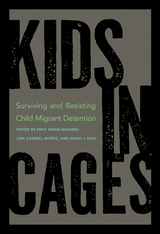 Kids in Cages: Surviving and Resisting Child Migrant Detention
Edited by Emily Ruehs-Navarro, Lina Caswell Muñoz, and Sarah J. Diaz
University of Arizona Press, 2024 In recent years, the plight of immigrant children has been in the national spotlight. A primary issue of concern is the experience of child migrants in detention by the U.S. government.
The authors in this volume approach the topic of child migrant detention from a range of perspectives. Some authors, particularly those who provide a legal perspective, chronicle the harms of detention, arguing that despite governmental assurances of child protection, detention is fundamentally a state-sanctioned form of violence. The social scientists in the volume have worked closely with detained youth themselves; in these chapters, authors highlight the ways in which youth survive detention, often through everyday acts of resistance and through the formation of temporary relationships. Practitioners including psychologists, activists, and faith leaders look at forms of resistance to detention. From retheorizing psychological interventions for detained youth to forming hospitality homes that act as alternatives to detention, these practitioners highlight ways forward for advocates of youth. At the heart of these narratives lies a crucial debate: the tension between harm-reduction strategies and abolition.
This interdisciplinary work brings together voices from the legal realm, the academic world, and the on-the-ground experiences of activists and practitioners. Contributors
Stella Akello
Jessica Alaniz
Aireen Grace Andal
Samuel Arroyo
Corey Brost
Lina Caswell Muñoz
Marisa Chumil
Patricia Crowley
Iman Dadras
Sarah J. Diaz
Sandra Espinoza
Jacqueline Florian
Michael Gosch
Darlene Gramigna
Lisa Jacobs
Katherine Kaufka Walts
Corinne Kentor
Jenn M. Lilly
Kathlyn Mulcahy
Jennifer Nagda
Vida Opoku
Silvia Rodriguez Vega
Emily Ruehs-Navarro
Herlin Soto-Matute
Luis Edward Tenorio
Jajah Wu
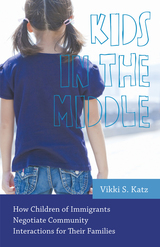 Kids in the Middle: How Children of Immigrants Negotiate Community Interactions for Their Families
Katz, Vikki S
Rutgers University Press, 2014 Complicating the common view that immigrant incorporation is a top-down process, determined largely by parents, Vikki Katz explores how children actively broker connections that enable their families to become woven into the fabric of American life. Children’s immersion in the U.S. school system and contact with mainstream popular culture enables them more quickly to become fluent in English and familiar with the conventions of everyday life in the United States. These skills become an important factor in how families interact with their local environments. Kids in the Middle explores children’s contributions to the family strategies that improve communication between their parents and U.S. schools, healthcare facilities, and social services, from the perspectives of children, parents, and the English-speaking service providers that interact with these families via children’s assistance. Katz also considers how children’s brokering affects their developmental trajectories. While their help is critical to addressing short-term family needs, children’s responsibilities can constrain their access to educational resources and have consequences for their long-term goals. Kids in the Middle explores the complicated interweaving of family responsibility and individual attainment in these immigrant families.
Through a unique interdisciplinary approach that combines elements of sociology and communication approaches, Katz investigates not only how immigrant children connect their families with local institutional networks, but also how they engage different media forms to bridge gaps between their homes and mainstream American culture. Drawing from extensive firsthand research, Katz takes us inside an urban community in Southern California and the experiences of a specific community of Latino immigrant families there. In addition to documenting the often-overlooked contributions that children of immigrants make to their families’ community encounters, the book provides a critical set of recommendations for how service providers and local institutions might better assist these children in fulfilling their family responsibilities. The story told in Kids in the Middle reveals an essential part of the immigrant experience that transcends both geographic and ethnic boundaries.
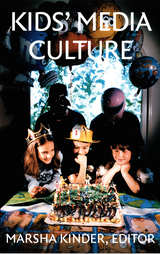 Kids' Media Culture
Marsha Kinder, ed.
Duke University Press, 1999 Television shows, comic strips, video games, and other forms of media directed at children are the subject of frequent and rancorous debate. In Kids’ Media Culture some of the most prominent cultural theorists of children’s media join forces with exciting new voices in the field to consider the production and consumption of media aimed at children. What’s good for kids and what’s merely exploitive? Are shows that attempt to level the socioeconomic playing field by educating children effective? The essays in this anthology tackle these questions and pose provocative new questions of their own.
As part of their argument that children’s reactions to mass media are far more complex and dynamic than previously thought, contributors examine the rise of mass media in postwar America. They explore how books, cartoons, and television shows of the 1950s and 1960s—such as Lassie and Dennis the Menace—helped redefine American identity and export an image of a particularly American optimism and innocence worldwide. Other essays take up the controversies surrounding such shows as Sesame Street, My So-Called Life, and Mighty Morphin Power Rangers. After discussing the differences in how children and adults react to such programs, the collection focuses on television in schools and the ways that mass media convey messages about gender and socialization.
Kids’ Media Culture makes clear that children are active, engaged participants in the media culture surrounding them. This volume will be compelling reading for those interested in television and cultural studies as well as anyone interested in children’s education and welfare.
Contributors. Heather Gilmour, Sean Griffin, Heather Hendershot, Henry Jenkins, Yasmin B. Kafai, Jyotsna Kapur, Marsha Kinder, Susan Murray, Elissa Rashkin, Ellen Seiter, Lynn Spigel, Karen Orr Vered
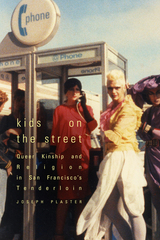 Kids on the Street: Queer Kinship and Religion in San Francisco's Tenderloin
Joseph Plaster
Duke University Press, 2023 In Kids on the Street Joseph Plaster explores the informal support networks that enabled abandoned and runaway queer youth to survive in tenderloin districts across the United States. Tracing the history of the downtown lodging house districts where marginally housed youth regularly lived beginning in the late 1800s, Plaster focuses on San Francisco’s Tenderloin from the 1950s to the present. He draws on archival, ethnographic, oral history, and public humanities research to outline the queer kinship networks, religious practices, performative storytelling, and migratory patterns that allowed these kids to foster social support and mutual aid. He shows how they collectively and creatively managed the social trauma they experienced, in part by building relationships with johns, bartenders, hotel managers, bouncers, and other vice district denizens. By highlighting a politics where the marginal position of street kids is the basis for a moral economy of reciprocity, Plaster excavates a history of queer life that has been overshadowed by major narratives of gay progress and pride.
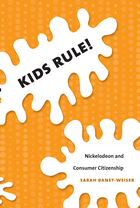 Kids Rule!: Nickelodeon and Consumer Citizenship
Sarah Banet-Weiser
Duke University Press, 2007 In Kids Rule! Sarah Banet-Weiser examines the cable network Nickelodeon in order to rethink the relationship between children, media, citizenship, and consumerism. Nickelodeon is arguably the most commercially successful cable network ever. Broadcasting original programs such as Dora the Explorer, SpongeBob SquarePants, and Rugrats (and producing related movies, Web sites, and merchandise), Nickelodeon has worked aggressively to claim and maintain its position as the preeminent creator and distributor of television programs for America’s young children, tweens, and teens. Banet-Weiser argues that a key to its success is its construction of children as citizens within a commercial context. The network’s self-conscious engagement with kids—its creation of a “Nickelodeon Nation” offering choices and empowerment within a world structured by rigid adult rules—combines an appeal to kids’ formidable purchasing power with assertions of their political and cultural power. Banet-Weiser draws on interviews with nearly fifty children as well as with network professionals; coverage of Nickelodeon in both trade and mass media publications; and analysis of the network’s programs. She provides an overview of the media industry within which Nickelodeon emerged in the early 1980s as well as a detailed investigation of its brand-development strategies. She also explores Nickelodeon’s commitment to “girl power,” its ambivalent stance on multiculturalism and diversity, and its oft-remarked appeal to adult viewers. Banet-Weiser does not condemn commercial culture nor dismiss the opportunities for community and belonging it can facilitate. Rather she contends that in the contemporary media environment, the discourses of political citizenship and commercial citizenship so thoroughly inform one another that they must be analyzed in tandem. Together they play a fundamental role in structuring children’s interactions with television.
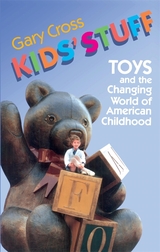 Kids' Stuff: Toys and the Changing World of American Childhood
Gary Cross
Harvard University Press, 1999 To sort out who's who and what's what in the enchanting, vexing world of Barbies® and Ninja Turtles®, Tinkertoys® and teddy bears, is to begin to see what's become of childhood in America. It is this changing world, and what it unveils about our values, that Gary Cross explores in Kids' Stuff, a revealing look into the meaning of American toys through this century.
Early in the 1900s toys reflected parents' ideas about children and their futures. Erector sets introduced boys to a realm of business and technology, while baby dolls anticipated motherhood and building blocks honed the fine motor skills of the youngest children. Kids' Stuff chronicles the transformation that occurred as the interests and intentions of parents, children, and the toy industry gradually diverged--starting in the 1930s when toymakers, marketing playthings inspired by popular favorites like Shirley Temple and Buck Rogers, began to appeal directly to the young. TV advertising, blockbuster films like Star Wars®, and Saturday morning cartoons exploited their youthful audience in new and audacious ways. Meanwhile, powerful social and economic forces were transforming the nature of play in American society. Cross offers a richly textured account of a culture in which erector sets and baby dolls are no longer alone in preparing children for the future, and in which the toys that now crowd the racks are as perplexing for parents as they are beguiling for little boys and girls. Whether we want our children to be high achievers in a competitive world or playful and free from the worries of adult life, the toy store confronts us with many choices.
What does the endless array of action figures and fashion dolls mean? Are children--or parents--the dupes of the film, television, and toy industries, with their latest fads and fantasies? What does this say about our time, and what does it bode for our future? Tapping a vein of rich cultural history, Kids' Stuff exposes the serious business behind a century of playthings.
 Kierkegaard And The Ends Of Language
Geoffrey A. Hale
University of Minnesota Press, 2002 A timely and original intervention in our understanding of this major philosopher through the lens of his influence on others What do we read when we read Kierkegaard? How do we know? Insisting that Kierkegaard remains a far more enigmatic and paradoxical writer than is often assumed, Geoffrey A. Hale argues that the best way to approach Kierkegaard’s work and understand its significance for our own thought is to retrace its formative influence on major intellectuals of the early twentieth century. In mutually reflective readings of Kierkegaard’s foundational texts through the work of three pivotal authors—Franz Kafka, Theodor Adorno, and Rainer Maria Rilke—Hale shows how each of these writers draws attention to the unwavering sense of human finitude that pervades all of Kierkegaard’s work and, with it, the profoundly unsettling indeterminacy in which it results. It is the very limitations of language, Hale argues, that hold it open to meaning, to interpretation, and thus to freedom. Resisting clear circumscription in this way, Kierkegaard’s work becomes all the more fruitful to us—and all the more challenging—to the extent that it resists our understanding.
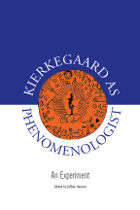 Kierkegaard as Phenomenologist: An Experiment
Jeffrey Hanson
Northwestern University Press, 2010 Kierkegaard has undoubtedly been an influence on phenomenological thinking, but he has rarely if ever been read as a phenomenologist himself. Recent developments in phenomenology have expanded our conception of the discipline itself and the varieties of experience it can address. Is it possible that Kierkegaard, a canonical figure by any measure, can be reappraised in light of these developments? Or more radically, is it possible that the frontiers of phenomenological investigation were already broached by Kierkegaard even before phenomenology was formally defined by Husserl?
In Kierkegaard as Phenomenologist: An Experiment, Jeffrey Hanson embarks on a project to locate Kierkegaard within the current phenomenological discussion. This work is an experiment inasmuch as the plausibility of the undertaking itself will be determined only by the outcome. Some of the contributors clearly regard it as possible to read Kierkegaard as a phenomenologist. Others plainly do not and will contest the very hypothesis that forms the basis of this experiment.
As with any experiment, the larger discussion will determine its success, but Kierkegaard as Phenomenologist lays the groundwork for two exciting possibilities: first, that Kierkegaard scholarship will be renewed, and second, that the meaning of phenomenology itself will be reconsidered.
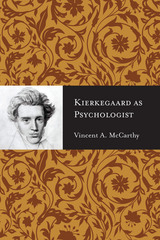 Kierkegaard as Psychologist
Vincent A. McCarthy
Northwestern University Press, 2015 Kierkegaard’s psychological thought has always been acknowledged as very rich—Reinhold Niebuhr hailed him as the greatest psychologist of the soul since Augustine—and has had a major influence on Heidegger, Sartre, and existential psychoanalysis. Nevertheless, his accomplishment has not always been fully appreciated, in part because it is so scattered across his works. As Vincent McCarthy demonstrates in Kierkegaard as Psychologist, Kierkegaard was pursuing “psychology” before there was a formally recognized academic field bearing that name, and a coherent thread runs through the so-called pseudonymous works. McCarthy elucidates often-difficult texts, highlights the rich psychological dimension of Kierkegaard’s thought, and provides an introduction for the nonspecialist and a commentary on Kierkegaard’s psychology that will interest both specialists and nonspecialists, while engaging in rich comparisons with such figures as Freud and Heidegger.
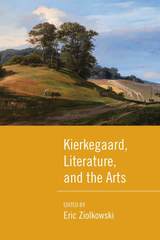 Kierkegaard, Literature, and the Arts
Edited by Eric Ziolkowski
Northwestern University Press, 2018 In this volume fifteen eminent scholars illuminate the broad and often underappreciated variety of the nineteenth‑century Danish thinker Søren Kierkegaard’s engagements with literature and the arts.
The essays in Kierkegaard, Literature, and the Arts, contextualized with an insightful introduction by Eric Ziolkowski, explore Kierkegaard’s relationship to literature (poetry, prose, and storytelling), the performing arts (theater, music, opera, and dance), and the visual arts, including film. The collection is rounded out with a comparative section that considers Kierkegaard in juxtaposition with a romantic poet (William Blake), a modern composer (Arnold Schoenberg), and a contemporary singer‑songwriter (Bob Dylan). Kierkegaard was as much an aesthetic thinker as a philosopher, and his philosophical writings are complemented by his literary and music criticism.
Kierkegaard, Literature, and the Arts will offer much of interest to scholars concerned with Kierkegaard as well as teachers, performers, and readers in the various aesthetic fields discussed.
CONTRIBUTORS: Christopher B. Barnett, Martijn Boven, Anne Margrete Fiskvik, Joakim Garff, Ronald M. Green, Peder Jothen, Ragni Linnet, Jamie A. Lorentzen, Edward F. Mooney, George Pattison, Nils Holger Petersen, Howard Pickett, Marcia C. Robinson, James Rovira
 Kikkoman: Company, Clan, and Community
W. Mark Fruin
Harvard University Press, 1983 Kikkoman is the oldest and one of the most profitable among Japan's industrial giants, and its three hundred-year history is a lesson in successful adaptation to the complex, competitive international business arena. Mark Fruin places Kikkoman—producers of the best known and most widely used soy sauce products in the world—in the social and economic context of modern Japan.
The Kikkoman Corporation, the Mogi–Takanishi families that control it, and the city of Noda are three inseparable entities—company, clan, and community. Using a variety of sources along with the voluminous Kikkoman archives, Fruin reveals the institutional, social, and ideological bonds that affected the growth of all three. Kikkoman's metamorphosis from a traditional small family business into a modern corporation introduced new mass-production technologies, new legal and financial forms, new management methods, and the recruitment of a much larger labor force. How Kikkoman grew and prospered not only helps to explain the “miracle” of Japanese recovery after World War II, but also why this small underdeveloped nation became a dynamic industrial power in less than a century.
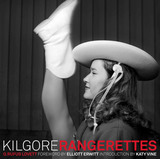 Kilgore Rangerettes
By O. Rufus Lovett
University of Texas Press, 2008 Whether she knows it or not, every girl who has ever dreamed of taking her place in a line of high-kicking dancers on a football field at halftime has been inspired by the Kilgore College Rangerettes, the world's first precision dance drill team. Founded in Kilgore, Texas, in 1939-1940 by the incomparable Gussie Nell Davis, the Rangerettes have performed for national and international audiences, appearing frequently at events such as the Macy's Thanksgiving Day Parade and major football bowl games across the nation, including the New Year's Cotton Bowl Classic in Dallas each year since 1951. An icon of Americana, the red-white-and-blue clad Rangerettes have drawn the attention of numerous photographers and writers seeking to understand the enduring appeal of a group that some might view as anachronistic. O. Rufus Lovett, a fine art photographer who has taught at Kilgore College for more than thirty years, began photographing the 'Rettes in 1989. His interpretive photo essay in this book expresses his fascination with "the glamour of the Rangerettes' performances juxtaposed with the small-town atmosphere, football turf, metal bleachers, chain-link fences, and asphalt and concrete environment." In Lovett's masterfully composed photographs, the Rangerette performances captivate with their multiplicity of "shapes, patterns, and designs." While Lovett treats the 'Rettes as an artistic subject, he also captures the esprit de corps that keeps the girls smiling even when they have to march on icy pavement and prompts their mothers to wear T-shirts that proudly proclaim "Rette Mom." An affectionate, yet unsentimental and occasionally irreverent portrait, Kilgore Rangerettes beautifully conveys the timeless quality of this unique subculture of young American womanhood.
Kill class
Nomi Stone
Tupelo Press, 2019 Kill Class is based on Nomi Stone’s two years of fieldwork in mock Middle Eastern villages at military bases across the United States. The speaker in these poems, an anthropologist, both witnesses and participates in combat training exercises staged at “Pineland,” a simulated country in the woods of the American South, where actors of Middle Eastern origin are hired to theatricalize war, repetitively pretending to bargain and mourn and die. Kill Class is an arresting ethnography of American military culture, one that allows readers to circle at length through the cloverleaf interchanges where warfare nestles into even the most mundane corners of everyday life.
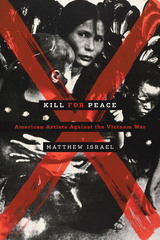 Kill for Peace: American Artists Against the Vietnam War
By Matthew Israel
University of Texas Press, 2013 The Vietnam War (1964–1975) divided American society like no other war of the twentieth century, and some of the most memorable American art and art-related activism of the last fifty years protested U.S. involvement. At a time when Pop Art, Minimalism, and Conceptual Art dominated the American art world, individual artists and art collectives played a significant role in antiwar protest and inspired subsequent generations of artists. This significant story of engagement, which has never been covered in a book-length survey before, is the subject of Kill for Peace. Writing for both general and academic audiences, Matthew Israel recounts the major moments in the Vietnam War and the antiwar movement and describes artists’ individual and collective responses to them. He discusses major artists such as Leon Golub, Edward Kienholz, Martha Rosler, Peter Saul, Nancy Spero, and Robert Morris; artists’ groups including the Art Workers’ Coalition (AWC) and the Artists Protest Committee (APC); and iconic works of collective protest art such as AWC’s Q. And Babies? A. And Babies and APC’s The Artists Tower of Protest. Israel also formulates a typology of antiwar engagement, identifying and naming artists’ approaches to protest. These approaches range from extra-aesthetic actions—advertisements, strikes, walk-outs, and petitions without a visual aspect—to advance memorials, which were war memorials purposefully created before the war’s end that criticized both the war and the form and content of traditional war memorials.
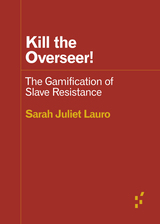 Kill the Overseer!: The Gamification of Slave Resistance
Sarah Juliet Lauro
University of Minnesota Press, 2020 Explores the representation of slave revolt in video games—and the trouble with making history playable
Kill the Overseer! profiles and problematizes digital games that depict Atlantic slavery and “gamify” slave resistance. In videogames emphasizing plantation labor, the player may choose to commit small acts of resistance like tool-breaking or working slowly. Others dramatically stage the slave’s choice to flee enslavement and journey northward, and some depict outright violent revolt against the master and his apparatus. In this work, Sarah Juliet Lauro questions whether the reduction of a historical enslaved person to a digital commodity in games such as Mission US, Assassin’s Creed, and Freedom Cry ought to trouble us as a further commodification of slavery’s victims, or whether these interactive experiences offer an empowering commemoration of the history of slave resistance.
Forerunners is a thought-in-process series of breakthrough digital works. Written between fresh ideas and finished books, Forerunners draws on scholarly work initiated in notable blogs, social media, conference plenaries, journal articles, and the synergy of academic exchange. This is gray literature publishing: where intense thinking, change, and speculation take place in scholarship.
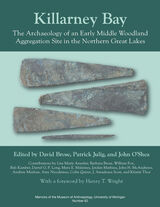 Killarney Bay: The Archaeology of an Early Middle Woodland Aggregation Site in the Northern Great Lakes
David Brose, Patrick Julig, and John O’Shea
University of Michigan Press, 2021 The archaeological site at Killarney Bay, on the northeast side of Georgian Bay in Ontario, Canada, has attracted and mystified archaeologists for decades. The quantities of copper artifacts, exotic cherts, and long-distance trade goods all highlight the importance of the site during its time of occupation. Yet researchers have struggled to date the site or assign it to a particular cultural tradition, since the artifacts and mortuary components do not precisely match those of other sites and assemblages in the Upper Great Lakes. The history of archaeological investigation at Killarney Bay stretches across parts of three centuries and involves field schools from universities in two countries (Laurentian University in Canada and the University of Michigan in the United States). This volume pulls together the results from all prior research at the site and represents the first comprehensive report ever published on the excavations and finds at Killarney Bay. Heavily illustrated.
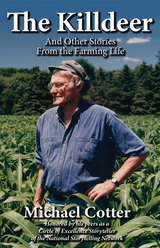 The Killdeer: And Other Stories From the Farming Life
Michael Cotter
Parkhurst Brothers, Inc., 2014 “Even after dark, if you are quiet and attentive, you can hear a Killdeer far off. Sandbars, mud flats and grazed fields are where you find them. They are commonplace. So much so, that you might miss them if not for the unique sound they make as they fly overhead, or dart back and forth on the ground, as if wondering which way to go next. So it is with Michael Cotter’s stories. They are like a comfortable pair of slippers. Not flashy at all, but each time you put them on and walk in them, you are so glad you did. They appear so ordinary, but the way they wrap around your soul surprises you. And like slippers you thought you’d never buy, Michael’s stories surprise you. Even though they are not flashy, energetic or dramatic in ways we have come to expect in this digital age, they are grounded in universal truths, with timeless characters. They provide us with a sense of memory, wisdom and peace that celebrates the human spirit, and revels in the common man, woman, boy and girl that is in us all. When Michael tells his stories, it’s as if time stands still. We are reminded of who we really are….down deep….after the television is turned off, the radio is silenced, and we have put our egos on the shelf to rest a spell.”
--Rex Ellis, Director of Museum programs, Smithsonian Institution, Washington, D.C.
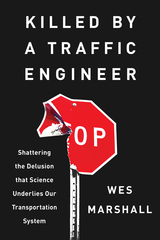 Killed by a Traffic Engineer: Shattering the Delusion that Science Underlies our Transportation System
Wes Marshall
Island Press, 2024 In the US we are nearing four million road deaths since we began counting them in 1899. The numbers are getting worse in recent years, yet we continue to accept these deaths as part of doing business. There has been no examination of why we engineer roads that are literally killing us.
Fixing the carnage on our roadways requires a change in mindset and a dramatic transformation of transportation. This goes for traffic engineers in particular because they are still the ones in charge of our streets.
In Killed by a Traffic Engineer, civil engineering professor Wes Marshall shines a spotlight on how little science there is behind the way that our streets are engineered, which leaves safety as an afterthought. While traffic engineers are not trying to cause deliberate harm to anyone, he explains, they are guilty of creating a transportation system whose designs remain largely based on plausible, but unproven, conjecture.
Thoroughly researched and compellingly written, Killed by a Traffic Engineer shows how traffic engineering “research” is outdated and unexamined (at its best) and often steered by an industry and culture considering only how to get from point A to B the fastest way possible, to the detriment of safety, quality of life, equality, and planetary health. Marshall examines our need for speed and how traffic engineers disconnected it from safety, the focus on capacity and how it influences design, blaming human error, relying on faulty data, how liability drives reporting, measuring road safety outcomes, and the education (and reeducation) of traffic engineers.
Killed by a Traffic Engineer is ultimately hopeful about what is possible once we shift our thinking and demand streets engineered for the safety of people, both outside and inside of cars. It will make you look at your city and streets—and traffic engineers— in a new light and inspire you to take action.
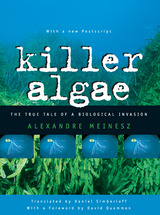 Killer Algae
Alexandre Meinesz
University of Chicago Press, 1999 Two decades ago, a Stuttgart zoo imported a lush, bright green seaweed for its aquarium. Caulerpa taxifolia was captively bred by the zoo and exposed, for years, to chemicals and ultraviolet light. Eventually a sample of it found its way to the Oceanographic Museum in Monaco, then headed by Jacques Cousteau. Fifteen years ago, while cleaning its tanks, that museum dumped the pretty green plant into the Mediterranean.
This supposedly benign little plant—that no one thought could survive the waters of the Mediterranean—has now become a pernicious force. Caulerpa taxifolia now covers 10,000 acres of the coasts of France, Spain, Italy, and Croatia, and has devastated the Mediterranean ecosystem. And it continues to grow, unstoppable and toxic. When Alexandre Meinesz, a professor of biology at the University of Nice, discovered a square-yard patch of it in 1984, he warned biologists and oceanographers of the potential species invasion. His calls went unheeded. At that point, one person could have pulled the small patch out and ended the problem. Now, however, the plant has defeated the French Navy, thwarted scientific efforts to halt its rampage, and continues its destructive journey into the Adriatic Sea.
Killer Algae is the biological and political horror story of this invasion. For despite Meinesz's pleas to scientists and the French government, no agency was willing to take responsibility for the seaweed, and while the buck was passed, the killer algae grew. And through it all, the Oceanographic Museum in Monaco sought to exculpate itself. In short, Killer Algae—part detective story and part bureaucratic object lesson—is a classic case of a devastating ecological invasion and how not to deal with it.
"[U]tterly fascinating, not only because of the ecological battles [Meinesz] describes but also because of the wondrous natural phenomena involved."—Richard Bernstein, New York Times
"Akin to Rachel Carson's Silent Spring, Killer Algae shows the courage of a voice in the wilderness."—Choice
"A textbook case of how not to manage an environmental disaster."—Kirkus Reviews
"Meinesz's story is a frightening one, reading more like a science fiction thriller than a scientific account."—Publishers Weekly
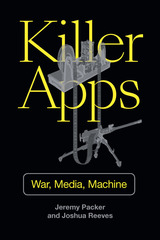 Killer Apps: War, Media, Machine
Jeremy Packer and Joshua Reeves
Duke University Press, 2020 In Killer Apps Jeremy Packer and Joshua Reeves provide a detailed account of the rise of automation in warfare, showing how media systems are central to building weapons systems with artificial intelligence in order to more efficiently select and eliminate military targets. Drawing on the insights of a wide range of political and media theorists, Packer and Reeves develop a new theory for understanding how the intersection of media and military strategy drives today's AI arms race. They address the use of media to search for enemies in their analyses of the history of automated radar systems, the search for extraterrestrial life, and the development of military climate science, which treats the changing earth as an enemy. As the authors demonstrate, contemporary military strategy demands perfect communication in an evolving battlespace that is increasingly inhospitable to human frailties, necessitating humans' replacement by advanced robotics, machine intelligence, and media systems.
 Killer Bodies: The Rise and Fall of "Bad Girl" Comics
Joseph Crawford
Rutgers University Press, 2026 Killer Bodies offers a history of the single most critically derided subgenre in American superhero comics: the “bad girl” comics of the 1990s, which chronicled the blood-soaked adventures of barely dressed and improbably proportioned action heroines for an audience of adolescent boys. While not in any way attempting to rehabilitate the genre, which for the most part amply deserved its reputation as sexist and borderline pornographic, this book situates it within its original cultural context, as the result of a matrix of influences that included third-wave feminism, neopaganism, “girl power,” the rise of the internet, the growing popularity of manga, supermodel beauty ideals, and the mainstreaming of pornography. It explores why and how the figure of the antiheroic, physically aggressive, sexually objectified heroine arose within American comics culture, and the commercial and ideological factors that led to the genre’s rapid rise and equally rapid decline amidst the crisis-racked comics industry of the mid-1990s.
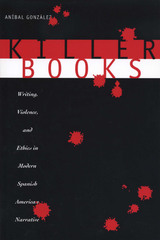 Killer Books: Writing, Violence, and Ethics in Modern Spanish American Narrative
By Aníbal González
University of Texas Press, 2002 Writing and violence have been inextricably linked in Spanish America from the Conquest onward. Spanish authorities used written edicts, laws, permits, regulations, logbooks, and account books to control indigenous peoples whose cultures were predominantly oral, giving rise to a mingled awe and mistrust of the power of the written word that persists in Spanish American culture to the present day. In this masterful study, Aníbal González traces and describes how Spanish American writers have reflected ethically in their works about writing's relation to violence and about their own relation to writing. Using an approach that owes much to the recent "turn to ethics" in deconstruction and to the works of Jacques Derrida and Emmanuel Levinas, he examines selected short stories and novels by major Spanish American authors from the late nineteenth through the twentieth centuries: Manuel Gutiérrez Nájera, Manuel Zeno Gandía, Teresa de la Parra, Jorge Luis Borges, Alejo Carpentier, Gabriel García Márquez, and Julio Cortázar. He shows how these authors frequently display an attitude he calls "graphophobia," an intense awareness of the potential dangers of the written word.
Killer Crónicas: Bilingual Memories
Susana Chavez-Silverman
University of Wisconsin Press, 2004 A woman living and communicating in multiple lands, Susana Chávez-Silverman conveys her cultural and linguistic displacement in humorous, bittersweet, and even tangible ways in this truly bilingual literary work. These meditative and lyrical pieces combine poignant personal confession, detailed daily observation, and a memorializing drive that shifts across time and among geocultural spaces. The author’s inventive and flamboyant use of Spanglish, a hybrid English-Spanish idiom, and her adaptation of the confessional "crónica" make this memoir compelling and powerful. Killer Crónicas confirms that there is no Latina voice quite like that of Susana Chávez-Silverman.
Includes a chapter that was awarded first prize in El Andar magazine’s Chicano Literary Excellence Contest in the category of personal memoir.
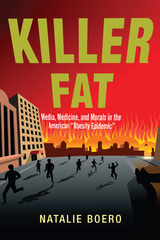 Killer Fat: Media, Medicine, and Morals in the American "Obesity Epidemic”
Boero, Natalie
Rutgers University Press, 2013 In the past decade, obesity has emerged as a major public health concern in the United States and abroad. At the federal, state, and local level, policy makers have begun drafting a range of policies to fight a war against fat, including body-mass index (BMI) report cards, “snack taxes,” and laws to control how fast food companies market to children. As an epidemic, obesity threatens to weaken the health, economy, and might of the most powerful nation in the world. In Killer Fat, Natalie Boero examines how and why obesity emerged as a major public health concern and national obsession in recent years. Using primary sources and in-depth interviews, Boero enters the world of bariatric surgeries, Weight Watchers, and Overeaters Anonymous to show how common expectations of what bodies are supposed to look like help to determine what sorts of interventions and policies are considered urgent in containing this new kind of disease. Boero argues that obesity, like the traditional epidemics of biological contagion and mass death, now incites panic, a doomsday scenario that must be confronted in a struggle for social stability. The “war” on obesity, she concludes, is a form of social control. Killer Fat ultimately offers an alternate framing of the nation’s obesity problem based on the insights of the “Health at Every Size” movement.
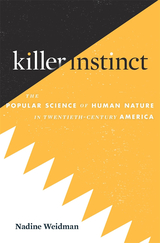 Killer Instinct: The Popular Science of Human Nature in Twentieth-Century America
Nadine Weidman
Harvard University Press, 2021 A historian of science examines key public debates about the fundamental nature of humans to ask why a polarized discourse about nature versus nurture became so entrenched in the popular sciences of animal and human behavior.
Are humans innately aggressive or innately cooperative? In the 1960s, bestselling books enthralled American readers with the startling claim that humans possessed an instinct for violence inherited from primate ancestors. Critics responded that humans were inherently loving and altruistic. The resulting debate—fiercely contested and highly public—left a lasting impression on the popular science discourse surrounding what it means to be human.
Killer Instinct traces how Konrad Lorenz, Robert Ardrey, and their followers drew on the sciences of animal behavior and paleoanthropology to argue that the aggression instinct drove human evolutionary progress. Their message, spread throughout popular media, brought pointed ripostes. Led by the anthropologist Ashley Montagu, opponents presented a rival vision of human nature, equally based in biological evidence, that humans possessed inborn drives toward love and cooperation. Over the course of the debate, however, each side accused the other of holding an extremist position: that behavior was either determined entirely by genes or shaped solely by environment. Nadine Weidman shows that what started as a dispute over the innate tendencies of animals and humans transformed into an opposition between nature and nurture.
This polarized formulation proved powerful. When E. O. Wilson introduced his sociobiology in 1975, he tried to rise above the oppositional terms of the aggression debate. But the controversy over Wilson’s work—led by critics like the feminist biologist Ruth Hubbard—was ultimately absorbed back into the nature-versus-nurture formulation. Killer Instinct explores what happens and what gets lost when polemics dominate discussions of the science of human nature.
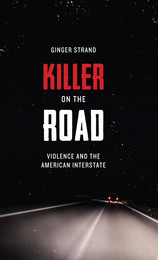 Killer on the Road: Violence and the American Interstate
By Ginger Strand
University of Texas Press, 2012 Starting in the 1950s, Americans eagerly built the planet’s largest public work: the 42,795-mile National System of Interstate and Defense Highways. Before the concrete was dry on the new roads, however, a specter began haunting them—the highway killer. He went by many names: the “Hitcher,” the “Freeway Killer,” the “Killer on the Road,” the “I-5 Strangler,” and the “Beltway Sniper.” Some of these criminals were imagined, but many were real. The nation’s murder rate shot up as its expressways were built. America became more violent and more mobile at the same time. Killer on the Road tells the entwined stories of America’s highways and its highway killers. There’s the hot-rodding juvenile delinquent who led the National Guard on a multistate manhunt; the wannabe highway patrolman who murdered hitchhiking coeds; the record promoter who preyed on “ghetto kids” in a city reshaped by freeways; the nondescript married man who stalked the interstates seeking women with car trouble; and the trucker who delivered death with his cargo. Thudding away behind these grisly crime sprees is the story of the interstates—how they were sold, how they were built, how they reshaped the nation, and how we came to equate them with violence. Through the stories of highway killers, we see how the “killer on the road,” like the train robber, the gangster, and the mobster, entered the cast of American outlaws, and how the freeway—conceived as a road to utopia—came to be feared as a highway to hell.
 Killer Show: The Station Nightclub Fire, America’s Deadliest Rock Concert
John Barylick
University Press of New England, 2015 On February 20, 2003, the deadliest rock concert in U.S. history took place at a roadhouse called The Station in West Warwick, Rhode Island. That night, in the few minutes it takes to play a hard-rock standard, the fate of many of the unsuspecting nightclub patrons was determined with awful certainty. The blaze was ignited when pyrotechnics set off by Great White, a 1980s heavy-metal band, lit flammable polyurethane “egg crate” foam sound insulation on the club’s walls. In less than 10 minutes, 96 people were dead and 200 more were injured, many catastrophically. The final death toll topped out, three months later, at the eerily unlikely round number of 100. The story of the fire, its causes, and its legal and human aftermath is one of lives put at risk by petty economic decisions—by a band, club owners, promoters, building inspectors, and product manufacturers. Any one of those decisions, made differently, might have averted the tragedy. Together, however, they reached a fatal critical mass. Killer Show is the first comprehensive exploration of the chain of events leading up to the fire, the conflagration itself, and the painstaking search for evidence to hold the guilty to account and obtain justice for the victims. Anyone who has entered an entertainment venue and wondered, “Could I get out of here in a hurry?” will identify with concertgoers at The Station. Fans of disaster nonfiction and forensic thrillers will find ample elements of both genres in Killer Show.
 The Killing Age: How Violence Made the Modern World
Clifton Crais
University of Chicago Press, 2025 A bracing account of how our current planetary crisis emerged from the worst cataclysmic destruction in human history, which Clifton Crais terms the Mortecene—the killing age.
We are used to speaking of the Anthropocene and the outsized impact humans have had on the planet. But we sometimes lose sight of a fundamental truth at the heart of modern world history: the legacy of human predation, slavery, and imperialism that has devastated the natural world and led us to our present moment. As historian Clifton Crais shows in this magisterial work, the period that we most associate with human progress—which gave us the Enlightenment, the rise of democracies, the Industrial Revolution, and more—was at the same time catastrophically destructive.
In this bracing, landmark book, Crais urges us to view the growth of global capitalism between 1750 and the early 1900s not as the Anthropocene, but as the Mortecene: the Killing Age. Killing brought the world together and tore it apart, as profiteering warlords committed mass-scale slaughter of humans and animals across Africa, Asia, and the Americas. The newfound ease and profitability of killing created a disturbing network of global connections and economies, eliminating tens of millions of people and sparking an environmental crisis that remains the most urgent catastrophe facing the world today.
Drawing on years of scholarship and marshaling myriad sources across world history, The Killing Age turns our vision of past and present on its head, illuminating the Mortecene in all its horror—how it shaped who we are, what we value and fear, and the precarious present we inhabit today.
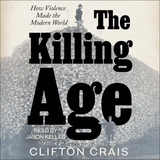 The Killing Age: How Violence Made the Modern World
Clifton Crais
University of Chicago Press, 2025 This is an audiobook version of this book.
A bracing account of how our current planetary crisis emerged from the worst cataclysmic destruction in human history, which Clifton Crais terms the Mortecene—the killing age.
We are used to speaking of the Anthropocene and the outsized impact humans have had on the planet. But we sometimes lose sight of a fundamental truth at the heart of modern world history: the legacy of human predation, slavery, and imperialism that has devastated the natural world and led us to our present moment. As historian Clifton Crais shows in this magisterial work, the period that we most associate with human progress—which gave us the Enlightenment, the rise of democracies, the Industrial Revolution, and more—was at the same time catastrophically destructive.
In this bracing, landmark book, Crais urges us to view the growth of global capitalism between 1750 and the early 1900s not as the Anthropocene, but as the Mortecene: the Killing Age. Killing brought the world together and tore it apart, as profiteering warlords committed mass-scale slaughter of humans and animals across Africa, Asia, and the Americas. The newfound ease and profitability of killing created a disturbing network of global connections and economies, eliminating tens of millions of people and sparking an environmental crisis that remains the most urgent catastrophe facing the world today.
Drawing on years of scholarship and marshaling myriad sources across world history, The Killing Age turns our vision of past and present on its head, illuminating the Mortecene in all its horror—how it shaped who we are, what we value and fear, and the precarious present we inhabit today.
Killing Animals
The Animal Studies Group
University of Illinois Press, 2000
 Killing for Coal: America’s Deadliest Labor War
Thomas G. Andrews
Harvard University Press, 2002 On a spring morning in 1914, in the stark foothills of southern Colorado, members of the United Mine Workers of America clashed with guards employed by the Rockefeller family, and a state militia beholden to Colorado’s industrial barons. When the dust settled, nineteen men, women, and children among the miners’ families lay dead. The strikers had killed at least thirty men, destroyed six mines, and laid waste to two company towns.
Killing for Coal offers a bold and original perspective on the 1914 Ludlow Massacre and the “Great Coalfield War.” In a sweeping story of transformation that begins in the coal beds and culminates with the deadliest strike in American history, Thomas Andrews illuminates the causes and consequences of the militancy that erupted in colliers’ strikes over the course of nearly half a century. He reveals a complex world shaped by the connected forces of land, labor, corporate industrialization, and workers’ resistance.
Brilliantly conceived and written, this book takes the organic world as its starting point. The resulting elucidation of the coalfield wars goes far beyond traditional labor history. Considering issues of social and environmental justice in the context of an economy dependent on fossil fuel, Andrews makes a powerful case for rethinking the relationships that unite and divide workers, consumers, capitalists, and the natural world.
 Killing Happiness
Friedrich Ani
Seagull Books, 2021 German author Friedrich Ani combines deep sorrow, human darkness, and breath-taking tension in his latest crime novel.
Happiness is extinguished completely one cold November night when eleven-year-old Lennard Grabbe fails to return home. Thirty-four days later, he is found to have been murdered, and former inspector Jakob Franck, the protagonist of Friedrich Ani’s previous novel The Nameless Day, is entrusted with delivering the most horrible news any parent could ever dream of, setting off a chain reaction of grief among family and friends.
As the special task force is unable to make any progress in the case and the family is unable to deal with the loss, Franck—driven by the need to bring them clarity but also by the painful memories of all the unsolved murder cases from when he was still on active duty—buries himself in witness statements and reports up to the point of exhaustion. He spends hours at the crime scene and employs his special technique of “thought sensitivity,” an abstract, intuitive process that may very well lead him to the “fossil”—that crucial piece of information he needs to solve the case.
Once again, Ani combines deep sorrow, human darkness, and breath-taking tension in a novel whose melancholy can hardly be surpassed.
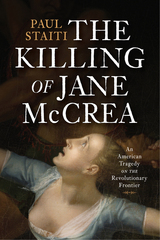 The Killing of Jane McCrea: An American Tragedy on the Revolutionary Frontier
Paul Staiti
Westholme Publishing, 2025 The killing of Jane McCrea on July 26, 1777, on the outskirts of a village in the northern Hudson Valley, would unexpectedly rupture the British advance from Canada that was meant to crush the American Revolution in one knockout blow. On that day, twenty-five-year-old McCrea, an unremarkable person preparing for an impending marriage, was assaulted, scalped, and killed by a group of Native Americans in the employ of British general John Burgoyne. Though the murder was but one of many civilian deaths in a fierce war zone, McCrea’s killing had far-reaching consequences for each of the three major parties involved in the Northern Campaign of 1777. In America, she became the great cause célèbre of the Revolution, the sympathetic female victim of the war symbolizing the righteousness of The Cause. In Britain, she was a human-rights tragedy that tarnished the polished surface of British honor and galvanized Whig politicians who shouted out her name in Parliament as an example of how low the nation had fallen. For Native peoples, recruited by both the British and the Americans, and caught in the middle of a war staged on ancestral grounds, McCrea’s killing was the opening salvo in a vicious chain of bloody retribution that led to the disintegration of the venerable Iroquois Confederacy and the obliteration of Native homelands. After the war, the nightmarish image of a young Jane McCrea slaughtered on the New York frontier would obsess white Americans who came to fear Native peoples as irredeemable savages. Her murder would help justify the expulsion of Indigenous tribes and open the doors for an expansionary United States that was fully intent on transforming the American continent into its own image.
The Killing of Jane McCrea: An American Tragedy on the Revolutionary Frontier by distinguished historian Paul Staiti undertakes for the first time a comprehensive investigation into McCrea’s life, death, and especially her long and strange afterlife. Using both visual arts and written records, the author reassembles the scattered fragments to illuminate a historical terrain long since shrouded in misinformation, mired in controversy, and relegated to mythology. Coming into view is a major portrait of the persons, cultures, actions, and motives that fatally converged on that hot July morning in 1777.
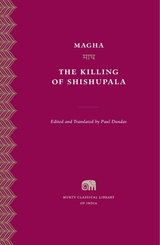 The Killing of Shishupala
Magha
Harvard University Press, 2017 A canonical great poem, or mahākāvya, of the Sanskrit canon, depicting a well-known episode from the Mahābhārata.
Magha’s The Killing of Shishupala, written in the seventh century, is a celebrated example of the Sanskrit genre known as mahākāvya, or great poem. This adaptation from the epic Mahābhārata tells the story of Shishupala, who disrupts Yudhishthira’s coronation by refusing to honor Krishna, the king’s principal ally and a manifestation of divinity. When Shishupala challenges Krishna to combat, he is immediately beheaded.
Magha, who was likely a court poet in western India, draws on the rich stylistic resources of Sanskrit poetry to imbue his work with unparalleled sophistication. He expands the narrative’s cosmic implications through elaborate depictions of the natural world and intense erotic sensuality, mixing myth and classical erudition with scenes of political debate and battlefield slaughter. Krishna is variously portrayed as refined prince, formidable warrior, and incarnation of the god Vishnu protecting the world from demonic threat.
With this translation of The Killing of Shishupala, presented alongside the original text in the Devanagari script, English readers for the first time gain access to a masterwork that has dazzled Indian audiences for a thousand years.
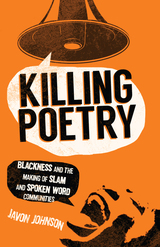 Killing Poetry: Blackness and the Making of Slam and Spoken Word Communities
Johnson, Javon
Rutgers University Press, 2017 Winner of the 2019 Lilla A. Heston Award
Co-winner of the 2018 Ethnography Division’s Best Book from the NCA
In recent decades, poetry slams and the spoken word artists who compete in them have sparked a resurgent fascination with the world of poetry. However, there is little critical dialogue that fully engages with the cultural complexities present in slam and spoken word poetry communities, as well as their ramifications.
In Killing Poetry, renowned slam poet, Javon Johnson unpacks some of the complicated issues that comprise performance poetry spaces. He argues that the truly radical potential in slam and spoken word communities lies not just in proving literary worth, speaking back to power, or even in altering power structures, but instead in imagining and working towards altogether different social relationships. His illuminating ethnography provides a critical history of the slam, contextualizes contemporary black poets in larger black literary traditions, and does away with the notion that poetry slams are inherently radically democratic and utopic.
Killing Poetry—at times autobiographical, poetic, and journalistic—analyzes the masculine posturing in the Southern California community in particular, the sexual assault in the national community, and the ways in which related social media inadvertently replicate many of the same white supremacist, patriarchal, and mainstream logics so many spoken word poets seem to be working against. Throughout, Johnson examines the promises and problems within slam and spoken word, while illustrating how community is made and remade in hopes of eventually creating the radical spaces so many of these poets strive to achieve.
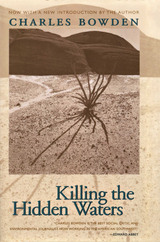 Killing the Hidden Waters
By Charles Bowden
University of Texas Press, 1985 In the quarter-century since his first book, Killing the Hidden Waters, was published in 1977, Charles Bowden has become one of the premier writers on the American environment, rousing a generation of readers to both the wonder and the tragedy of humanity's relationship with the land. Revisiting his earliest work with a new introduction, "What I Learned Watching the Wells Go Down," Bowden looks back at his first effort to awaken people to the costs and limits of using natural resources through a simple and obvious example—water. He drives home the point that years of droughts, rationing, and even water wars have done nothing to slake the insatiable consumption of water in the American West. Even more timely now than in 1977, Killing the Hidden Waters remains, in Edward Abbey's words, "the best all-around summary I've read yet, anywhere, of how our greed-driven, ever-expanding urban-industrial empire is consuming, wasting, poisoning, and destroying not only the resource basis of its own existence, but also the vital, sustaining basis of life everywhere."
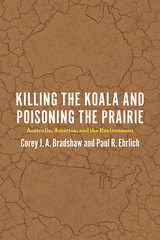 Killing the Koala and Poisoning the Prairie: Australia, America, and the Environment
Corey J. A. Bradshaw and Paul R. Ehrlich
University of Chicago Press, 2015 Though separated by thousands of miles, the United States and Australia have much in common. Geographically both countries are expansive—the United States is the fourth largest in land mass and Australia the sixth—and both possess a vast amount of natural biodiversity. At the same time, both nations are on a crash course toward environmental destruction. Highly developed super consumers with enormous energy footprints and high rates of greenhouse-gas emissions, they are two of the biggest drivers of climate change per capita. As renowned ecologists Corey J. A. Bradshaw and Paul R. Ehrlich make clear in Killing the Koala and Poisoning the Prairie, both of these countries must confront the urgent question of how to stem this devastation and turn back from the brink.
In this book, Bradshaw and Ehrlich provide a spirited exploration of the ways in which the United States and Australia can learn from their shared problems and combine their most successful solutions in order to find and develop new resources, lower energy consumption and waste, and grapple with the dynamic effects of climate change. Peppering the book with humor, irreverence, and extensive scientific knowledge, the authors examine how residents of both countries have irrevocably altered their natural environments, detailing the most pressing ecological issues of our time, including the continuing resource depletion caused by overpopulation. They then turn their discussion to the politics behind the failures of environmental policies in both nations and offer a blueprint for what must be dramatically changed to prevent worsening the environmental crisis.
Although focused on two nations, Killing the Koala and Poisoning the Prairie clearly has global implications—the problems facing the United States and Australia are not theirs alone, and the solutions to come will benefit by being crafted in coalition. This book provides a vital opportunity to learn from both countries’ leading environmental thinkers and to heed their call for a way forward together.
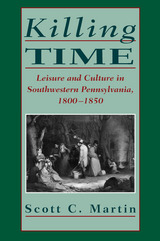 Killing Time: Leisure and Culture in Southwestern Pennsylvania, 1800–1850
Scott C. Martin
University of Pittsburgh Press, 1995
Scott C. Martin examines leisure as a “contested cultural space” in which nineteenth-century Americans articulated and developed ideas about ethnicity, class, gender, and community. This new perspective demonstrates how leisure and sociability mediated the transition from an agricultural to an industrial society. Martin argues persuasively that southwestern Pennsylvanians used leisure activities to create identities and define values in a society being transformed by market expansion. The transportation revolution brought new commercial entertainments and recreational opportunities but also fragmented and privatized customary patterns of communal leisure.
By using leisure as a window on the rapid changes sweeping through the region, Martin shows how southwestern Pennsylvanians used voluntary associations, private parties, and public gatherings to construct social identities better suited to their altered circumstances. The prosperous middle class devised amusements to distinguish them from workers who, in turn, resisted reformers’ attempts to constrain their use of free time. Ethnic and racial minorities used holiday observances and traditional celebrations to define their place in American society, while women tested the boundaries of the domestic sphere through participation in church fairs, commercial recreation, and other leisure activities.
This study illuminates the cultural history of the region and offers broader insights into perceptions of free time, leisure, and community in antebellum America.
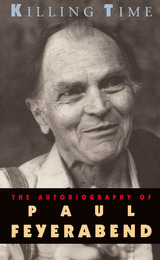 Killing Time: The Autobiography of Paul Feyerabend
Paul Feyerabend
University of Chicago Press, 1995 Killing Time is the story of Paul Feyerabend's life. Finished only weeks before his death in 1994, it is the self-portrait of one of this century's most original and influential intellectuals.
Trained in physics and astronomy, Feyerabend was best known as a philosopher of science. But he emphatically was not a builder of theories or a writer of rules. Rather, his fame was in powerful, plain-spoken critiques of "big" science and "big" philosophy. Feyerabend gave voice to a radically democratic "epistemological anarchism:" he argued forcefully that there is not one way to knowledge, but many principled paths; not one truth or one rationality but different, competing pictures of the workings of the world. "Anything goes," he said about the ways of science in his most famous book, Against Method. And he meant it.
Here, for the first time, Feyerabend traces the trajectory that led him from an isolated, lower-middle-class childhood in Vienna to the height of international academic success. He writes of his experience in the German army on the Russian front, where three bullets left him crippled, impotent, and in lifelong pain. He recalls his promising talent as an operatic tenor (a lifelong passion), his encounters with everyone from Martin Buber to Bertolt Brecht, innumerable love affairs, four marriages, and a career so rich he once held tenured positions at four universities at the same time.
Although not written as an intellectual autobiography, Killing Time sketches the people, ideas, and conflicts of sixty years. Feyerabend writes frankly of complicated relationships with his mentor Karl Popper and his friend and frequent opponent Imre Lakatos, and his reactions to a growing reputation as the "worst enemy of science."
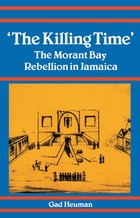 The Killing Time: The Morant Bay Rebellion in Jamaica
Gad Heuman
University of Tennessee Press, 1995 The Killing Time is the first full-length study of the Morant Bay Rebellion in Jamaica—an event that transformed the political system of the island and marked a watershed in Caribbean history.
On October 11, 1865, several hundred black people marched into the town of Morant Bay, capital of the sugar-growing parish of St. Thomas. They pillaged the police station for weapons and confronted the local militia. In the fighting that followed, the crowd killed eighteen and wounded thirty-one; seven of its own members also died. Over the next few days, additional disturbances spread throughout the parish. The brutal suppression of the rebellion led to the deaths of nearly five hundred, the recall and attempted trial of the governor in England, and the drastic reorganization of the island’s system of government.
For this meticulously detailed work, Gad Heuman draws on a variety of sources, including the massive evidence collected by the Jamaican Royal Commission, colonial office correspondence, missionary reports, and contemporary accounts. He explores in depth the political, social, and economic injustices that sparked the rebellion as well as the historical implications of the far-reaching changes it effected. The result is a book that will prove invaluable for those studying post-emancipation trends, the dynamics of colonial rule, and the nature of popular revolt.
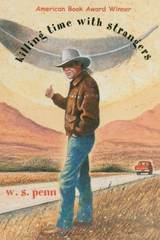 Killing Time with Strangers
W. S. Penn
University of Arizona Press, 2000 Young Pal needs help with his dreaming. Palimony Blue Larue, a mixblood growing up in a small California town, suffers from a painful shyness and wants more than anything to be liked. That's why Mary Blue, his Nez Perce mother, has dreamed the weyekin, the spirit guide, to help her bring into the world the one lasting love her son needs to overcome the diffidence that runs so deep in his blood. The magical (and not totally competent) weyekin pops in and out of Pal's life at the most unexpected times—and in the most unlikely guises—but seems to have difficulty setting him on the right path. Is there any hope for Palimony Blue? Don't ask his father, La Vent Larue; La Vent is past hope, past help, a city zoning planner and a pawn in the mayor's development plans who ends up crazy and in jail after he shoots the mayor in the—well, never mind. Better to ask Pal's mother, who summons the weyekin when she isn't working on a cradle board for Pal and his inevitable bride. And while you're at it, ask the women in Pal's life: Sally the preacher's daughter, Brandy the waitressing flautist, Tara the spoiled socialite. And be sure to ask Amanda, if you can catch her. If you can dream her. Using comic vision to address serious concerns of living, Penn has written a freewheeling novel that will surpass most readers' expectations of "ethnic fiction." Instead of the usual polemics, it's marked by a sense of humor and a playfulness of language that springs directly from Native American oral tradition. What more can be said about a book that has to be read to the end in order to get to the beginning? That Killing Time with Strangers is unlike any novel you have read before? Or perhaps that it is agonizingly familiar, giving us glimpses of a young man finding his precarious way in life? But when the power of dreaming is unleashed, time becomes negotiable and life's joys and sorrows go up for grabs. And as sure as yellow butterflies will morph into Post-It notes, you will know you have experienced a new and utterly captivating way of looking at the world.
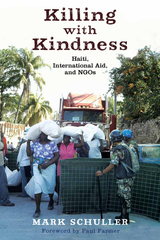 Killing with Kindness: Haiti, International Aid, and NGOs
Schuller, Mark
Rutgers University Press, 2012 Winner of the 2015 Margaret Mead Award from the American Anthropological Association and the Society for Applied Anthropology After Haiti’s 2010 earthquake, over half of U.S. households donated to thousands of nongovernmental organizations (NGOs) in that country. Yet we continue to hear stories of misery from Haiti. Why have NGOs failed at their mission?
Set in Haiti during the 2004 coup and aftermath and enhanced by research conducted after the 2010 earthquake, Killing with Kindness analyzes the impact of official development aid on recipient NGOs and their relationships with local communities. Written like a detective story, the book offers rich ethnographic comparisons of two Haitian women’s NGOs working in HIV/AIDS prevention, one with public funding (including USAID), the other with private European NGO partners. Mark Schuller looks at participation and autonomy, analyzing donor policies that inhibit these goals. He focuses on NGOs’ roles as intermediaries in “gluing” the contemporary world system together and shows how power works within the aid system as these intermediaries impose interpretations of unclear mandates down the chain—a process Schuller calls “trickle-down imperialism.”
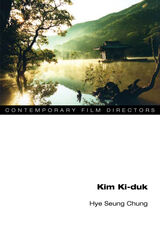 Kim Ki-duk
Hye Seung Chung
University of Illinois Press, 2012 This study investigates the controversial motion pictures written and directed by the independent filmmaker Kim Ki-duk, one of the most acclaimed Korean auteurs in the English-speaking world. Propelled by underdog protagonists who can only communicate through shared corporeal pain and extreme violence, Kim's graphic films have been classified by Western audiences as belonging to sensationalist East Asian "extreme" cinema, and Kim has been labeled a "psychopath" and "misogynist" in South Korea. Drawing upon both Korean-language and English-language sources, Hye Seung Chung challenges these misunderstandings, recuperating Kim's oeuvre as a therapeutic, yet brutal cinema of Nietzschean ressentiment (political anger and resentment deriving from subordination and oppression). Chung argues that the power of Kim's cinema lies precisely in its ability to capture, channel, and convey the raw emotions of protagonists who live on the bottom rungs of Korean society. She provides historical and postcolonial readings of victimization and violence in Kim's cinema, which tackles such socially relevant topics as national division in Wild Animals and The Coast Guard and U.S. military occupation in Address Unknown. She also explores the religious and spiritual themes in Kim's most recent works, which suggest possibilities of reconciliation and transcendence.
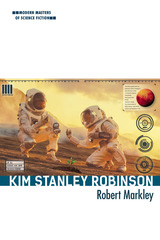 Kim Stanley Robinson
Robert Markley
University of Illinois Press, 2019 Award-winning epics like the Mars Trilogy and groundbreaking alternative histories like The Days of Rice and Salt have brought Kim Stanley Robinson to the forefront of contemporary science fiction. Mixing subject matter from a dizzying number of fields with his own complex ecological and philosophical concerns, Robinson explores how humanity might pursue utopian social action as a strategy for its own survival. Robert Markley examines the works of an author engaged with the fundamental question of how we—as individuals, as a civilization, and as a species—might go forward. By building stories on huge time scales, Robinson lays out the scientific and human processes that fuel humanity's struggle toward a more just and environmentally stable world or system of worlds. His works invite readers to contemplate how to achieve, and live in, these numerous possible futures. They also challenge us to see that SF's literary, cultural, and philosophical significance have made it the preeminent literary genre for examining where we stand today in human and planetary history.
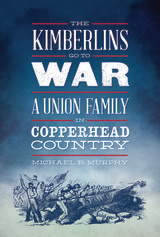 The Kimberlins Go to War: A Union Family in Copperhead Country
Michael B. Murphy
Indiana Historical Society Press, 2016 As July 7, 1861, dawned, war was in the air in Lexington, Indiana. The county seat of Scott County was abuzz with the latest news of the southern rebellion. The _Madison Daily and Evening Courier_ told of skirmishes between Federal troops and “secesh” forces at Harpers Ferry and Falling Waters, Virginia. Closer to home, word had come that William A. Sanderson had organized a new outfit, the Twenty-Third Indiana, and was recruiting throughout the Second Congressional District for men to join the regiment.
Although Scott County had been rife with sympathy and support for the South, answering the call to serve the Union cause from the county were Jacob T. Kimberlin, a twenty-one-year-old farmhand; his older brother, John J.; and his cousins, William H. H. Kimberlin, Benjamin F. Kimberlin, and James Stark. These five young men could not have known at the time that none of them would ever again see their homes. They only knew that the Kimberlins were going to war.
This is the story of the Kimberlin family that sent thirty-three fathers and sons, brothers and cousins, to fight for the Union during the Civil War. Ten family members were killed, wounded, or died of battlefield disease, a 30 percent casualty rate that is unmatched in recorded Scott County history. Of the 134 known deaths of Scott County soldiers, ten were members of the Kimberlin clan. Their feelings about the war come from forty letters to and from the battlefield that have survived to this day. The book examines such questions as: Were they fighting to save the Union or to free the slaves? How did they express grief over the loss of a brother? Did they keep up with their business and the women at home? And what did they think about “secesh” neighbors in southern Indiana who tried to undermine the Union?
Kimonos in the Closet
David Shumate
University of Pittsburgh Press, 2013 “These are enormously arresting, odd, wryly humorous, gripping poems. And the variety of subject matter is astounding. I don’t know when I’ve enjoyed reading a book so much.”—David Budbill
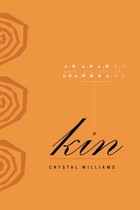 Kin
Crystal Williams
Michigan State University Press, 2000 In her first book-length collection of poetry, Crystal Williams utilizes memory and music as she lyrically weaves her way through American culture, pointing to the ways in which alienation, loss, and sensed "otherness" are corollaries of recent phenomena. Williams writes about being adopted by an interracial couple, a jazz pianist/Ford Foundry worker and a school psychologist, and how that has affected her development as an African American woman. She tries to work out the answers to many difficult questions: in what way do African American artists define themselves? What do they owe the culture and what does it owe them? To what extent does our combined national memory inform our individual selves? These poems are steeped in the black literary tradition. They are brimming over with the oral tradition that Williams perfected while spending years on the poetry "slam" circuit. This, combined with her musical upbringing, give the collection not only a sense of urgency, but also a rhythm, a breath all its own. Kin tackles not only racial issues, but also the troubling realities of violent acts that can occur, especially in our inner cities. But more importantly, the landscape that Williams creates offers readers an alternative to the racial/political dichotomy in which we all live. Overall, the book resonates with a message of reconciliation that will leave the reader uplifted.
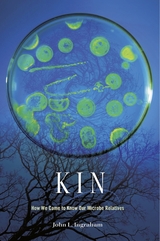 Kin: How We Came to Know Our Microbe Relatives
John L. Ingraham
Harvard University Press, 2017 Since Darwin, people have speculated about the evolutionary relationships among dissimilar species, including our connections to the diverse life forms known as microbes. In the 1970s biologists discovered a way to establish these kinships. This new era of exploration began with Linus Pauling’s finding that every protein in every cell contains a huge reservoir of evolutionary history. His discovery opened a research path that has changed the way biologists and others think about the living world. In Kin John L. Ingraham tells the story of these remarkable breakthroughs. His original, accessible history explains how we came to understand our microbe inheritance and the relatedness of all organisms on Earth.
Among the most revolutionary scientific achievements was Carl Woese’s discovery that a large group of organisms previously lumped together with bacteria were in fact a totally distinct form of life, now called the archaea. But the crowning accomplishment has been to construct the Tree of Life—an evolutionary project Darwin dreamed about over a century ago. Today, we know that the Tree’s three main stems are dominated by microbes. The nonmicrobes—plants and animals, including humans—constitute only a small upper branch in one stem.
Knowing the Tree’s structure has given biologists the ability to characterize the complex array of microbial populations that live in us and on us, and investigate how they contribute to health and disease. This knowledge also moves us closer to answering the tantalizing question of how the Tree of Life began, over 3.5 billion years ago.
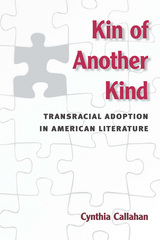 Kin of Another Kind: Transracial Adoption in American Literature
Cynthia Callahan
University of Michigan Press, 2010 "The study of transracial adoption has long been dominated by historians, legal scholars, and social scientists, but with the growth of the lively field of humanistic adoption studies comes a growing understanding of the importance of cultural representations to the social meanings and even the practices of adoption itself . . . This book makes a valuable contribution in showing how important the theme of adoption has been throughout the twentieth century in representations of race relations, and in showing that the adoption theme has served to challenge racial norms as well as uphold them."
---Margaret Homans, Yale University The subject of transracial adoption seems to be enjoying unprecedented media attention of late, particularly as white celebrities have made headlines by adopting children of color from overseas. But interest in transracial adoption is nothing new---it has long occupied a space in the public imagination, a space disproportionate with the number of people actually adopted across racial lines. Even before World War II, when transracial adoption was neither legally nor socially sanctioned, American authors wrote about it, often depicting it as an "accident"---the result of racial ambiguity that prevented adopters from knowing who is white or black. After World War II, as the real-world practice of transracial and international adoption increased, American literary representations of it became an index not only of the changing cultural attitudes toward adoption as a way of creating families but also of the social issues that informed it and made it, at times, controversial. Kin of Another Kind examines the appearance of transracial adoption in American literature at certain key moments from the turn of the twentieth century to the turn of the twenty-first to help understand its literary and social significance to authors and readers alike. In juxtaposing representations of African American, American Indian, and Korean and Chinese adoptions across racial (and national) lines, Kin of Another Kind traces the metaphorical significance of adoption when it appears in fiction. At the same time, aligning these groups calls attention to their unique and divergent cultural histories with adoption, which serve as important contexts for the fiction discussed in this study. The book explores the fiction of canonical authors such as William Faulkner and Toni Morrison and places it alongside lesser-known works by Robert E. Boles, Dallas Chief Eagle (Lakota), and Sui Sin Far that, when reconsidered, can advance our understanding both of adoption in literature and of twentieth-century American literature in general. Kin of Another Kind will appeal to students and scholars in adoption in literature, American literature, and comparative multiethnic literatures. It adds to the growing body of work on adoption in literature, which focuses on orphancy and adoption in the nineteenth and early twentieth centuries. Cynthia Callahan is Assistant Professor in the Department of English at Ohio State University, Mansfield.
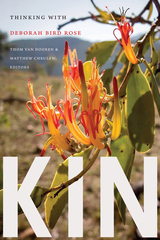 Kin: Thinking with Deborah Bird Rose
Thom van Dooren and Matthew Chrulew, editors
Duke University Press, 2022 The contributors to Kin draw on the work of anthropologist Deborah Bird Rose (1946–2018), a foundational voice in environmental humanities, to examine the relationships of interdependence and obligation between human and nonhuman lives. Through a close engagement over many decades with the Aboriginal communities of Yarralin and Lingara in northern Australia, Rose’s work explored possibilities for entangled forms of social and environmental justice. She sought to bring the insights of her Indigenous teachers into dialogue with the humanities and the natural sciences to describe and passionately advocate for a world of kin grounded in a profound sense of the connectivities and relationships that hold us together. Kin’s contributors take up Rose’s conceptual frameworks, often pushing academic fields beyond their traditional objects and methods of study. Together, the essays do more than pay tribute to Rose’s scholarship; they extend her ideas and underscore her ongoing critical and ethical relevance for a world still enduring and resisting ecocide and genocide.
Contributors. The Bawaka Collective, Matthew Chrulew, Colin Dayan, Linda Payi Ford, Donna Haraway, James Hatley, Owain Jones, Stephen Muecke, Kate Rigby, Catriona (Cate) Sandilands, Isabelle Stengers, Anna Tsing, Thom van Dooren, Kate Wright
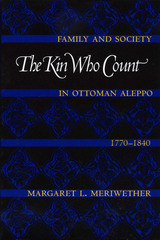 The Kin Who Count: Family and Society in Ottoman Aleppo, 1770-1840
By Margaret L. Meriwether
University of Texas Press, 1999 The history of the Middle Eastern family presents as many questions as there are currently answers. Who lived together in the household? Who married whom and for how long? Who got a piece of the patrimonial pie? These are the questions that Margaret Meriwether investigates in this groundbreaking study of family life among the upper classes of the Ottoman Empire in the pre-modern and early modern period. Meriwether recreates Aleppo family life over time from records kept by the Islamic religious courts that held jurisdiction over all matters of family law and property transactions. From this research, she asserts that the stereotype of the large, patriarchal patrilineal family rarely existed in reality. Instead, Aleppo's notables organized their families in a great diversity of ways, despite the fact that they were all members of the same social class with widely shared cultural values, acting under the same system of family law. She concludes that this had important implications for gender relations and demonstrates that it gave women more authority and greater autonomy than is usually acknowledged.
Kinaalda
Charlotte J Frisbie
University of Utah Press, 1993 Kinaaldá, the ceremony associated with the onset of a girl’s puberty, is an important Navajo rite within the Blessingway complex. Derived from the experiences of Changing Woman, the puberty ceremony has been passed through generations and continues to be observed throughout Navajoland. An acknowledged classic, Kinaaldá remains the most complete "outsider" account of this important ceremony. Charlotte Frisbie’s lucid description takes the reader through the four-day ritual, describing sequence, daily activities, restrictions, observances that include the girl’s race toward the east, and an analysis of the ceremonial music, complete with notations and translation. To give readers a better sense of why, Frisbie relates the beliefs and practices expressed in Kinaaldá to origin accounts conveyed by medicine people and to explanations and discussions with other Navajos.
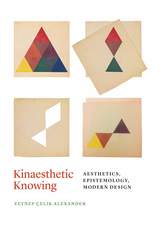 Kinaesthetic Knowing: Aesthetics, Epistemology, Modern Design
Zeynep Çelik Alexander
University of Chicago Press, 2017 Is all knowledge the product of thought? Or can the physical interactions of the body with the world produce reliable knowledge? In late-nineteenth-century Europe, scientists, artists, and other intellectuals theorized the latter as a new way of knowing, which Zeynep Çelik Alexander here dubs “kinaesthetic knowing.”
In this book, Alexander offers the first major intellectual history of kinaesthetic knowing and its influence on the formation of modern art and architecture and especially modern design education. Focusing in particular on Germany and tracing the story up to the start of World War II, Alexander reveals the tension between intellectual meditation and immediate experience to be at the heart of the modern discourse of aesthetics, playing a major part in the artistic and teaching practices of numerous key figures of the period, including Heinrich Wölfflin, Hermann Obrist, August Endell, László Moholy-Nagy, and many others. Ultimately, she shows, kinaesthetic knowing did not become the foundation of the human sciences, as some of its advocates had hoped, but it did lay the groundwork—at such institutions as the Bauhaus—for modern art and architecture in the twentieth century.
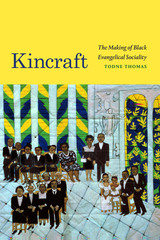 Kincraft: The Making of Black Evangelical Sociality
Todne Thomas
Duke University Press, 2021 In Kincraft Todne Thomas explores the internal dynamics of community life among black evangelicals, who are often overshadowed by white evangelicals and the common equation of the “Black Church” with an Afro-Protestant mainline. Drawing on fieldwork in an Afro-Caribbean and African American church association in Atlanta, Thomas locates black evangelicals at the center of their own religious story, presenting their determined spiritual relatedness as a form of insurgency. She outlines how church members cocreate themselves as spiritual kin through what she calls kincraft—the construction of one another as brothers and sisters in Christ. Kincraft, which Thomas traces back to the diasporic histories and migration experiences of church members, reflects black evangelicals' understanding of Christian familial connection as transcending racial, ethnic, and denominational boundaries in ways that go beyond the patriarchal nuclear family. Church members also use their spiritual relationships to navigate racial and ethnic discrimination within the majority-white evangelical movement. By charting kincraft's functions and significance, Thomas demonstrates the ways in which black evangelical social life is more varied and multidimensional than standard narratives of evangelicalism would otherwise suggest.
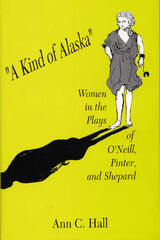 A Kind of Alaska: Women in the Plays of O'Neill, Pinter, and Shepard
Ann C. Hall
Southern Illinois University Press, 1993
In an effort to define what constitutes a feminist reading of literary works, Ann C. Hall offers an analytic technique that is both a feminist and a psychoanalytic approach, applying this technique to her study of women characters in the modern dramatic texts of Eugene O’Neill, Harold Pinter, and Sam Shepard.
This is the first study to treat these three writers in tandem, and while Hall uses the work of Jacques Lacan, Luce Irigaray, and other psychoanalytic feminist critics in her close readings of specific dramatic texts, she also brings in commentaries by critics, directors, performers, and historians. Her technique thereby provides us with a new and significant method for addressing female characters as written by male playwrights, a task that she argues is not only a valid and necessary part of feminist dramatic criticism but a part of theatrical production as well.
From Pinter’s play A Kind of Alaska, Hall extracts a metaphor for the patriarchal oppression of women, contextualizing such oppression through an examination of O’Neill’s madonnas, Pinter’s whores, and Shepard’s female saviors as they are represented in O’Neill’s Iceman Cometh, Long Day’s Journey into Night, and A Moon for theMisbegotten; Pinter’s Homecoming, No Man’s Land, Betrayal, and A Kind of Alaska; and Shepard’s Buried Child, True West, and A LieoftheMind.
Since the works of O’Neill, Pinter, and Shepard continue to be performed to popular acclaim, Hall hopes that a better understanding of the female characters in these plays will influence the performances themselves.
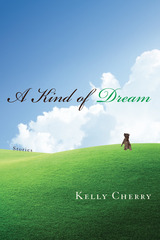 A Kind of Dream: Stories
Kelly Cherry
University of Wisconsin Press, 2014 Life is A Kind of Dream. So is the art we make in response to life. In A Kind of Dream, five generations of an artistic family explore the ups and downs of life, discovering that for an artist even failure is success, because the work matters more than the self.
The selves in this book include Nina, a writer, and her husband, Palmer, a historian, who, having settled into marriage and family life, are now faced with the bittersweetness of late life; BB and Roy, who make a movie in Mongolia; Tavy, Nina’s adopted daughter, a painter in her twenties who meets her birth mother for the first time; and Tavy’s young daughter, Callie, a budding violinist. Other vivid characters confront the awful fact of violence in America; try to cope with political ineptitude; and one devises his own code of sexual morality. Perhaps the most important character is Nina's dog, a salt-and-pepper cairn terrier of uncommon wisdom.
Fame, death, rash self-destruction, laughter, the excitement of making good art, love, marriage, being a mother, being a father, the appreciation of beauty, and always life—life itself, life in all its shapes and guises—it’s all here.
A Kind of Dream is the culminating book in a trilogy Kelly Cherry began with My Life and Dr. Joyce Brothers and The Society of Friends. Each book stands alone, but together they take us on a Dantean journey from midlife to Paradise. Cherry’s prose is hallmarked by lyric grace, sly wit, the energy of her intelligence, and profound compassion for and understanding of her characters. Set in Madison, Wisconsin, A Kind of Dream reveals a surprisingly wide view of the world and the authority of someone who has mastered her art. It is a book to experience and to reflect upon.
Best Books for General Audiences, selected by the American Association of School Librarians
Best Books for General Audiences, selected by the Public Library Reviewers
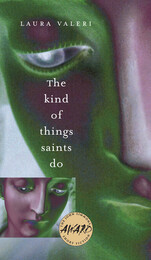 The Kind of Things Saints Do
Laura Valeri
University of Iowa Press, 2002 From the Anglo-American woman who makes a spectacle of herself trying to be Cuban in Miami to the estranged son leading his father on a hostile hike in New Mexico, Valeri's characters carry a heavy load of desire and anger. Proud, loud, and hungry for whatever comes next, each person desperately searches for an understanding that lessens his or her burden. The saints here are pure only in their anger, desperation, and desire to be loved, holy only in their quest to keep going.
These stories grow through subtle shifts—the bad becomes not so bad, the worst livable. It is the saintly moments of unexpected understanding that shape the collection: one gigolo's lover picks up another at a bus stop and they agree on his worthlessness, the love-worn man reminds the newly divorced woman of her physical power, the estranged son shelters his father from an unexpected storm.
Valeri navigates the reader through the bones and scars of those who ache with wanting something else and become a little older and a little wiser for it. The Kind of Things Saints Do is a collection of human imperfections and missed connections that grows into a kaleidoscope of aspiration and hope.
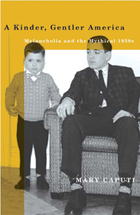 A Kinder, Gentler America: Melancholia and the Mythical 1950s
Mary Caputi
University of Minnesota Press, 2005 “In the Norman Rockwell paintings of the 1940s and 1950s,” wrote Newt Gingrich, “there was a clear sense of what it meant to be an American.” Gingrich’s words underline what Mary Caputi sees as a desire of the neoconservative movement to set a foundation for modern America that ennobles the past.
Analyzing these competing uses of the past, A Kinder, Gentler America reveals how longing for the era of “the greatest generation” actually exposes a disillusionment with the present. Caputi draws on the theoretical frameworks of Julia Kristeva and Walter Benjamin to look at how the decade has been portrayed in movies such as Pleasantville and Far from Heaven and delves further to investigate our disenchantment’s lost origins in early modernity through a reading of the poetry of Baudelaire. What emerges is a stark contrast between the depictions of a melancholic present and a cheerful, shiny past. In the right’s invocation of the mythical 1950s and the left’s criticism of the same, Caputi recognizes a common unfulfilled desire, and proposes that by understanding this loss both sides can begin to accept that American identity, despite chaos and confusion, lies in the here and now.
Mary Caputi is professor of political science at California State University, Long Beach, and is author of Voluptuous Yearnings: A Feminist Theory of the Obscene.
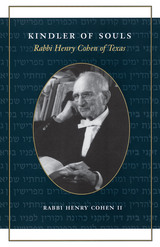 Kindler of Souls: Rabbi Henry Cohen of Texas
By Rabbi Henry Cohen II
University of Texas Press, 2007 In September 1930, the New York Times published a list of the clergy whom Rabbi Stephen Wise considered "the ten foremost religious leaders in this country." The list included nine Christians and Rabbi Henry Cohen of Galveston, Texas. Little-known today, Henry Cohen was a rabbi to be reckoned with, a man Woodrow Wilson called "the foremost citizen of Texas" who also impressed the likes of William Howard Taft and Clarence Darrow. Cohen's fleeting fame, however, was built not on powerful friendships but on a lifetime of service to needy Jews—as well as gentiles—in London, South Africa, Jamaica, and, for the last sixty-four years of his life, Galveston, Texas. More than 10,000 Jews, mostly from Eastern Europe, arrived in Galveston in the early twentieth century. Rabbi Cohen greeted many of the new arrivals in Yiddish, then helped them find jobs through a network that extended throughout the Southwest and Midwest United States. The "Galveston Movement," along with Cohen's pioneering work reforming Texas prisons and fighting the Ku Klux Klan, made the rabbi a legend in his time. As this portrait shows, however, he was also a lovable mensch to his grandson. Rabbi Henry Cohen II reminisces about his grandfather's jokes while placing the legendary rabbi in historical context, creating the best picture yet of this important Texan, a man perhaps best summarized by Rabbi Wise in the New York Times as "a soul who touches and kindles souls."
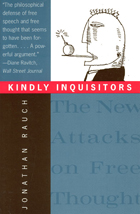 Kindly Inquisitors: The New Attacks on Free Thought
Jonathan Rauch
University of Chicago Press, 1993 Tracing attacks on free speech from Plato's Republic to America's campuses and newsrooms, Jonathan Rauch provides an engaging and provocative attack on those who would limit free thought by restricting free speech. Rauch explores how the system for producing knowledge works in a liberal society, and why it has now become the object of a powerful ideological attack. Moving beyond the First Amendment, he defends the morality, rather than the legality, of an intellectual regime that relies on unfettered and often hurtful criticism. Kindly Inquisitors is a refreshing and vibrant essay, casting a provocative light on the raging debates over political correctness and multiculturalism.
"Fiercely argued. . . . What sets his study apart is his attempt to situate recent developments in a long-range historical perspective and to defend the system of free intellectual inquiry as a socially productive method of channeling prejudice."—Michiko Kakutani, New York Times
"Like no other, this book restates the core of our freedom and demonstrates how great, and disregarded, the peril to that freedom has become."—Joseph Coates, Chicago Tribune
"The philosophical defense of free speech and free thought that seems to have been forgotten. . . . A powerful argument."—Diane Ravitch, Wall Street Journal
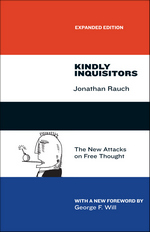 Kindly Inquisitors: The New Attacks on Free Thought, Expanded Edition
Jonathan Rauch
University of Chicago Press, 2014 “A liberal society stands on the proposition that we should all take seriously the idea that we might be wrong. This means we must place no one, including ourselves, beyond the reach of criticism; it means that we must allow people to err, even where the error offends and upsets, as it often will.” So writes Jonathan Rauch in Kindly Inquisitors, which has challenged readers for more than twenty years with its bracing and provocative exploration of the issues surrounding attempts to limit free speech. In it, Rauch makes a persuasive argument for the value of “liberal science” and the idea that conflicting views produce knowledge within society.
In this expanded edition of Kindly Inquisitors, a new foreword by George F. Will strikingly shows the book’s continued relevance, while a substantial new afterword by Rauch elaborates upon his original argument and brings it fully up to date. Two decades after the book’s initial publication, while some progress has been made, the regulation of hate speech has grown domestically—especially in American universities—and has spread even more internationally, where there is no First Amendment to serve as a meaningful check. But the answer to bias and prejudice, Rauch argues, is pluralism—not purism. Rather than attempting to legislate bias and prejudice out of existence or to drive them underground, we must pit them against one another to foster a more vigorous and fruitful discussion. It is this process that has been responsible for the growing acceptance of the moral acceptability of homosexuality over the last twenty years. And it is this process, Rauch argues, that will enable us as a society to replace hate with knowledge, both ethical and empirical.
“It is a melancholy fact that this elegant book, which is slender and sharp as a stiletto, is needed, now even more than two decades ago. Armed with it, readers can slice through the pernicious ideas that are producing the still-thickening thicket of rules, codes, and regulations restricting freedom of thought and expression.”—George F. Will, from the foreword
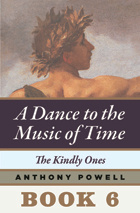 The Kindly Ones: Book 6 of A Dance to the Music of Time
Anthony Powell
University of Chicago Press, 1995 Anthony Powell’s universally acclaimed epic A Dance to the Music of Time offers a matchless panorama of twentieth-century London. Now, for the first time in decades, readers in the United States can read the books of Dance as they were originally published—as twelve individual novels—but with a twenty-first-century twist: they’re available only as e-books.
As volume six, The Kindly Ones (1962), opens, rumblings from Germany recall memories of Nick Jenkins’s boyhood and his father’s service in World War I; it seems clear that all too soon, uniforms will be back in fashion. The looming threat throws the ordinary doings of life into stark relief, as Nick and his friends continue to negotiate the pitfalls of adult life. Moreland’s marriage founders, Peter Templer’s wife—his second—is clearly going mad, and Widmerpool is, disturbingly, gaining prominence in the business world even as he angles for power in the coming conflict. War, with all its deaths and disruptions, is on the way. "Anthony Powell is the best living English novelist by far. His admirers are addicts, let us face it, held in thrall by a magician."--Chicago Tribune
"A book which creates a world and explores it in depth, which ponders changing relationships and values, which creates brilliantly living and diverse characters and then watches them grow and change in their milieu. . . . Powell's world is as large and as complex as Proust's."--Elizabeth Janeway, New York Times
"One of the most important works of fiction since the Second World War. . . . The novel looked, as it began, something like a comedy of manners; then, for a while, like a tragedy of manners; now like a vastly entertaining, deeply melancholy, yet somehow courageous statement about human experience."--Naomi Bliven, New Yorker “The most brilliant and penetrating novelist we have.”--Kingsley Amis
Kindness and Joy: Expressing the Gentle Love
Harold G Koenig
Templeton Press, 2006 This book includes guidance as well as information and inspiration. There are practical recommendations on how to perform acts of kindness in personal lives and at work, toward friends, colleagues, and family members—even with one's enemies. Suggestions are also offered on ways to encourage others to be kind so they, too, can experience the joy that results.
 The Kindness of Children
Vivian Gussin Paley
Harvard University Press, 1999 Visiting a London nursery school, Vivian Paley observes the schoolchildren's reception of another visitor, a handicapped boy named Teddy, who is strapped into a wheelchair, wearing a helmet, and barely able to speak. A predicament arises, and the children's response--simple and immediate--offers Paley the purest evidence of kindness she has ever seen.
In subsequent encounters, "the Teddy story" draws forth other tales of impulsive goodness from Paley's listeners. Just so, it resonates through this book as one story leads to another--taking surprising turns, intersecting with the narrative unfolding before us, and illuminating the moral meanings that children may be learning to create among themselves.
Paley's journey takes us into the different worlds of urban London, Chicago, Oakland, and New York City, and to a close-knit small town in Michigan's Upper Peninsula. Her own story connects those of children from nursery school to high school, and circles back to her elderly mother, whose experiences as a frightened immigrant girl, helped through a strange school and a new language by another child, reappear in the story of a young Mexican American girl. Thus the book quietly brings together the moral life of the very young and the very old. With her characteristic unpretentious charm, Paley lets her listeners and storytellers take us down unexpected paths, where the meeting of story and real life make us wonder: Are children wiser about the nature of kindness than we think they are?
The Kindness of Strangers
Tom Lutz
University of Iowa Press, 2021 Once again, Tom Lutz takes us to seldom-traveled corners of the world—the small towns of western Madagascar, the terraced rice fields in northern Luzon, the scattered homesteads on the Mongolian steppe, the hilltop churches on Micronesian islands, the riverside docks of Dhaka, Ethiopian weddings in Gondar, funeral pyres in Nepal, traditionalist karaoke bars in Bhutan—to bring us random reports of human kindness.
You may never visit these places, but Tom Lutz will do it for you. And while global media may serve up a steady diet of division, violence, oppression, hatred, and strife, The Kindness of Strangers shows that people the world over are much more likely to meet strangers with interest, empathy, welcome, and compassion.
The Kindness of Strangers: The Abandonment of Children in Western Europe from Late Antiquity to the Renaissance
John Boswell
University of Chicago Press, 1998 In The Kindness of Strangers, John Boswell argues persuasively that child abandonment was a common and morally acceptable practice from antiquity until the Renaissance. Using a wide variety of sources, including drama and mythological-literary texts as well as demographics, Boswell examines the evidence that parents of all classes gave up unwanted children, "exposing" them in public places, donating them to the church, or delivering them in later centuries to foundling hospitals. The Kindness of Strangers presents a startling history of the abandoned child that helps to illustrate the changing meaning of family.
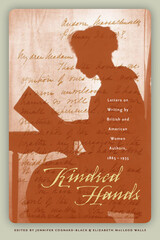 Kindred Hands: Letters on Writing by British and American Women Authors, 1865-1935
Jennifer Cognard-Black
University of Iowa Press, 2006 Kindred Hands, a collection of previously unpublished letters by women writers, explores the act and art of writing from diverse perspectives and experiences. The letters illuminate such issues as authorship, aesthetics, collaboration, inspiration, and authorial intent. By focusing on letters that deal with authorship, the editors reveal a multiplicity of perspectives on female authorship that would otherwise require visits to archives and special collections.
Representing some of the most important female writers of the nineteenth and early twentieth centuries, including transatlantic correspondents, women of color, canonical writers, regional writers, and women living in the British empire, Kindred Hands will enliven scholarship on a host of topics, including reception theory, feminist studies, social history, composition theory, modernism, and nineteenth-century studies. Moreover, because it represents previously unpublished primary sources, the collection will initiate new discussions on race, class, sexuality, ethnicity, and gender with an eye to writing at the turn of the twentieth century.
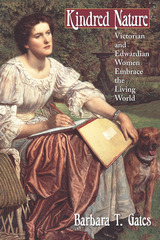 Kindred Nature: Victorian and Edwardian Women Embrace the Living World
Barbara T. Gates
University of Chicago Press, 1999 In Kindred Nature, Barbara T. Gates highlights the contributions of Victorian and Edwardian women to the study, protection, and writing of nature. Recovering their works from the misrepresentation they often faced at the time of their composition, Gates discusses not just well-known women like Beatrix Potter but also others—scientists, writers, gardeners, and illustrators—who are little known today.
Some of these women discovered previously unknown species, others wrote and illustrated natural histories or animal stories, and still others educated women, the working classes, and children about recent scientific advances. A number of women also played pivotal roles in the defense of animal rights by protesting overhunting, vivisection, and habitat destruction, even as they demanded their own rights to vote, work, and enter universities.
Kindred Nature shows the enormous impact Victorian and Edwardian women had on the natural sciences and the environmental movement, and on our own attitudes toward nature and human nature.
 Kindred Specters: Death, Mourning, and American Affinity
Christopher Peterson
University of Minnesota Press, 2007 The refusal to recognize kinship relations among slaves, interracial couples, and same-sex partners is steeped in historical and cultural taboos. In Kindred Specters, Christopher Peterson explores the ways in which non-normative relationships bear the stigma of death that American culture vehemently denies. Probing Derrida’s notion of spectrality as well as Orlando Patterson’s concept of “social death,” Peterson examines how death, mourning, and violence condition all kinship relations. Through Charles Chesnutt’s The Conjure Woman, Peterson lays bare concepts of self-possession and dispossession, freedom and slavery. He reads Toni Morrison’s Beloved against theoretical and historical accounts of ethics, kinship, and violence in order to ask what it means to claim one’s kin as property. Using William Faulkner’s Absalom, Absalom! he considers the political and ethical implications of comparing bans on miscegenation and gay marriage. Tracing the connections between kinship and mourning in American literature and culture, Peterson demonstrates how racial, sexual, and gender minorities often resist their social death by adopting patterns of affinity that are strikingly similar to those that govern normative relationships. He concludes that socially dead “others” can be reanimated only if we avow the mortality and mourning that lie at the root of all kinship relations. Christopher Peterson is visiting assistant professor of literature at Claremont McKenna College.
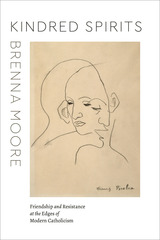 Kindred Spirits: Friendship and Resistance at the Edges of Modern Catholicism
Brenna Moore
University of Chicago Press, 2021 Kindred Spirits takes us inside a remarkable network of Catholic historians, theologians, poets, and activists who pushed against both the far-right surge in interwar Europe and the secularizing tendencies of the leftist movements active in the early to mid-twentieth century. With meticulous attention to the complexity of real lives, Brenna Moore explores how this group sought a middle way anchored in “spiritual friendship”—religiously meaningful friendship understood as uniquely capable of facing social and political challenges. For this group, spiritual friendship was inseparable from resistance to European xenophobia and nationalism, anti-racist activism in the United States, and solidarity with Muslims during the Algerian War. Friendship, they believed, was a key to both divine and human realms, a means of accessing the transcendent while also engaging with our social and political existence. Some of the figures are still well known—philosopher Jacques Maritain, Nobel Prize laureate Gabriela Mistral, influential Islamicist Louis Massignon, poet of the Harlem renaissance Claude McKay—while others have unjustly faded from memory. Much more than an idealized portrait of a remarkable group of Catholic intellectuals from the past, Kindred Spirits is a compelling exploration of both the beauty and flaws of a vibrant social network worth remembering.
|
|
